Baltic Transport
SUSTAINABILITY
Customers’ willingness to pay can turn the tide toward decarbonized shipping

TECHNOLOGY
Trends that will quench the maritime industry’s thirst for tech-led advancement

SUSTAINABILITY
Customers’ willingness to pay can turn the tide toward decarbonized shipping

TECHNOLOGY
Trends that will quench the maritime industry’s thirst for tech-led advancement
The Port of HaminaKotka is a versatile Finnish seaport serving trade and industry. The biggest universal port in Finland is an important hub in Europe and in the Baltic Sea region.
Welcome to the Port of HaminaKotka!

Another year is behind us, another one under our moving feet. The past 12 months wouldn’t be terrible if it weren’t for 24 February: rounding up last year’s transport highlights felt like watching a split-screen, with two distinct realities flashing in front of our eyes. From our industry’s perspective – minus the Russian aggression – the year 2022 was pretty decent as many positive developments took place, mainly out in the sea, but on land too. Logistics became a political thing in a more pronounced way than it has been thus far. In the current atmosphere, that’s perhaps a welcomed transformation. Politics and transport are gearing up to deal with whatever the future will bring (that is, whatever we geared it for in the past). Regarding the former, the piece from the Legal column explains what can be expected in the field of (scrutinising) state aid in the EU, an area of utmost interest to ports. Concerning the latter, we prepared a read in the Technology section that goes through groundbreaking tech trends that are already breaking the ground on how things are shipped globally. Sustainability hosts articles that spotlight other tendencies re-shaping our industry, most notably the shippers and customers’ increased interest in climatefriendly transportation or the push towards alternative green fuels (and here, I recommend a read from Technology about nuclear barges). The column also houses a very Baltic piece – on a Finnish group of companies set up with the intention to make shipping green many, many years before it became drip. Maritime includes a variety of reading proposals – on cold ironing, the evolving reefer market, minimising and hopefully eliminating once and for all the instances when seafarers die by entering enclosed spaces on board vessels, and the why’s and how’s of better cooperation for increased uptake of clean technologies in shipping. In a similar fashion to last year’s BTJ Trip in Sweden, we write in Events about Stena Line’s newest Baltic flagship, Stena Ebba , and her unique christening at the beginning of this year in Karlskrona (and, in general, 2022 brought about many more reasons for ferrying in the Baltic). In Collector’s corner, we stoop over the limitations of being an art admirer with millions to spend. Last but not least, Transport miscellany – and more precisely, as our Roving Editor Marek Błuś calculated, its 100 th edition! The entries were written in January, so this time no transport-booze stories (#dryjanuary), which doesn’t mean we didn’t prepare an exceptional selection of trivia! Modern wind-assisted propulsion being already a thing in the 1920s, seafaring/tough family life art from Norway, the Swedish army landing on the Åland Islands, and an aeroplane that flew from Finland to Australia (losing something subtle in the process).
I wish you nothing but a fantastic peruse!
Przemysław Myszka
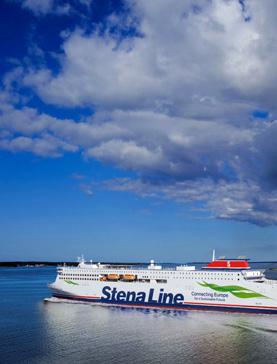
Publisher
BALTIC PRESS SP. Z O.O.
Address: ul. Pułaskiego 8 81-368 Gdynia, Poland office@baltictransportjournal.com
www.baltictransportjournal.com www.europeantransportmaps.com
Board Member BEATA MIŁOWSKA
Managing Director PRZEMYSŁAW OPŁOCKI
Editor-in-Chief PRZEMYSŁAW MYSZKA przemek@baltictransportjournal.com
Roving Editor MAREK BŁUŚ marek@baltictransportjournal.com
Proofreading Editor EWA KOCHAŃSKA
Contributing Writers
WADE BARNES, IGNACIO BENÍTEZ, DUSTIN BURKE, KUN CHEN, KAI-DIETER CLASSEN, ERIK DAGORN, CAMILLE EGLOFF, JOSE ESTEVE, PETER JAMESON, REZÁ KARIMPOUR, MIKKEL KROGSGAARD, ANDERS MADSEN, SEAN MCLAUGHLIN, SANJAYA MOHOTTALA, JONATHAN MUMMERY, ULRIK SANDERS, FITZWILLIAM SCOTT, TRISTAN SMITH, RIINU WALLS

Art Director/DTP DANUTA SAWICKA
Head of Marketing & Sales PRZEMYSŁAW OPŁOCKI po@baltictransportjournal.com

If you wish to share your feedback or have information for us, do not hesitate to contact us at: editorial@baltictransportjournal.com
Contact us: PRZEMYSŁAW OPŁOCKI tel.: +48 603 520 020
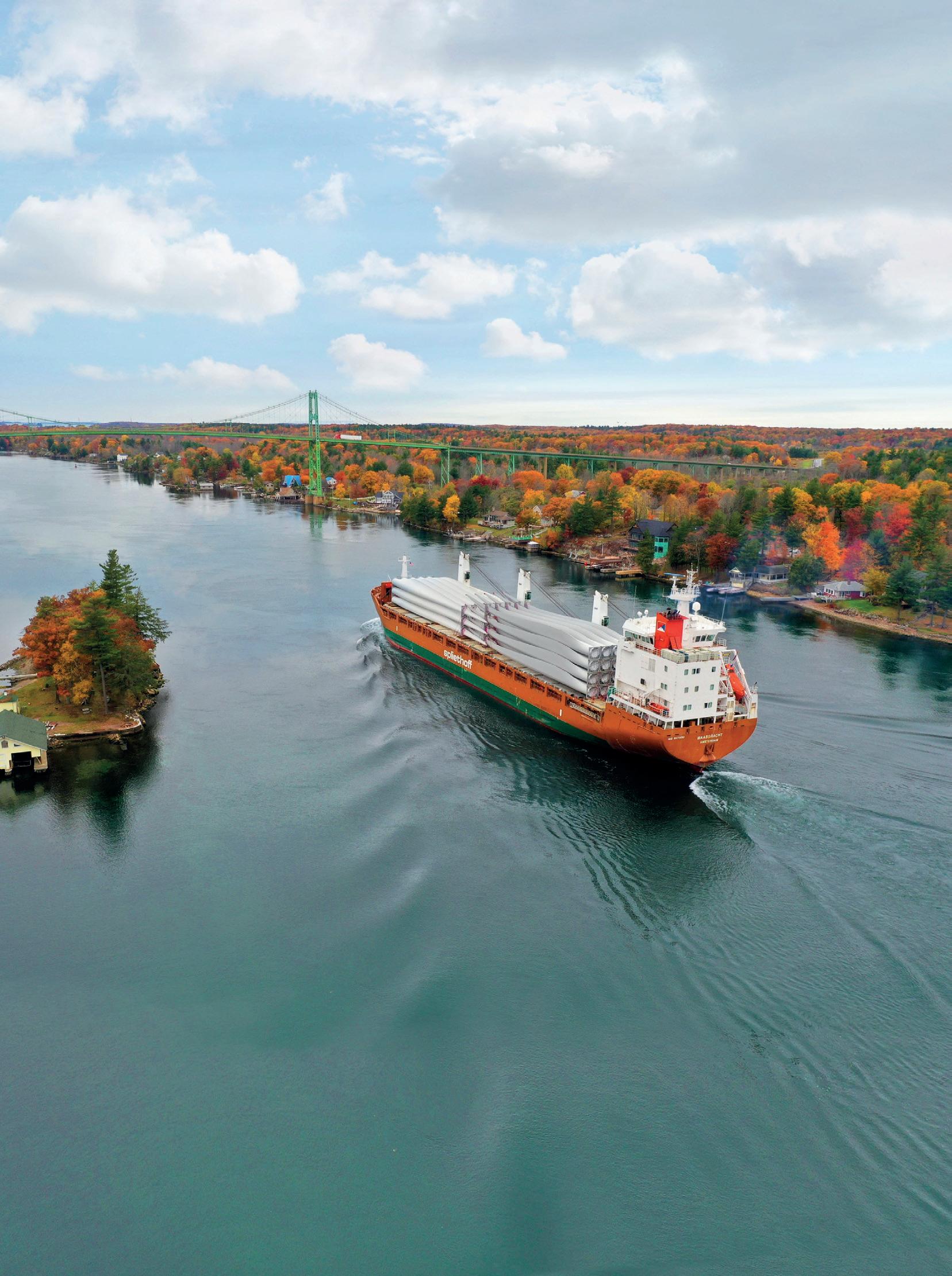
26 Sponsored by … a foreign government
– The international dimension of state aid law: targeting non-EU subsidies by Kai-Dieter Classen

Innovation Outlook. Sustaining Innovation for a Net-Zero Carbon Environment Enabled by a Digital Ecosystem 78 Events: Stena Ebba – christened by Przemysław Myszka and Przemysław Opłocki
22 According to the rules
Towards Ukraine’s recovery by Przemysław
Myszka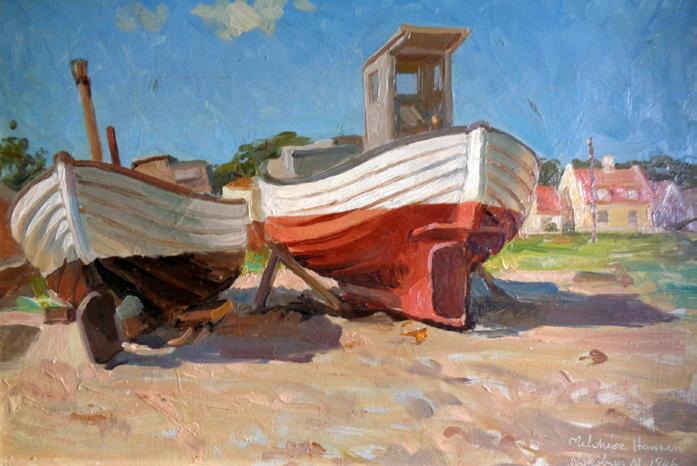
28 In this together –
The road to zero-emission shipping by Fitzwilliam Scott

30 Achieving tangible safety improvements – Enclosed space deaths under scrutiny by Fitzwilliam Scott

32 Many challenges, significant opportunities – Dynamar’s reefer market analysis & outlook by Jonathan Mummery

38 Birds of a feather (should) flock together –
Barriers to practical collaboration hinder cleantech uptake in shipping by Sean McLaughlin
40 Cold ironing for all
– The EALING project’s recommendations for a harmonised implementation framework for onshore power supply facilities in European ports by Rezá Karimpour and Ignacio Benítez
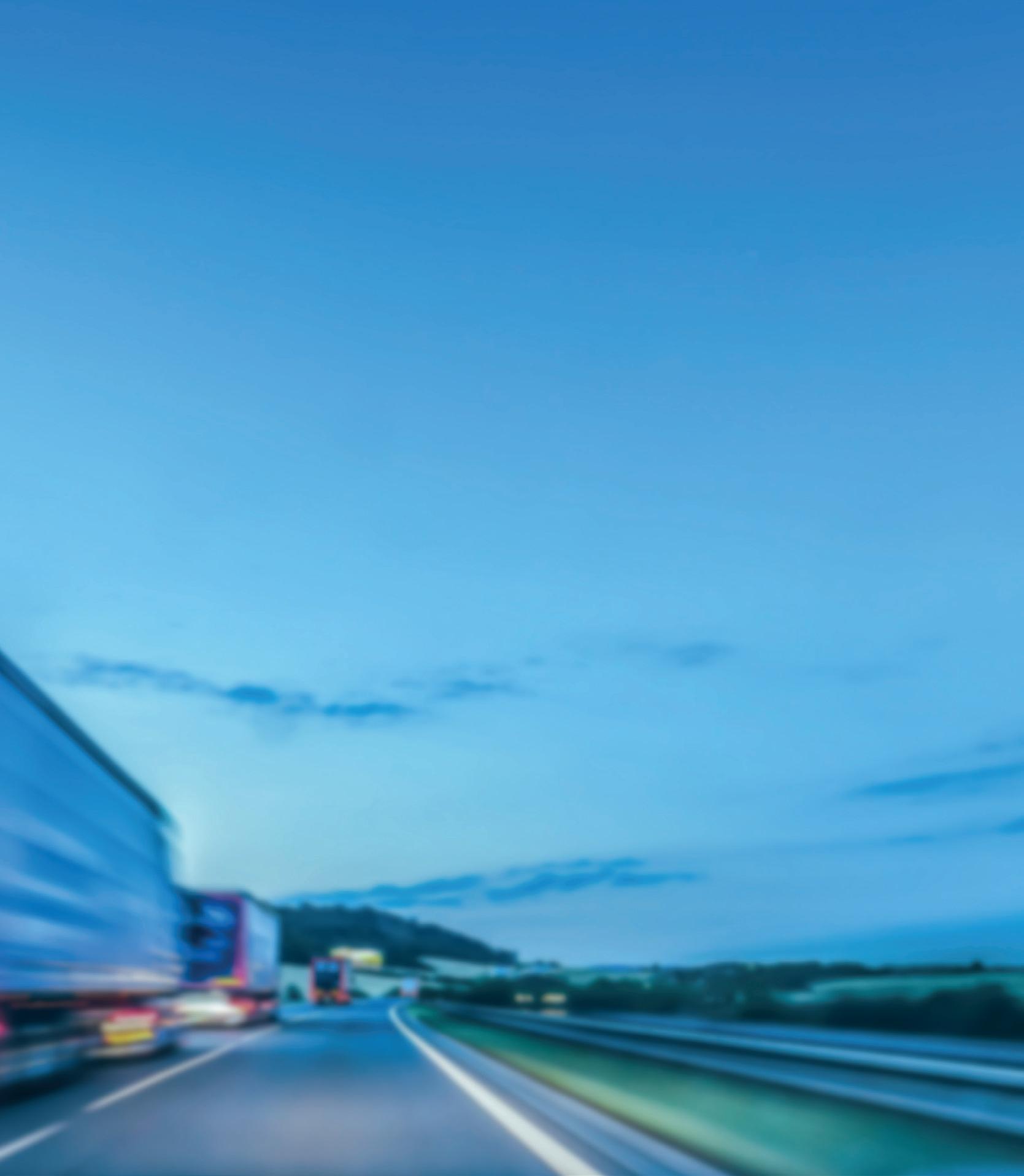
42 The environmental premium
– Customers’ willingness to pay can turn the tide toward decarbonized shipping by Peter Jameson, Camille Egloff, Ulrik Sanders, Mikkel Krogsgaard, Wade Barnes, Sanjaya Mohottala, Anders Madsen, and Dustin Burke
46 Aligning with 1.5 degrees: Managing the risks and opportunities for shipping and the companies in its value chain
by Tristan Smith50 Green – from the very beginning
– Meriaura on biofuels, carbon-neutral sea transportation, data-led shipping operations & emission reduction, one EU ETS for all, and a host of other climate-friendly initiatives
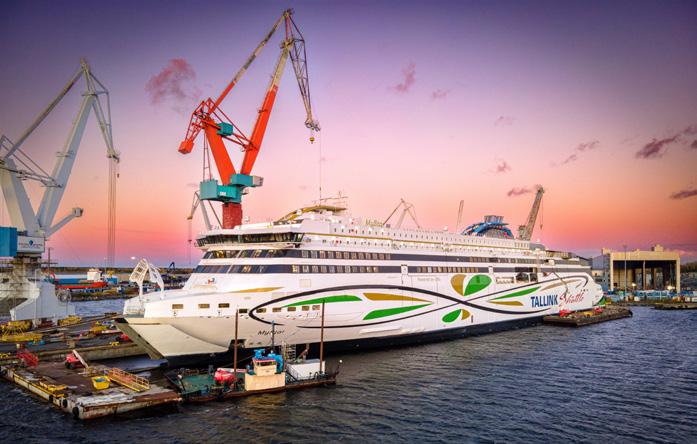
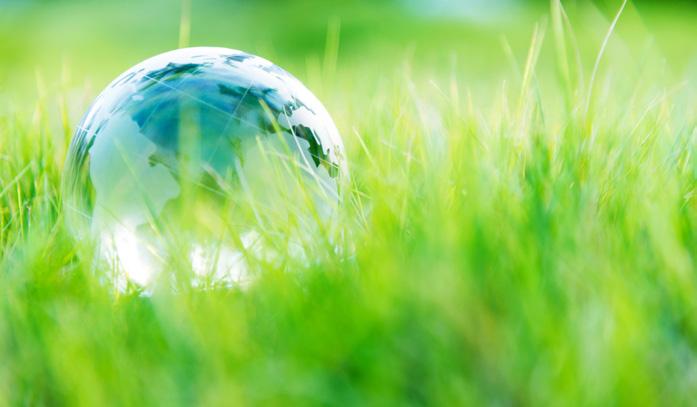 by Riinu Walls
by Riinu Walls
53 Baltic transport 2022 highlights by Przemysław Myszka
68 Plans for 2023 and current issues discussed during BPO’s meeting
68 Baltic Ports For Climate – OPS studies

69 BPO as a partner in the Baltic Supply Chains for the Baltic Sea Region project
70 Watershed of innovation
– Trends that will quench the maritime industry’s thirst for tech-led advancement by Ewa
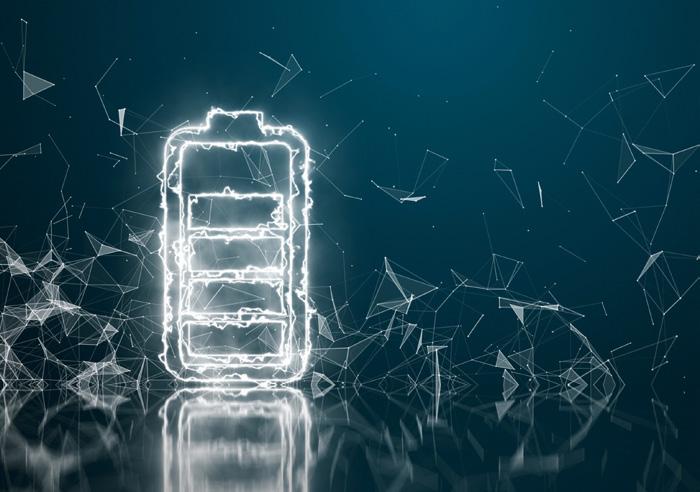
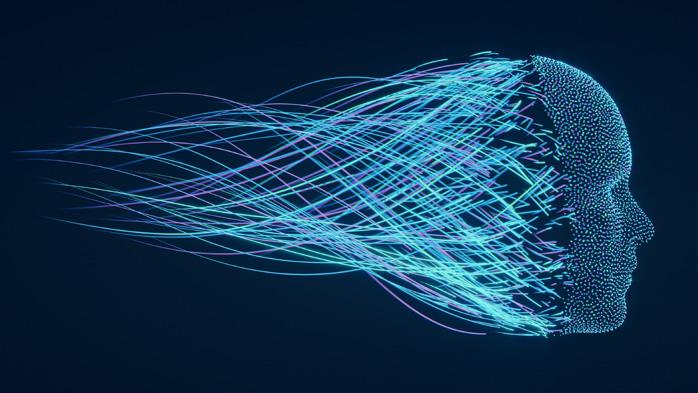
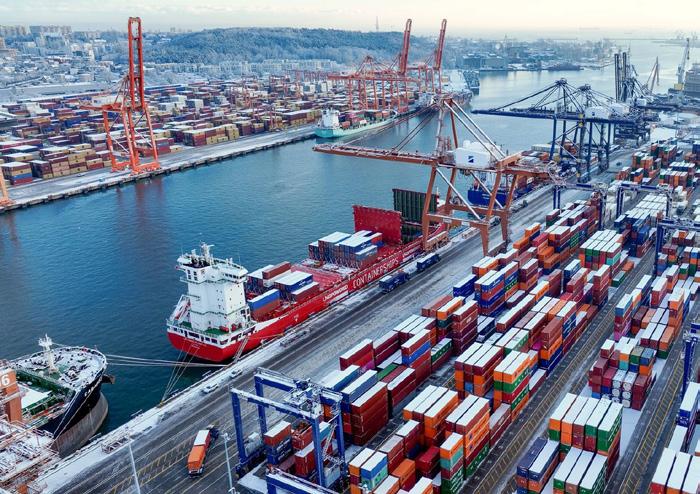 Kochańska
Kochańska
76 Ensuring safe innovation
– Technical qualification of nuclear power barge draws on both marine and land-side expertise by Jose
Esteve, Erik Dagorn, and Kun ChenGreenTech for Ports and Terminals Conference , 22/02/23, DE/Hamburg, greentech.ptievents.com
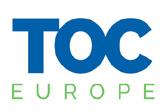
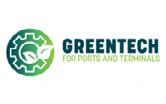
GreenTech will be joining our calendar of dedicated events for C-level port & terminal representatives as our first and long-awaited live edition for sustainable, smart ports. With nearly a decade of experience hosting flagship events for Ports and Terminals, PTI is pleased to launch this platform for our community to collaborate and share knowledge which will empower ports & terminals to decarbonise and strive for net zero status in the coming decades.
Transport Week 2023, 14-15/03/23, PL/Gdynia, www.transportweek.eu
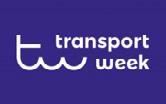
Expert speakers and a fantastic audience will once again tackle topics that shape the current face of the transport sector, from geopolitics, through market analysis to infrastructure development. Transport Week 2023 will feature the first edition of the Baltic Ports for Climate conference, organized in cooperation with the Baltic Ports Organization. The event will focus on an in-depth analysis of the progression of climate change in the Baltic Sea region, as well as showcase various climate-related projects currently underway in Baltic ports.
Container Terminal Automation Conference, 4-15/03/23, DE/Hamburg, ctac.ptievents.com

CTAC 2022 returned for its 6th edition in 2022, marking a comeback to live events for the container terminal industry. The event provided the best forum for networking, learning and knowledge sharing. CTAC will be back again in 2023, so register your interest to secure a super early bird discount before it’s too late!
Intermodal Freight Forum Europe , 11/04/23, intermodal.ptievents.com

In February 2022, PTI’s Intermodal Freight Forum Europe covered the pressing challenges and trends in intermodal freight transport – from data standardisation, to addressing the lack of capacity in ports and rail, as well as digitalisation and interconnectivity in the supply chain.
transport logistic , 9-12/05/23, DE/Munich, www.transportlogistic.de/en
transport logistic will once again be held in Munich from May 9 to 12, 2023. Being the world's leading trade fair for logistics, mobility, IT and supply chain management, it unites the entire industry. Ten halls at Messe München will be turned into a 110,000-m² hub for international innovations and contacts.
Smart Digital Ports of the Future , 16-17/05/23, NL/Rotterdam, sdp.ptievents.com
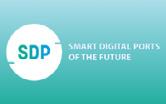
For the first time since 2019, Smart Digital Ports of the Future returned to a live, in-person event in May 2022 in Rotterdam. The event was attended by the industry’s leading innovators and representatives from the world’s smartest ports. In 2023, Smart Digital Ports of the Future will return to Rotterdam even bigger and better. Register your interest to cut a hefty discount off the event tickets when they go live.
ESPO Conference 2023, 1-2/06/23, DE/Bremen, www.espo.be

This year's edition, the 19 th overall in the history of the European Sea Ports Organisation, will combine broadening-the-lens sessions with hands-on debates – as always focusing on the most pivotal issues surrounding Europe's harbours.
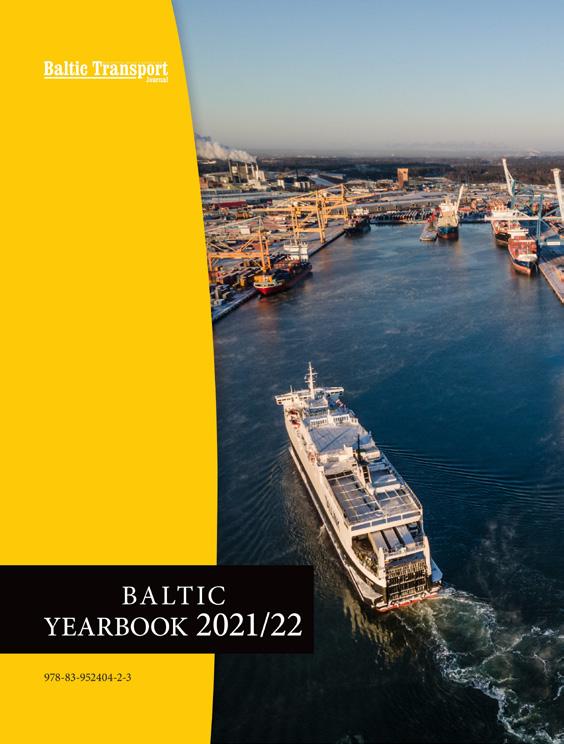
TOC Europe 2023, 13-15/06/23, NL/Rotterdam, tocevents-europe.com/en/home
With an unrivalled 40+ year heritage, here is the place to learn from and network with the world’s leading port decision-makers, policy experts, solution providers and more underneath one roof, enabling you to both supercharge your strategies and make your port operation visions a reality. Whether your focus is on adapting to the unpredictable economic climate and current shockwaves of the pandemic or simply embracing the exciting new technologies revolutionising the sector, join us on the road back towards growth at the essential container supply chain event.
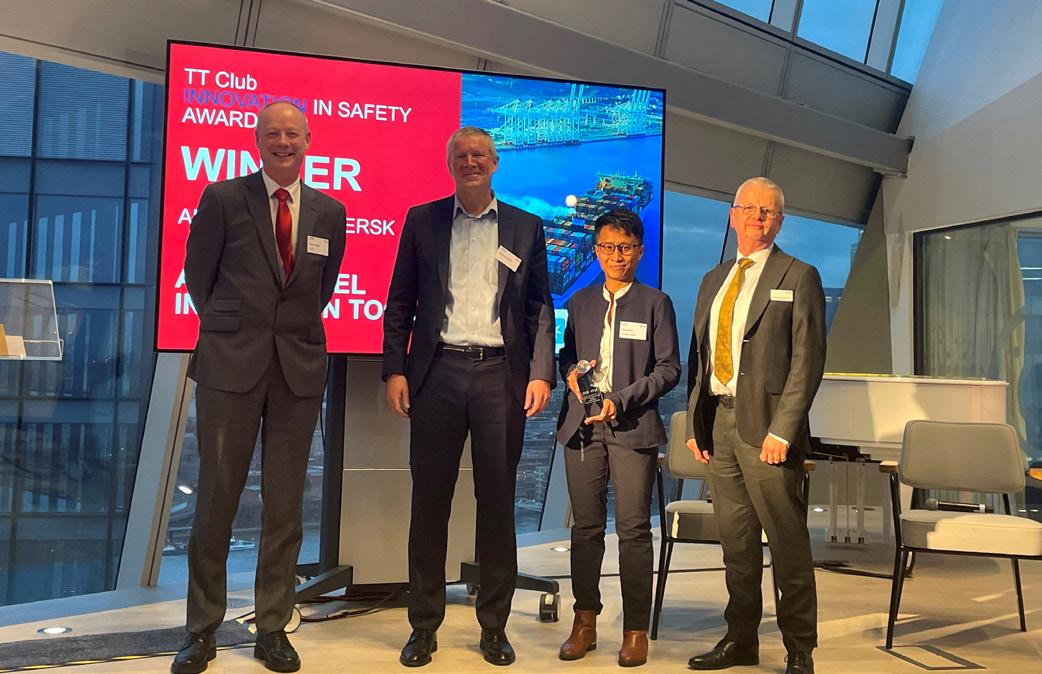
The winner of the prestigious safety award made possible by the collaboration of ICHCA International (ICHCA) and TT Club for the fifth time was announced as A.P. Møller – Mærsk for its APMT Vessel Inspection App. The winner and fellow short-listed entrants, Exis Technologies and Intermodal Telematics, were present at the ceremony to showcase their innovations. ICHCA and TT Club are delighted that the now well-established industry accolade with its strenuous process of entering and judging has once more celebrated safety innovation within the cargo handling and transport sector. There is now a real focus by organisations across the world on constantly searching for better solutions to the challenges of improving safety. At the first ‘live’ Innovation in Safety Awards ceremony for four years, held in London on 23 February 2023, all three finalists gave presentations of their ground-breaking initiatives, which through their variety of applications reflected the broad categories represented by the 20 award entrants drawn from 13 countries, and covering such diverse fields as digitalisation processes, learning and predictive data application as well as safer physical operations and equipment. The winning innovation was the APMT Vessel Inspection Mobile App. “We are delighted with this recognition for the safety app we have developed in-house in collaboration with Maersk,” said Jack Craig, Chief Operations Officer at APM Terminals. “The app provides a standardised digital platform for terminals to carry out vessel inspections, highlighting potential critical risk. It underpins our continuous focus on safety throughout our operations and is a great example of how we can smartly deploy technology to be even better at this.” Joining the APMT Vessel Inspection Mobile App on the shortlist and presenting its Hazcheck Detect innovation was Exis Technologies. Their Chief Information Officer Mike Durkin said, “Hazcheck Detect can be accepted by competing carriers, offering the same technical solution with similar rules and immediate outcomes for cargo screening. This is critically important to prevent misdeclared and undeclared cargo being accepted or cancelled and re-booked on alternate carriers. We are honoured to be short-listed for this award among a host of impressive entries.”
Intermodal Telematics BV (IMT) and its innovative Tank Container Temperature Monitoring made up the finalist’s podium. “Safety remains a very hot topic across the tank container transport sector,” said Bernard Heylen, Sales Director at IMT. “With our multiple temperature alerting system we offer a digital answer to the increasing demand to transport dangerous goods safely and monitor them remotely. We continue to work in the interests of improved service quality, and in maintaining social responsibility by preventing dangerous incidents.” Welcoming delegates (and online participants) to the awards ceremony and its accompanying safety seminar, ICHCA’s CEO Richard Steele underlined the aims of the ongoing innovation in campaigning safety, of which the awards are a critical part. “We, of course acknowledge safety innovation – especially at a time of increased operational demand on global cargo handling. However, this is much more than a celebration. Our mission is also about learning and thought leadership. Our priority is to share these ideas with a wide audience, improving how we all can commit to continuous improvement in health and safety. The award highlights direct evidence that our industry is actively innovating and changing.” Steele went on to recognise the awards sponsor, “If you want evidence of industry commitment, look no further than the TT Club. Not just sponsors in name but actively rolling up their sleeves and proactively driving an innovation and continuous improvement agenda.” TT Club has been a driving force behind these awards since their inception and is very much committed to improvement in safety as a whole. Peregrine Storrs-Fox, TT Club’s Risk Management Director, commented, “We are delighted that the award has continued to attract substantial interest around the globe and across the industry, again demonstrating a passion to enhance safety and dynamic action to make this reality. We are pleased to report that this passion is shared by such a diverse group of operators and suppliers, with this year also featuring submissions designed for environmental protection and monitoring.” The event announcing the winners was enhanced by a seminar which featured two discussion panel sessions on managing personal injury risk and minimising damage in cargo in transit with speakers from DP World, Rombit, ConnexBird and the Safetytech Accelerator as well as TT Club and ICHCA. The vastly experienced Morten Engelstoft delivered the keynote speech (a recording of the proceedings is available on request). “The Awards have been, and remain pivotal to our safety campaign,” emphasised Storrs-Fox. He furthered, “However through our own, and our colleagues at ICHCA’s cooperation with conference and exhibition organisers TOC, I am pleased to announce that the Safety Village initiative launched at TOC Europe last year will be repeated and enlarged at the same event in Rotterdam in June.” The TT Club Safety Village will once more be the venue for workshops and panel sessions throughout the three days of the TOC Europe event (13-15 June 2023). It will also provide opportunities for companies to showcase their innovative safety devices, processes and products. “Providing a focal point for discussion and promotion of such innovations at a leading industry forum will continue to benefit the cause of safety in the supply chain and the development of new solutions to manage significant risks,” concluded Storrs-Fox.
As such, the Swedish seaport has a new freight handling record. A total of 272k TEUs went through Helsingborg’s quays last year (-0.4% year-on-year). Container rail traffic totted up to 28k 20’ (+16.7% yoy) while passenger traffic advanced by 57% yoy to over 6.0m travellers.
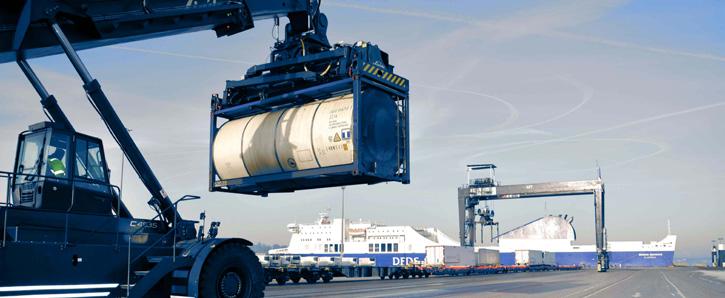
The German Baltic seaport took care of 6.42mt general cargo (+1.1% year-onyear, of which ferry cargo: 6.4mt, +1.2% yoy) and 1.24mt of goods in bulk (+2.2% yoy). A total of 190,928 trucks & trailers went through Kiel’s quays (-8.9% yoy), as well as 22,753 TEUs (-20.9% yoy), 20,199 vehicles (-26.2% yoy), and 6,535 busses (+34.2% yoy). Kiel’s 2022 rail intermodal traffic totted up to 28,930 units (-5.6% yoy). Passenger traffic advanced 149.5% on the 2021 result, with 2,341,798 travellers served by the Port of Kiel last year (including 836k cruise guests).
Exports totalled 11.28mt (+2% year-on-year) while imports – 4.99mt (+41.7% yoy). At the same time, cabotage traffic totted up to 734.2kt (+332% yoy). With 629,332 TEUs, the Finnish seaports’ 2022 container traffic surpassed the 2021 result by 6%.
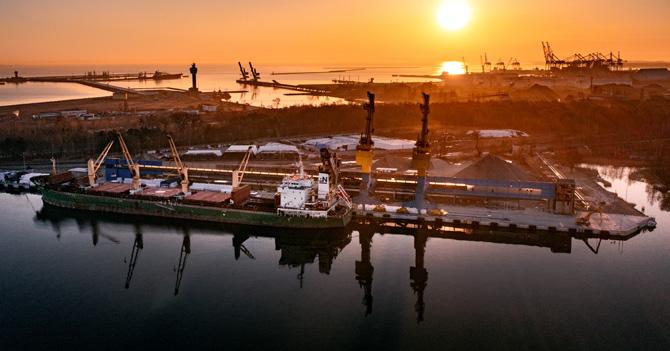
Turnover of coal noted the sharpest increase of 175% year-on-year to 13.2mt. Liquid bulk rose by 34.9% yoy to 25.5mt, general cargo by 0.4% yoy to 23.5mt (of which containerised: 20mt, down 2.9% yoy), and grains by 18.8% yoy to 1.9mt. The handling of other dry bulk goods contracted by 8.9% yoy to 4.1mt. Fewer containers went through Gdańsk quays, a decrease of 2.2% yoy to 2,072k TEUs. With 195k travellers, the seaport’s passenger traffic was up 18.9% on the 2021 result.
36.81mt handled in 2022 (+10.8% yoy)
The handling of liquefied natural gas rose the most – by 54.6% year-on-year to 4.44mt. The Polish ports also took care of 17.72mt of general cargo (-3.4% yoy; excl. timber), of which ferry cargo accounted for 14.46mt (-3.1% yoy), 7.48mt of liquid bulk (+42.5% yoy), 4.31mt of coal (+50.8% yoy), 3.31mt of other dry bulk goods (+11.2% yoy), 2.11mt of ores (+11.4% yoy), 1.65mt of grains (-7.6% yoy), and 229kt of timber (+92.6% yoy). Container traffic totted up to almost 75.4k TEUs (-8.2% yoy).
1,047,941 TEUs handled in 2022 (+57% yoy)
The entire general cargo segment rose by 10.5% year-on-year to 17.9mt. Turnover of liquid bulk also advanced last year, up 17.1% yoy to 8.2mt. On the other hand, dry bulk traffic contracted by 55.4% yoy to 10mt. In total, the Lithuania seaport took care of 36.1mt, noting a decrease of 20.8% on the 2021 result. Some 337k passengers (including 47k cruise vs 1,076 in 2021) went through Klaipėda’s quays in 2022.

885k TEUs handled in 2022 (+6.9% yoy)
The Swedish seaport’s rail container traffic advanced 12.4% year-onyear to 515k 20’. On the other hand, fewer ro-ro cargo units and vehicles were handled, down 0.7% yoy to 561k and 6.3% to 238k, respectively. Gothenburg’s passenger traffic, ferry & cruise, was up 84.8% on the 2021 result, totalling 1,414k travellers. The port also handled more liquid and dry bulk goods: +16.8% yoy to 22.3mt and +46.5 yoy to 375kt.
Tonnage-wise, the Estonian port took care of 2.12mt of containerised freight last year, an increase of 12% year-on-year. On the whole, however, Tallinn’s cargo traffic contracted by 20.7% yoy to 17.76mt, including 6.89mt of wheeled (ro-ro) freight (+6.2% yoy), 5.16mt of liquid bulk (-41.6% yoy), 2.95mt of dry bulk (-37.2% yoy), 611kt of break-bulk (+26.1% yoy), and 32kt of non-marine cargo (vs 1.0kt in 2021). International passenger traffic nearly doubled last year, advancing by 98.4% to 7.03m (including 172k cruise travellers, up 173% yoy). The Port of Tallinn’s domestic ferry traffic subsidiary TS Laevad carried some 2.3m passengers on the Saaremaa and Hiiumaa lines (+4.3% yoy).
With this result, the Finnish seaport struck its new all-time cargo traffic high. Unitised freight, accounting for the bulk of Helsinki’s flows, totted up to 12.6mt (+3.8% year-on-year), including 8.81mt of wheeled (ro-ro; +5.1% yoy) and 3.81mt of containerised cargo (+1% yoy). Unit-wise, 702,228 trucks & trailers (+5.7% yoy) and 491,793 TEUs (+5.4% yoy) went through Helsinki’s quays. The seaport also took care of 1.56mt of dry bulk (+13.2% yoy) and 879.5kt of break-bulk (+22.3% yoy). Passenger ferry traffic was up 113% on the 2021 result, counting 7,951,241 travellers. Cruise added 162,352 (vs 10,909 in 2021). In addition, 1,409,786 private vehicles were brought on board ferries.
7.61mt
yoy)
Dry bulk, the main commodity passing the Latvian seaport’s quays, rose by 8.2% year-on-year to 5.11mt. With 2.18mt (+22% yoy), general cargo came in second, followed by 318.2kt of liquid bulk (-41.7% yoy). The 7.61mt result is the port’s new all-time high. Liepāja also served 85,422 passengers (including 2.5k cruise), an increase of 91.6% on the 2021 figure.
Wheeled cargo, Rostock’s prime traffic, totted up to 17.7mt (-1.7% yearon-year), followed by 7.2mt of dry bulk (+4.3% yoy), 3.45mt of liquid bulk (+11.3% yoy), and 625kt of other general cargo (-8.1% yoy). The German Baltic seaport’s 2022 ro-ro traffic amounted to 597.1k units (+0.3% yoy), including 410k trucks (+0.7% yoy), 169k trailers (+5% yoy), and 18.1k railcars (-33.2% yoy). Rostock’s rail intermodal traffic totalled 130k units (+7.4% yoy). The port also welcomed 2.5m ferry (+47.1% yoy) and 294k cruise travellers (+194% yoy). Some 628k (+46.4% yoy) private vehicles were transported on board the ferries visiting Rostock.
23.52mt handled in 2022 (+9.4% yoy)
The handling of dry bulk, the Latvian seaport’s leading trade, advanced by 20.6% year-on-year to 14.5mt. With 7.55mt (+4.8% yoy), general cargo came in second, followed by 1.47mt of liquid bulk (-35.3% yoy). Riga’s container traffic rose by 10.8% yoy to 460,689 TEUs. The port also welcomed 75,737 passengers (vs 2,011 in 2011).
Ferries serving the Swedish seaport’s traffic also transported 372.5k private vehicles, an increase of 23.8% on the 2021 figure. Fewer trucks & trailers went through Trelleborg’s quays (-1.9% year-on-year to 855,949). Railcars by ferry traffic with Rostock also contracted (-33.2% yoy to 18.1k). On the other hand, the port’s rail intermodal traffic was up +4% yoy to 35,462 cargo units.
First, the Finnish Port of Pietarsaari’s heavy-duty cargo handling fleet is now bigger with a Liebherr LHM 500 mobile harbour crane, offering a 140t lifting capacity. Second, the subsidiary of KWH Logistics, operating in the Port of Vaasa’s Vaskiluoto Harbour, took hold of an LHM 600 mobile harbour crane. The €7.0m investment was produced by Liebherr in Rostock and delivered on 22 December 2022, increasing Blomberg Stevedoring’s Liebherr fleet to three. The brand-new machinery can lift 208t and up to 300t in tandem. Third, after an incident in the Kiel Canal that damaged the LHM 600 mobile harbour crane ordered by the Port of Esbjerg, the manufacturer delivered an LHM 800 High Rise (HR) on short notice instead. Thus, the Danish seaport now operates two LHM 800 (the first was handed over in 2019), capable of tandem lifts to 616t. The HR version offers 92 m of lifting capacity. Liebherr said at the beginning of January 2023 that a new LHM 600 would also be delivered as soon as possible. The latest LHM 800 increased Esbjerg’s Liebherr fleet to seven machines. Fourth, Liebherr supplied the Salerno Container Terminal (SCT) with a mobile harbour crane of the HR version of LHM 600. The 58 m outreach machine with twin-lift spreaders offers a 2 x 32.5t capacity. “The new crane is outfitted with a tower extension of 12 metres. Cranes of this variety benefit from a better view of the cargo/containers thanks to a higher cabin, which is at 37.1 metres in case of the new crane. The pivot point is also higher, allowing for larger ships to be served,” the manufacturer highlighted in a press release. Liebherr also underscored the speed at which the delivery was executed – the order was placed in November last year, with SCT accommodating the LHM 600 HR on 29 December 2022. The newest piece of heavy-duty equipment joined SCT’s two other LHM 600s and two LHM 800s, both HR. Lastly, before the end of this year’s January, EUROGATE shared that its Container Terminal Wilhelmshaven (CTW) will receive two automated dual trolley ship-to-shore from Liebherr (alongside remote operator stations). The cabinless gantries will have a primary outreach of 73 m, a lift height of 54.5 m, a span of 30.48 m, and an operational backreach with a secondary trolley of 26 m. “Designed for tandem operation, the primary trolley delivers containers automatically to the pinning platform. The containers rest on frames whilst the twist locks are removed. Once the pinning personnel leave the platform, they activate the secondary trolley, which automatically delivers the container to the land side AGVs [automated guided vehicles],” Liebherr Container Cranes explained in a press brief.

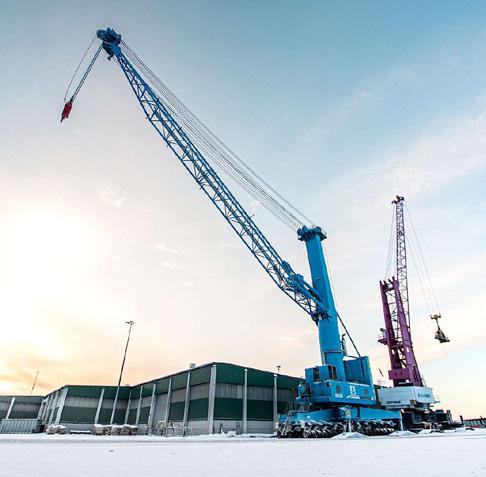
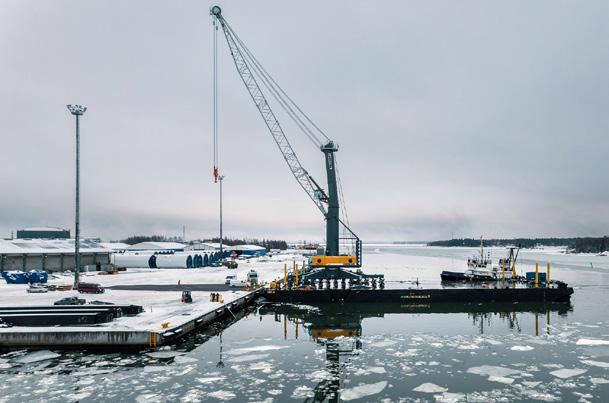
The PSA-operated container terminal from Gdańsk has ordered 20 automated sideloaded stacking cranes for the under-construction 1.7m TEUs/year expansion. The machinery will offer a span of 32 m and two cantilevers of 8.5 m in length each. The lifting height will be 1-over-6. The cranes’ structures will consist of a double girder gantry with Künz’s patented trolley, equipped with a 4-drum hoist with direct outgoing ropes to the headblock. The headblock will be, in turn, equipped with micro motion, allowing for fine positioning in the trolley and crane travel direction. The system also corrects a possible skew. ABB will supply the electrical equipment, including automation. The ABB technology consists of 3D laser systems with cameras that allow loading and unloading automatically in the truck area and the container stack. After collaborating on many stacking crane projects for endloaded terminals, ABB and Künz will now deliver the first equipment for a sideloaded terminal in Europe. The cranes will be delivered in several phases beginning in early 2024. The final cranes will be completed by the end of H1 2025. The manufacturer plans to go live on the terminal in Q2 of 2024.
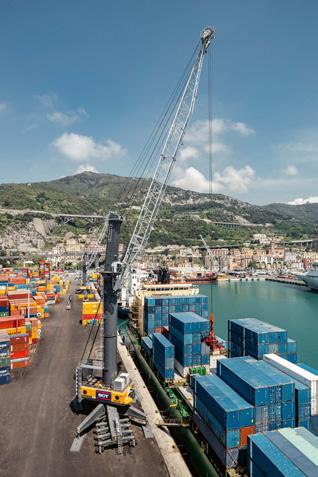
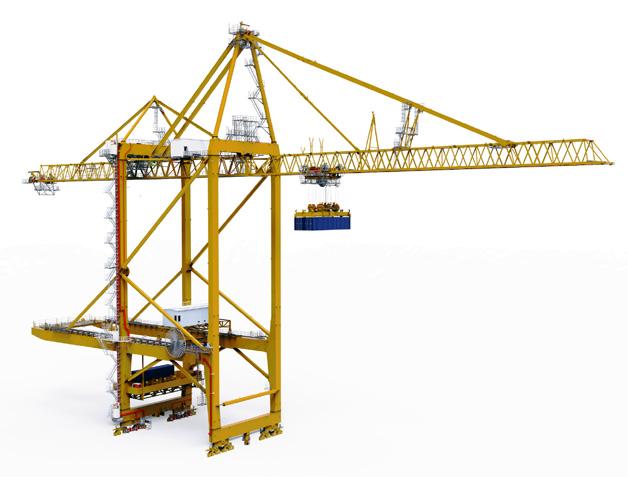
Lotus Demolition has started tearing down the 1960-commissioned facility, used as a passenger terminal for high-speed vessels sailing to Tallinn since the 1990s. The demolition of the terminal, designed initially as a warehouse (hence its name meaning “warehouse” in Finnish), will be completed by early July this year. Waste will be transported from the site outside ship unloading hours to minimise the disturbance caused by the demolition to the harbour area and road network. Moreover, the Port of Helsinki underlined in a press release, “As much of the demolition waste as possible will be sorted and recycled. Steel and other metal waste will be directed to further use, and concrete structures free of detrimental elements will be refined to make earthwork materials. The climate impact of the demolition site and the waste generated within, or the carbon footprint of the site, will be calculated to determine the best methods for emission reduction and the environment.” Makasiiniranta, the area housing the Makasiini Terminal, will undergo changes when passenger traffic from the South Harbour is transferred to Katajanokka and the West Harbour following the port development programme. The City of Helsinki is planning to develop the site with an architecture and design museum, likewise a beachfront boulevard.
Scandinavian Biogas’ SEK760m investment (about €68m) will have a production capacity of 120GWh, catering to the transport sector (maritime & heavy overland). The facility will be erected by the Portuguese Efacec and the Swedish Multibygg in Mönsterås in southeastern Sweden. The Swedish arm of Wärtsilä will provide the gas upgrade and liquefaction technology. Local farmers initiated the manure-fed biogas project in Mönsterås in 2016, with Scandinavian Biogas getting involved two years ago. The parties formed a jointly-owned company responsible for designing, building, and managing the planned biogas plant. The Swedish Environmental Protection Agency’s Climate Leap Initiative granted the project SEK154m (€13.8m) in economic support in 2021. “The biogas project in Mönsterås will be the first in line of the projects that we will develop in collaboration with local farmers. We believe that local ownership is important, to make sure that parts of the future revenues also remain local. The benefits of liquefied biogas with manure as feedstock are obvious and enable a green transition for locally produced food products as well as for heavy transports. This is another important step for us at Scandinavian Biogas towards our long-term vision of a total production capacity of 3.0TWh by the year 2030,” Matti Vikkula, CEO of Scandinavian Biogas, underscored.
The Kouvola Rail and Road Terminal, built by the City of Kouvola and operated by Railgate Finland in the country’s southeast, was officially commissioned. The 150k-TEUs/year handling capacity facility spans over 42 ha (including a 10 ha cargo yard) and offers a sidetrack that can accommodate trains 1,100 m in length. The investment, part of the EU TEN-T Core Network, was carried below the original budget, down €6.0m to €34m. The city provided approximately €23.6m, the EU about €6.8m, and the Finnish State around €3.5m. The developers of Kouvola RRT employed several sustainable measures while erecting the facility. These included using recycled asphalt and concrete, while crushed stone and surplus masses excavated from the rocky hill in the area were utilised as far as possible on the construction site. At the same time, the City of Kouvola says, “The effects of the RRT project on the surrounding nature and species have been regarded. A lot of waste brought to the area over time has been disposed of. Pathways were left for the local fauna, such as flying squirrels, to enable connections between different territories. The groundwater area has been considered in the selected solutions and future terminal operations.” The dry port is part of the area’s 170 ha big development site. Next to Kouvola RRT sits the road & rail 17 ha big Kouvola Cargo Yard, also owned by the city (and managed by Kouvolan Yritystilat).
The floating storage regasification unit (FSRU) Exemplar has been connected to the Finnish grid in the Port of Inkoo, ready to receive gas for distribution in Finland and the Baltics. The 291 m long, 150.9k m 3 capacity (68kt of liquefied natural gas, LNG, when fully laden, translating to some 1,050GWh) Exemplar has been chartered for ten years from the Texan Excelerate Energy. The floating terminal has an annual regasification capacity of 40TWh, which according to Gasgrid, exceeds the country’s yearly demand (25.1 TWh in 2021 per the company’s data). The FSRU, operated by Gasgrid Finland’s subsidiary Gasgrid Floating LNG Terminal Finland, is connected to the bidirectional Balticconnector pipeline, the other end of which is in the Estonian Paldiski. Excelerate Energy, through its recently formed Finnish subsidiary, Excelerate Finland Gas Marketing, has executed an agreement to sell commissioning volumes and regasification capacity rights during the commissioning phase. Through this agreement, Excelerate Finland will be able to provide natural gas to downstream customers in Finland and other Baltic countries. Gasgrid underlines that no Russian gas will be handled at the Inkoo terminal; moreover, the investment will help Finland to permanently phase out its dependency on Russian gas.
Ferus Smit’s shipyard in Westerbroek will construct four multipurpose 5,100 dwt freighters and four 7,999 dwt tankers. The former will be of the 1B ice-class Troll-Max design: for operating in the Trollhätte canal and on lake Vänern in Sweden. The latter will be of the 1A ice-class R-class, to be operated by Erik Thun Group’s Thun Tankers in coastal traffic in Northern Europe. Deliveries will start in October 2024. The four tankers come atop the two R-class ships ordered by Thun Tankers in the spring of 2022, slated for delivery by Ferus Smit in H1 2024.
At the end of last year, MT Højgaard Denmark completed the development of Galløkken and the second phase of the port expansion. For the past year and a half, MT Højgaard Denmark has worked on expanding the outer pier in the industrial part of Rønne’s seaport by 475 meters and establishing an additional 300-meter heavy cargo quay with 50k m2 of hinterland. The two tasks – and the expansion of Galløkken – resulted in a total of approximately 100k m2 of new port areas. The next stage of developing the Danish island seaport includes adding a 10 ha multi-purpose project area for, a.o., offshore projects. After regulatory considerations, the port authority plans a tender round for the project during 2023.
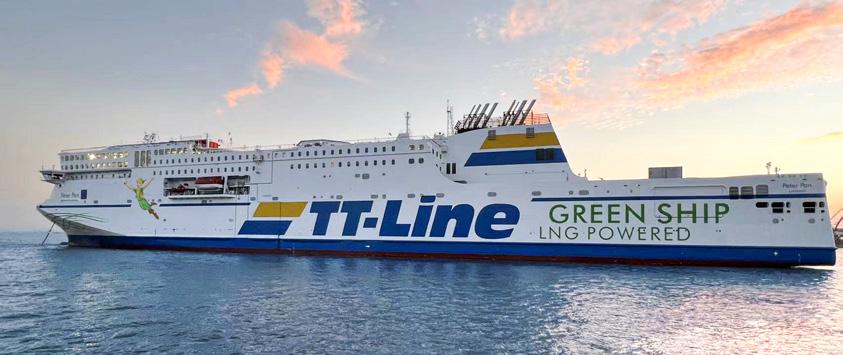
After 53 days of voyage from the Far East, Peter Pan called to Travemünde’s Skandinavienkai on 23 January 2023, from which she departed for Trelleborg on the night of 31 January. The new Peter Pan is a sister ship of the April 2022-introduced GT 56k Nils Holgersson. The gas-run ro-pax newbuilds offer room for 800 passengers and 4,000 lane metres for cargo. The duo also features several emission-reduction solutions, including energy-saving air conditioning, heat recovery, LED lighting, and an AI algorithm that advises the crew on the optimal parameters of operating the ferries. On her way from Yantai, Peter Pan carried construction machinery to Zeebrugge. In the Belgian port, she took 750 cars for unloading in Rostock. It is the sixth Peter Pan in TT-Line’s fleet’s history; the previous one was renamed Tinker Bell
The German Baltic ferry line from Lübeck will start sailing to and from the Swedish seaport in April this year. The company will link Karlshamn and the Lithuanian Klaipėda up to six times/week, with the crossing time at around 13 hr.
Stena Line’s newest E-Flexer ferry was deployed on the route in question on 2 January 2023, joining her sister ship Stena Estelle. Each of the two 240 m long newbuilds offers room for 1,200 passengers (across 263 cabins) and 3,600 lane metres for freight. Stena Line’s Gdynia-Karlskrona crossing is also served by Stena Spirit
On 5 April 2023, the Dutch-Icelandic Samskip will start a new sea container service, connecting the ports of Gothenburg, Aarhus, Runavík, Reykjavík, Grundartangi, Vestmannaeyjar, Rotterdam, and Cuxhaven.

As of 6 February 2023, the company’s trains travel between Köln and Malmö four instead of three times per week. The service, suitable for P400 trailers as well as for carrying dangerous goods and waste, connects the Köln Eifeltor and Mertz Transport terminals. Hupac says that taking the Köln-Malmö rail service spares the environment 1.4t CO2 emissions per road consignment.
The Swedish arm of ColliCare has, earlier than planned, set in motion its trailer train connecting Cremona in northern Italy with Skaraborg in central Sweden. Initially, the service was to kick off this spring; however, the first set departed on 4 February 2023. Hector Rail and BLS Cargo provide traction for the once-a-week, two-day transit time round-trip. Southbound transports mainly include paper & pulp, while in the opposite direction – eatables. According to the company, going by rail will emit 89% CO2e less than hauling the goods by road. Since 2017, ColliCare has been running another north-south weekly rail service: between the Italian Parma and the Norwegian Rolvsøy.
CRIST’s shipyard in Gdynia handed over L-317, the third hybrid for the Finnish domestic traffic ferry operator, on 20 January 2023. The 70.2 by 13.9 m ship offers room for 200 passengers and space for 52 private vehicles (or a smaller number of trucks) across the Nauvo-Korppoo route. The newbuild primarily sails on batteries, recharged in a manner of minutes while berthed. The Norwegian LMG Marin and the Polish StoGda Ship Design & Engineering codesigned the ferry. Previously, CRIST constructed for FinFerries Elektra (2017) and Altera (June 2022).
The subsidiary of the Gotland Company decided not to operate across the Nynäshamn-Visby-Rostock route in 2023. The shipping line lists high bunker prices and difficulties securing sufficient cargo volumes as the reasons behind the termination. In addition, because of the lower freight traffic, Hansa Destination didn’t receive the so-called eco bonus in its entirety – SEK26m instead of 74.2m – an aid announced by the Swedish Transport Administration in 2018 for companies that reduce road congestion, contribute to air depollution, and lower greenhouse gas emissions. Gotland Company said it will revaluate reinstalling the service in 2024.
Tallink & Silja Line’s newest ferry was put on the Helsinki-Tallinn crossing on 13 December 2022. The 212.4 by 30.6 m ro-pax – offering room for 2,800 passengers and 3,190 lane metres for cargo – served nearly 32k travellers during her first week, with the most coming from Finland (15,341) and Estonia (9,996). Rauma Marine Constructions built the GT 50,629, dual-fuel (gas-driven) ship. The ferry can connect to an onshore power supply. Tallink & Silja Line’s Helsinki-Tallinn route is served by MyStar, Megastar, and Star (which joined them on 1 January 2023 after undergoing technical maintenance). They offer 16 daily departures from Monday to Friday.
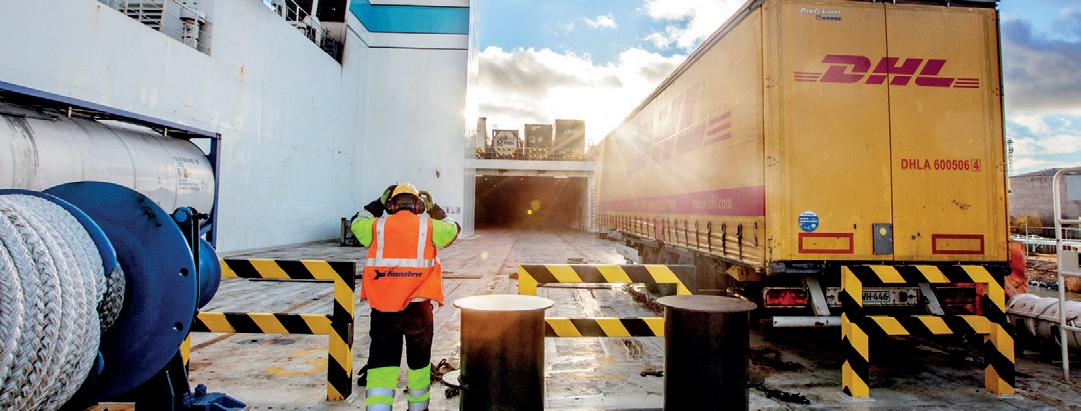
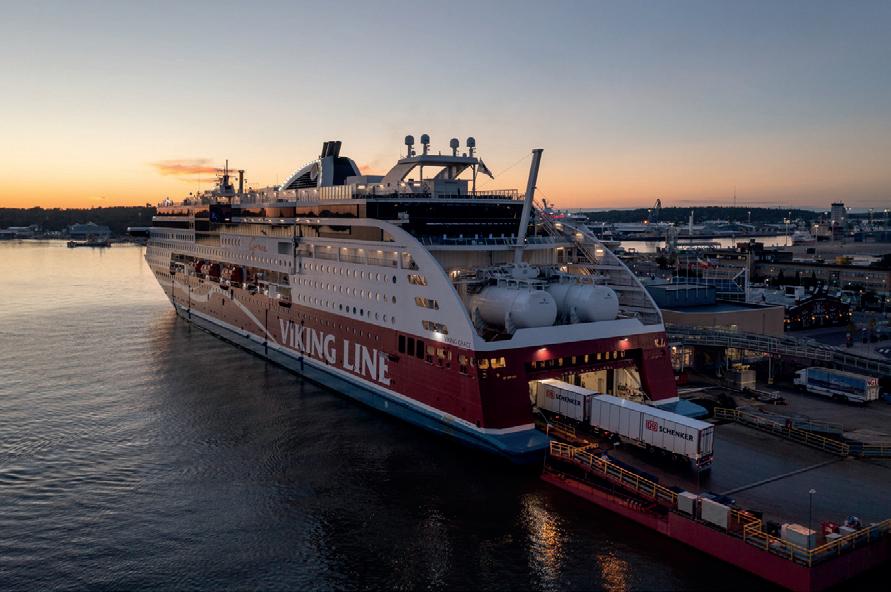


Viking Line sold (for €11.25m) the ferry to the Greek Aegean Sealines Maritime, who employed the 1980-built-in-Turku ship in the Aegean Sea. Rosella was lately serving the Kapellskär-Mariehamn service of Viking Line, with her last crossing taking place on 8 January 2023. Though kept in good condition, Rosella couldn’t further keep up with Viking Line’s policy on minimising its environmental impact. Faced with high bunker prices and the incoming emission trading, the company decided to dispose of older tonnage. Meanwhile, Viking Line denied that reflagging Viking XPRS to the Finnish flag had anything to do with putting her on the Kapellskär-Mariehamn route. As such, the service’s future remains unknown.
The first train, carrying electronic parts made in Vietnam, was launched on 31 December 2022. On its way to Central Asia, the set crossed the Chinese Pingxiang and Xi’an. The main reason behind establishing the new corridor is to halve the shipping time – from about 50 days by sea to 25 by rail.
Following the green light given by the General Administration of Customs of China for a road-to-rail shift, a train set of 25 reefers from Laos’ capital in Vientiane crossed the border in Boten-Mohan, arriving in Chongqing after a four-day transit time. Another fruit train (between Vientiane and the Chinese Huaihua) was put in motion shortly thereafter.
DB Cargo Eurasia has launched crossing per month, but the company plans to make it a weekly or biweekly round-trip in Q2 2023. The first train set, which departed in late December 2022, carried consumer & industrial goods (car parts, electronics, heating equipment, and machinery).

An agreement has been reached at the International Maritime Organization to lower the current 0.5% limit of sulphur content in marine fuel to 0.1%, effective 1 May 2025. Making Med a stricter Sulphur Emission Control Area (SECA) will, according to estimates, lower the air level of sulphur oxides by almost 80% and likewise cut harmful fine dust (PM2.5) emissions by nearly a quarter. These drops should prevent at least 1,000/year premature deaths and reduce new cases of childhood asthma by 2,000/year (the European Commission, COM, says that 300k/year premature deaths are attributable to air pollution in the EU). COM will also continue to support other initiatives by the littoral EU States to create additional emission control areas to cover all EU waters, including through regional sea conventions.

The European Commission (COM) has increased the budget from €330m to €616m and sped up the grant handover to projects tasked with supporting the transportation of troops and equipment along the TransEuropean Transport Network (TEN-T). “The results of our second call on military mobility under Connecting Europe Facility reflect the need of the European Union’s Member States to improve the dual use of our transport system. It was a highly competitive and oversubscribed call, with winning projects in 17 countries. I am pleased that some of the projects in Germany, Romania and Poland directly address improving the infrastructure on the Solidarity Lanes, our corridors used for Ukraine’s imports and exports,” Adina Vălean, Commissioner for Transport, underlined. Examples of the 35 projects include the upgrade of six rail bridges and the construction of two low-speed track sections for longer and heavier trains in Germany on the North Sea-Baltic TEN-T Core Corridor; the purchase of a multiuse hybrid icebreaker for the Port of Riga; the upgrade of two stretches of road along the Via Baltica close to the Lithuanian-Polish border; the modernisation of the Port of Constanța’s rail infrastructure; and the construction of a new bridge over the Prut River connecting Romania and Moldova.
The European Council has adopted its new General Approach towards the EU’s Trans-European Transport Network (TEN-T), opening the road for the European Commission to work on the revision of the TEN-T Regulation. Cargo traffic-wise, the new TEN-T calls for, among others, more transhipment terminals, improved handling capacity at freight terminals, and longer trains. The new TEN-T will also strengthen transport links with Ukraine and Moldova to increase the capacity of the so-called Solidarity Lanes used for imports & exports between the two and the EU. Another revision is praised by the European Sea Ports Organisation (ESPO), namely the new criterion of becoming a TEN-T Comprehensive Port. On top of the current volume criterion (0.1% of the EU total volume of port cargo), a port can also be part of the Comprehensive Network if “its total annual cargo volume (bulk and non-bulk) exceeds 500,000 tonnes and its contribution to the diversification of EU energy supplies and to the acceleration of the roll-out of renewable energies is one of the main activities of the port.” ESPO’s Secretary-General, Isabelle Ryckbost, commented, “[…] On average, 40% of the commodities going through Europe’s ports are sources of energy. Ports play an increasingly important role in ensuring both the supply of energy and the acceleration of the energy transition. This important role certain ports are playing cannot always be measured in tonnes or TEU. Yet it is essential to consider these ports in the TEN-T, being part of a critical and important supply chain.” The European Parliament is set to finalise its position at the beginning of this year, clearing the way to conclude the co-decision process and adopt the new TEN-T Regulation at the end of 2023. The new Regulation should be operational in 2024.
The ports of Cuxhaven, Eemshaven, Esbjerg, Humber, Nantes-Saint Nazaire, and Oostende have joined forces to speed up the green transition to meet Europe’s offshore wind deployment targets. “[…] the six of us signed a declaration stating that we will do everything we can to support Europe’s ambitious aims. In May, the politicians set the framework with the original declaration, and today we’ve started to act on the challenge they gave us all by raising sky-high the targets for offshore wind,” Dennis Jul Pedersen, the Port of Esbjerg’s CEO, commented on the occasion. The Esbjerg Declaration from May 2022 saw Belgium, Denmark, Germany, and the Netherlands pledge to deliver a minimum of 65GW of offshore wind energy capacity by 2030. “[…] In other words, Europe aims to install well over five times as much offshore wind in the next eight years as we have built during the previous twenty […]. This target puts great pressure on European wind ports because there is currently not enough port capacity to install all these offshore wind farms by the deadline,” said the signatories of the European Offshore Wind Port Declaration in a press release. The parties will share best practices, e.g., using the digital twin technology to increase handling capacity without physically enlarging their harbours. They will also collaborate on getting around the issue of, e.g., space shortages, such as when one port only has space for half a project, another may have room for the other.
• With the help of the Finnish Kempower and Soltech’s E-Mobility, Göteborgs Lastbilcentral (GLC) has commissioned the 15 fast-charging points facility in Gothenburg. The SEK8.0m investment (around €710k) offers 1.0MW of capacity. The station will aid GLC, which operates a fleet of 350 vehicles, in reducing its CO2 emissions by 70% by 2026 (vs 2010 levels; the Swedish transport company intends to become climate-neutral by 2035). Tomi Ristimäki, CEO of Kempower, said, “We are delighted to see this project go live. Commissioning one of Sweden’s largest private e-truck charging stations highlights the
power of bringing ambitious Nordic companies together. We see the electrification of buses and trucks developing fast in the coming years, and projects such as this are meaningful ways to electrify transport.”
In Denmark, E.ON Drive Infrastructure will erect two e-truck charging stations: in Hirtshals and Høje Taastrup. The former will be located at the Hirtshals Transport Center, next to the Port of Hirtshals, and the facility will feature three 400kW fast chargers into which six trucks can plug (with the option to upgrade the loading bays to 1.0MW). E.ON’s stations should be ready by the end of this year. •
• The French shipowner & operator will see its medium-range tanker Alcyone retrofitted with two 35 m tall and 5.0 m in diameter Flettner rotors. The 50k dwt, 2022-built ship, currently charter-working for TotalEnergies, will receive Norsepower’s Rotor Sails in Q4 2023 or Q1 2024. The sails will be provided by the manufacturer’s new production hub in China in December this year. According to calculations, the
‘Flettners’ will lower Alcyone ’s fuel consumption by an average of 8% on her crossing from South Korea to French Polynesia, “[…] with the potential for further savings using voyage optimisation reaching up to 2,000 tonnes of CO2 per annum,” says Norsepower. Another Finlandbased company, Deltamarin, has been contracted to provide Socatra with a conversion basic design package for installing the two rotors. •
• Together with Umeå Energi, the company has conducted a feasibility study on setting up a marine e-fuel production site at the Dåva cogeneration plant. According to the study, there are “excellent conditions” for establishing Sweden’s third electrofuel facility for the maritime sector in Umeå. All documents required for an investment decision are planned to be ready in 2024, with an expected production
of 100kt/year starting in 2026. The plant will see some 230kt/year of CO2 captured. “The transition to electrofuels in the maritime sector, which uses 300 million tonnes of fossil fuels every year, is very urgent. With electrofuel replacing today’s fossil fuels, carbon dioxide emissions can be reduced by over 90%,” Claes Fredriksson, Liquid Wind’s Founder & CEO, highlighted. •
• The Hamburg-based terminal operator has invested in the FERNRIDE tech start-up from Munich, granting it access to its sea container facility in Tallinn’s Muuga Harbour. There, FERNRIDE will trial its solution (for the first time in a container terminal) for the gradual automation of trucking operations. Specifically, trucks & tractors will be equipped with sensors and cameras to be remote-controlled via mobile networks. Teleoperators at a computer workstation resembling a vehicle cockpit
will take remote control of the machinery. They will receive and send targeted commands online by controlling the gas pedal, brakes, steering wheel, and joystick. FERNRIDE says the algorithms can be further trained using real-time operational data to roll out additional autonomous functions. The pilot will start in early 2023 to determine the technology’s operational reliability in automated container handling and to validate the solution’s viability for future business opportunities. •
• HHLA has commissioned Linde Engineering to build the facility within the premises of the test centre for hydrogen-powered port logistics at the Container Terminal Tollerort. The 2023-ready station will feature an energy-efficient 450 bar high-pressure ionic compressor to get heavy goods vehicles and terminal equipment fuelled with hydrogen. The new
infrastructure will be part of HHLA’s Clean Port & Logistics innovation cluster, established to test hydrogen-powered equipment in harbour technology and port logistics. The cluster is sponsored by Germany’s Federal Ministry of Transport and Digital Infrastructure as part of a national innovation programme for hydrogen and fuel cell technology. •
• The Estonian seaport and the country’s heat & energy producer have signed a memorandum of understanding to accelerate the development of the regional offshore wind energy (OWE) industry. The partners will jointly work on developing, constructing and maintaining OWE farms in the Baltics. The Port of Tallinn intends to add an installation quay in
its Paldiski South Harbour: the €53m investment will see the set-up of a 310 m long quay and adjacent 10 ha yard. Utilitas Wind is working on the Saare-Liivi OWE farm in the Gulf of Riga, to be ready in 2028. The first stage of development will include installing 80 turbines with 1,200MW total capacity (over 5.0TWh of expected annual electricity generation). •
• With the help of the California-headquartered Moffatt & Nichol, the Danish seaport has developed a digital twin, thanks to which Esbjerg will be able to handle 4.5GW of offshore wind components by 2025 (steadily increasing its capacity from today’s 1.5GW when the required changes are completed, a.o., rebuilding of various access roads). “There is no reason to think we’ll stop at 4.5GW, and the same goes for increasing
capacity in the rest of Europe. And that’s before we even start expanding the ports,” Dennis Jul Pedersen, the seaport’s CEO, underlined. His port has also signed the European Offshore Wind Port Declaration, in which it joined forces with the ports of Cuxhaven, Eemshaven, Humber, Nantes-Saint Nazaire, and Oostende to speed up the green transition to meet Europe’s offshore wind deployment targets. •
• The Polish energy company has received the permit to start constructing the offshore wind energy (OWE) installation facility, which is due for commissioning in 2025. The terminal located in the Port of Świnoujście will feature two berthing places, each 250 m long. The facility will not only handle single OWE components but also make
it possible to assemble larger elements, including 100 m tall towers. PKN ORLEN’s terminal in Świnoujście will assist in the set-up of the company’s 1.2GW Baltic Power first offshore wind farm some 23 km off Poland’s coast near Choczewo and Łeba (a joint project carried out with the Canadian Northland Power, planned to come online in 2026). •
• The parties have signed bareboat and time charter contracts for two 7,500 m3 liquefied CO2 carriers. The 130 by 21.2 m ships will be delivered in 2024, the same year Northern Lights’ carbon storage operations are set to commence. The London-based subsidiary K Line LNG Shipping will manage the two carriers, transporting liquefied CO2 from industrial emitters, including the Norcem Brevik and Hafslund Oslo Celsio carbon
capture facilities, to the Northern Lights CO2 receiving terminal in the Norwegian Øygarden. Afterwards, the CO2 will be pumped via a pipeline for permanent storage in a geological reservoir 2.6 km under the seabed. Northern Lights and K Line will jointly establish operational procedures for safely transporting liquefied CO2. The ships are classified by DNV and will be registered in Norway and operated under the country’s flag. •
• Horizon Europe has granted €9.0m to the 11 project partners behind the pure car truck carrier (PCTC) to be powered by wind. Over the next five years, all aspects of planning, building, and operating the wind-powered vessel will be carried out. Wallenius Wilhelmsen, who will operate Orcelle Wind, expects to start commercial sailings
in late 2026/early 2027. The 220 m long PCTC will offer a 7,000+ vehicle capacity; she will also be able to transport other rolling cargo, likewise break-bulk. As part of the Horizon Europe funding, the project will also see the installation of a wing sail test rig on an existing Wallenius Wilhelmsen vessel in mid-2024. •

Sustaining Innovation for a Net-Zero Carbon Environment Enabled by a Digital Ecosystem
ALTERNATIVE ENERGY | Widespread Adoption of Alternative Power
Increased prevalence of hydrogen fuel cells, hybrid systems and nuclear energy
Improved efficient power generation technology from alternative energy sources
Safe and sustainable byproduct waste management
ALTERNATIVE FUELS | Alternative
Fuels Generation and Adoption at Scale
Global adoption of low- and zero-carbon fuels
• Scaled up zero-carbon fuel generation and distribution
• New efficient zero-carbon fuel engines
ELECTRIFICATION | Mature Green
Electrification Infrastructure
• E xpansion of electrification infrastructure
• Improved storage for short haul and deepsea use
• Enlargement of distribution substation network
CARBON CAPTURE | Mature Carbon
Capture Value Chain
• Global adoption of carbon capture technologies
• Increased reach of carbon capture transport network
• E xpansion of storage infrastructure
GREEN ECOSYSTEM | Green Maritime
Ecosystem
• Green trending for manufacturers, shipyards and ports
• Certified green ships and operators
• Green labeled ship cargo
BLUE ECONOMY | Carbon Neutral Blue
Economy
Increased installation of blue technologies: space ports, aquafarms and wave energy generators
Continued development of offshore charging substations infrastructure
Floating offshore windfarms at scale
Investigation/Early Adoption of Alternative Energy Sources
Investigation/Early Adoption of Alternative Energy Sources
• Hydrogen fuel cells
• Hydrogen fuel cells
• Hybrid systems
• Nuclear
Testing and Early Adoption of Alternative Fuels
Testing and Early Adoption of Alternative Fuels
• Ammonia
• Ammonia
• Methanol
• Methanol
• Biofuels
• Biofuels
• Hydrogen
• Hydrogen
Continued Adoption
•Hydrogen hub
•Modular nuclear reactors
Scaling
Scaling
•Reduced carbon emissions managed through use of alternative fuels and carbon capture
•Reduced carbon emissions managed through use of alternative fuels and carbon capture
Utilization for Short Haul
•Onsite/onboard energy storage
•Port and o shore buoy charging stations
Source: ABS Technology Trends. Exploring the Future of Maritime Innovation
•Lithium-ion batteries
batteries
•Non-lithium-ion batteries
•Non-lithium-ion batteries
•Ceramic
•Ceramic batteries
•Dominant zero-carbon fuel generation
•Dominant zero-carbon fuel generation Widespread adoption of alternative power
Limited
Deep-Sea Shipping
•Charging infrastructure
•Charging infrastructure
•Improved onsite/onboard storage
•Improved onsite/onboard storage
Technology and Infrastructure
•Utilization of solid pellets
•Storage in empty oil or gas reservoirs, natural caverns
Alternative fuels generation and adoption at scale
Alternative fuels generation and adoption at scale
Widespread adoption of alternative power
O shore Infrastructure to
•Onsite
Diversified Use of Ocean Space
•O shore spaceports and recovery vessels
•Windfarms
•Aquafarms
•Wave energy conversion
•Onsite
2050 GOALS
Fully transparent energy consumption and carbon footprint • Adoption of zero-carbon fuels at scale • Full electrification of inland, short haul • Partial electrification of deep-sea shipping • Mature carbon capture value chain
Investigation/Early Alternative Sources
cells Continued Adoption
Remote Inspection and Dashboards
Remote Inspection and Dashboards
•3D scanning
•3D scanning
•Virtual training simulators
•Virtual training simulators
•Drone inspection
•Drone inspection
Improved Visualization Tools
Improved Visualization Tools
Monitoring with Machine Learning (ML)
Monitoring with Machine Learning (ML)
•ML for edge computation
•ML for edge computation
DIGITALIZATION
Control of connected vessels at fleet via digital twins • Data management • Connected system models • Virtual/real tie ins (visualization technologies) • AI-enabled self-correcting systems • Virtual immersive ship models
hub nuclear
Widespread adoption of alternative power
APPLIED RESEARCH
•High-fidelity virtual simulators with AIgenerated scenarios
Carbon neutral blue economy
Carbon neutral blue economy
Infrastructure
Blue
Infrastructure Support Blue Economy windfarms charging infrastructure
Space and conversion
•High-fidelity virtual simulators with AIgenerated scenarios
•Inspections with edge computing
•Inspections with edge computing
Self-learning System Robotics
Self-learning System Robotics
• Human-level NLP
• Human-level NLP
• Autonomous bot
• Autonomous bot
• Self-correcting systems
• Self-correcting systems
• Quantum computing
•Conversation natural language processing (NLP) Virtual immersive ship models
•Conversation natural language processing (NLP) Virtual immersive ship models
Self-aware and cognitive systems
Complex integrated energy management systems • New materials and processes • Improved ship connectivity • Increased application of autonomous functions • Real time performance optimization • Fully integrated green ecosystem • Expanded blue economy
• Quantum computing
Self-aware and cognitive systems
Fleet level control via interconnected digital twins
Fleet level control via interconnected digital twins
Connected unmanned autonomous vessels
Connected unmanned autonomous vessels
Real-time fleet performance optimization
Application of advanced materials and processes
Application of advanced materials and processes
New Materials and Applications
New Materials and Applications
•Onsite additive manufacturing for spare parts
•Onsite additive manufacturing for spare parts
•Lower cost/fit for purpose materials
•Lower cost/fit for purpose materials
•Self-healing materials
Self Learning Digital Twins
Self Learning Digital Twins
• Data-seeking
• Data-seeking
• Environmentally aware
Realtime Vessel Monitoring
Realtime Vessel Monitoring
• Voyage planning and optimization
• Voyage planning and optimization
• Day-to-day operational decision support
• Environmentally aware
• Control of physical asset
• Control of physical asset
• Self-replicating digital twins
Investigation/Early Alternative Sources cells Continued Adoption hub nuclear 2025 2030 20 50 2040
• Day-to-day operational decision support
• Self-replicating digital twins
Increased Ship Connectivity
Increased Ship Connectivity
•Complex autonomous functions
•Complex autonomous functions
•Reduced manning
•Reduced manning
•Seafarer knowledge, skills and ability transition
•Seafarer knowledge, skills and ability transition
Vessel System Level Performance Optimization
Vessel System Level Performance Optimization
•Fast solvers for high-fidelity models
•Fast solvers for high-fidelity models
•Advanced SIM-based decision-making
•Advanced SIM-based decision-making
• Enhanced reliability, availability, maintainability and safety (RAMS)
• Enhanced reliability, availability, maintainability and safety (RAMS)
Ship Connectivity Infrastructure
New Materials Manufacturing Methods
New Materials Manufacturing Methods
•Onsite additive manufacturing for non-critical parts
•Onsite additive manufacturing for non-critical parts
•High magnesium steel
•High magnesium steel
Ship Connectivity Infrastructure
•Smart and autonomous functions
•Smart and autonomous functions
•Increased support activity with low orbit satellites
•Increased support activity with low orbit satellites
Component Level Performance Optimization
Component Level Performance Optimization
•Multiphysics/multi-domain optimization
•Multiphysics/multi-domain optimization
•Virtual testing and commissioning
•Virtual testing and commissioning
DIGITALIZATION PLIED RESEARCH
VISUALIZATION TECHNOLOGIES |
Virtual Immersive Ship Models
• Global adoption of augmented and virtual reality inspection tools
Personnel training through immersive simulators
Remote control through visualization technologies
ARTIFICIAL INTELLIGENCE | Self-aware and Correcting Systems
• Technological advancements and adoption of self-diagnostics and self-repair
• Global application of quantum computing
• Increased presence of autonomous bots
VIRTUAL ASSETS | Fleet Level Control via Digital Twins
• Transition to fleet level virtual asset
• Global adoption of model-based systems engineering standards
• Improved cloud and edge computing
AUTONOMOUS OPERATIONS | Connected Unmanned Autonomous Vessels
Increased use of autonomous functions
• Real-time decision support through advanced SIM-based analysis
• Diversification of seafarer knowledge, skills and ability
• Enhanced broadband coverage, speed and cybersecurity
• Increased complexity of autonomous functions
VESSEL PERFORMANCE | Real Time Fleet Performance Optimization
• Wide-spread adoption of energy saving devices to maximize vessel performance
Enhanced high fidelity performance optimization at the vessel system level
Higher fidelity analysis enabled by generative design
MATERIALS | Application of Advanced Materials and Processes
Application of onboard additive manufacturing for repair and part replacement
Serialized additive manufacturing through blockchain
Adoption of lower cost/fit for purpose materials
• New self-healing materials
According to the Reconstruction of Ukraine report released by the Warsaw Enterprise Institute (WEI) in November 2022, a minimum of 750 billion US dollars will be required over ten years to recover the country from Russia’s war of aggression launched on 24 February 2022. Securing such an amount of money will be an enormous challenge – even if $300b+ will come in the form of Russian assets that got frozen outside the country following its unlawful attack – not to mention putting it to effective use, which will include domestic and foreign coordination and control. However brutal it might sound when bullets still fly, Ukraine can build back better – and stronger future-wise – as a modern EU economy within the country’s pre-2014 borders and without self-serving oligarchisation and the corruption its sows, and crucially – free from Kremlin’s meddling.
Ukraine has received $100b from 850 sources by 16 August 2022, chiefly of military and humanitarian support, counts Devex, a social enterprise and media platform for the global development community from Washington, D.C. “However, we know that this is not the total support that has been provided to Ukraine,” WEI experts note. They further, “It should be recognised that part of the support has already been partially used in Ukraine’s reconstruction process. This is especially true of critical infrastructure, which suffered mainly in the first month of the war and had to be rebuilt immediately to allow the community to function in a quasi-normal way.” The current rebuilding process does not involve large-scale transport infrastructure, mainly for it not to be used by the aggressors in their war effort. Rebuilding
these bridges, key roads, and railways will have to wait until they are threatened no more (by July 2022, some 305 bridges, 6.5k km of railways, and 24.7k km of roads were destroyed).
Shortly after the launch of WEI’s analysis, The Kyiv Independent reported in late November 2022 that the US would provide $4.5b direct budget support, while the EU would give $2.5b for reconstruction. According to the United States Department of the Treasury, that sum levelled the country’s all-grant aid to $13b. “These funds will […] help the Government of Ukraine defend against Russia’s illegal war by bolstering economic stability and supporting core government services, including wages for hospital workers, government employees, and teachers as well as social assistance for the elderly and vulnerable,” said Treasury Secretary Janet Yellen.
At the same time, the EU announced its plans to provide €18b (some €1.5b/month) to Ukraine in 2023: “For urgent repairs and fast recovery leading to a successful reconstruction. We will keep on supporting Ukraine for as long as it takes,” Ursula von der Leyen, the European Commission’s (COM) President, underlined.
In October 2022, the Kyiv School of Economics said Russia devastated some $127b worth of infrastructure since its aggression. This sum is short of the damage caused by the Russian missile attacks the following November (and later ones) that primarily targeted Ukraine’s power-generating facilities (constituting yet another war crime, as per the Geneva Conventions, committed by the Kremlin and its accomplices; the first five mass attacks damaged some 40% of the country’s energy system).
“[…] there is no denying that the support of individual countries, institutions and especially the private sector will be
greater the more secured Ukraine’s postwar situation,” reads Reconstruction of Ukraine . As such, WEI brings forth three
scenarios. First, freezing the conflict, with Ukraine still facing a hostile Kremlin and unexplained border situation. Second,
“peace with stipulations on the borders and bilateral relations of Russia and Ukraine,” but with a cabinet in Moscow continuing to plot anti-Ukrainian schemes. Lastly, ‘clean peace,’ i.e., driving off the attackers, securing pre-2014 borders, and resetting relations with a post-putinist government. Consequently, the scenarios rank from the least to the most favourable in terms of getting Ukraine’s reconstruction rolling with sufficient funding. It goes without saying that public & private organisations will be the more eager to inject recovery money, the less likely it is that the Russians will blow it away again.
“So far,” – WEI authors say – “the promises of support look extremely promising and bring some optimism, as the reconstruction plan is to be implemented even if the conflict does not cease.” Arguably, the major victories the Ukrainians struck in the south-east and west-south of the country in the autumn of 2022 fuel this optimism. With an increasing number of modern heavy armaments, intelligence and knowhow supplied by the West, Ukraine is showing more and more often that it can advance, sparking hope that regaining the annexed regions is well within reach. This staunch resistance will also have its consequences once the war is won and Ukraine progresses towards full EU membership from today’s candidate status: the military and the arms industry (alongside sectors catering to their needs) will continue requiring development to deter any future threat.
Reconstruction of Ukraine details the Ukraine Recovery Conference URC2022,
held in Lugano in early July last year, as the most comprehensive event on the prospects of rebuilding the country up to date. URC2022 rallied the country’s allies that condemned the aggression and started backing Ukraine with arms, along with several international organisations such as COM, the Council of Europe, the European Bank for Reconstruction and Development, the European Investment Bank, and the Organization for Economic Co-operation and Development.
The parties agreed on the recovery governing principles, summed by WEI as cooperation; domestic reforms; transparency, accountability and the rule of law; self-governance and social co-responsibility for decisions; reconstruction with the participation of all stakeholders; gender equality; and sustainable development. These strike Ukraine’s pain points, say WEI experts, especially “[…] the need for internal reforms, placing them, not coincidentally, second among the objectives, as Ukraine’s problems of corruption, malfunctioning democracy, monopolisation and oligopolisation of the market, including the privileging of oligarchs, were known even before the outbreak of war in 2014.”
Before the war, Ukraine was used as a contrast to accentuate the development other post-Iron Curtain economies achieved after 1989/1991, notably whose efforts allowed them to join NATO and the EU. It is not that the Ukrainians didn’t fight for their country – the Orange Revolution and especially Euromaidan brought about the hope of a profound change for the better.
Long story short: Ukraine regained independence following the dissolution of the Soviet Union. Like other European nations formerly under Moscow’s heel, the country wanted to westernise. Yet, entire industries & regions were captured by men who started earning exorbitant sums of money, consequently channelled towards politics and media (read: instruments of rule).
This situation created a vicious circle of corruption, symbolised by the outcast president Viktor Yanukovych and his golddropping Mezhyhirya Residence, nowadays a museum (and a shelter for the residents of nearby villages since late February 2022). The successor, Petro Poroshenko (also an oligarch), was charged with state treason in late 2021, accused of aiding & financing terrorists by organising the purchase of coal from separatist-controlled areas of Ukraine together with another
oligarch (and a personal friend of putin) Viktor Medvedchuk.
Yet another oligarch, Ihor Kolomoyskyi, supported the campaign of Ukraine’s current president, Volodymyr Zelenskyy, apparently wanting to play king-maker and pull strings from the back seat (among others, to get his PrivatBank back – nationalised under Poroshenko in the wake of some $5.5b in financial frauds), a move that backfired as Zelenskyy proved to be an independent individual. “As business sharks, you must have nerves of steel. I’m surprised you don’t feel that the country has changed and is starting a new chapter in history. According to the new rules. Not even that, just – according to the rules. You can accept them: be a big, transparent business with the support of the state, or you will be out of the game,” Zelenskyy said in 2021.
But the system and the Kremlin struck back. In the 2021 edition of the Legatum Institute Prosperity Index, Ukraine found itself in the 78th spot (out of 167), down from 64th in 2013. We are talking about the Baltic’s neighbour, with the region’s countries regularly occupying top places (Denmark’s 1st and Sweden’s 3rd in 2021), with the region’s EU “worst” Poland placed at 36th. This shows how deeply rooted are Ukraine’s problems, even excluding the “state sponsor of terrorism” to its east (as declared by the European Parliament on 23 November 2022, with national assemblies of Estonia, Latvia, Lithuania, and Poland doing so even earlier).
Then again, Ukraine ranked pretty well in the 2020 edition of the Global Innovation Index – 45 out of 131, up two places on the anterior ranking and landing on the silver spot in the lower-middle-income group. In 2022, the country was placed in the 57th spot and 4 th in its income cohort. Interestingly, “Despite the war, the Ukrainian IT sector recorded an increase in service exports by 23 percent in the first half of 2022 compared to the same period in 2021. Even at the height of the Russian onslaught in early March 2022, Ukraine’s IT sector maintained 96 percent of its service exports, an unprecedented phenomenon,” highlights Reconstruction of Ukraine . The country’s Ministry of Digital Transformation wants Ukraine to become Europe’s fifth in the number of start-ups. To that end, works on favourable tax e-residency are underway for IT professionals.
Whereas pre-war, the deoligarchisation of Ukraine and connected anti-corruption efforts have brought about limited successes only – though a significant piece of legal work from September 2021 was intended to ban oligarchs from funding political parties – in July 2022, news broke out that Kolomoyskyi and other tycoonocrats may be stripped of Ukrainian citizenship, with their fortunes confiscated.
The war has, therefore, created a new environment, say Reconstruction of Ukraine ’s authors; one in which Zelenskyy rules with decrees that make it easier to cut the Gordian Knot of oligarchisation. Called “the great purge,” it may help the country eliminate one of the biggest plagues haunting it for three decades. Among many other things, postwar reconstruction is to bolster Ukraine’s small- and medium-sized enterprises
(SMEs), the backbone of any modern economy. Privatisation will play a key role in market liberalisation, too, with 420 companies up for sale and only 100 to be left in the hands of the state.
That said, reports the Ukrainian Economic Truth, there is also the risk of managers who run state-owned enterprises delivering such poor results that will drive down their companies’ appraisals, enabling them to take over
The recovery will come in a few waves. The cabinet in Kyiv speaks of $65b out of that $750b+ figure making for immediate costs: defence, energy supplies, running the government, and supporting SMEs. WEI underlines in this context, “Maintaining state liquidity is crucial to maintaining Ukraine’s credibility as a debtor. Undoubtedly, the non-bankruptcy of Ukraine, as well as the absence of excessive debt, will contribute to faster recovery of macro economic stability after the war, as well as sustain the potential of Ukrainian companies […].”
Second, a five-year reconstruction is expected to start as early as this year, with some $300b spent on infrastructure (energy, housing, and transport) and further upgrading the country’s deterrence capabilities. “Government documents assume that subsidies will be necessary, as well as development support, bank guarantees so as to enable companies to raise capital. Reduced post-war economic activity will […] keep budget revenues low, not much higher than during the war. This will cause the Ukrainian government, in part, to have to be financed from outside in order to remain liquid and credible,” reads
Finally, after those five years, the focus will shift from recovery to modernisation, with $400b+ channelled towards not only heavyduty projects but also social infrastructure: the health care system, education, culture, and sports. Also, “[…] investments in green energy and energy independence will become increasingly important,” say the experts from WEI. Ukraine is to become like other EU countries – growing towards a green economy, leaving behind its heavy reliance on fossil fuels and oligarchic conglomerates to keep the wheels spinning. In this context, there are talks about re-establishing a connection from the 1980s between Ukraine and Poland for electricity transmission from the former’s nuclear power plants (some 7.0GW of export capacity, according to Polish MP Przemysław Koperski, cited by WEI).
Alongside that movement, another systemic change is to take place: decentralisation. More power is to be handed over to local authorities, who are to actively partake in the reconstruction as they and their communities, including NGOs, should
have a better understanding of what needs fixing. WEI cites PAX, the largest Dutch organisation for peace with experience in post-war recovery across the Balkans, Colombia, the Middle East and sub-Saharan Africa, saying that “[…] reconstruction has the best results if it is planned and led by local authorities, with the participation of the local community, and if it is citizenoriented, for human capital will be the most important pro-development factor once reconstruction is complete.”
Though Ukraine implemented the anticorruption Prozorro and Dozzoro systems in 2015, likewise set in motion a few institutions tasked with fighting graft, the state still ranks poorly – landing the 122nd place (out of 180) in the 2021 edition of Transparency International’s Corruption Perceptions Index. Certainly, here, too, the Baltic Sea region can lend a helping hand, as Denmark and Finland ranked 1st , Sweden – 4th, and Germany – 10 th. Since the current president “[…] took office in 2019 until the outbreak of the war, not much has changed either. The Constitutional Court of Ukraine and the parliament were used to paralyse the activities of all anti-corruption bodies,” highlights Reconstruction of Ukraine. Here again, WEI experts make it explicit that oligarchisation and corruption go hand-in-hand, as “a significant number of deputies and other public officials act on behalf of the oligarchs who finance them, or more precisely, corrupt them. This causes a certain spiral of corruption that is difficult to break, aimed at sustaining the influence of the oligarchs.”
The society is throttled by large- and small-scale corruption alike, with 24% of Ukrainians saying in a survey from 2020 that they were asked for a bribe at least once during the year. However, there are also positive news bits, such as “[…] the possibility of dealing with an increasing number of issues over the Internet, thanks to which the official is separated from the client, significantly reducing the risk of corruption.”
It will likely be that those funding Ukraine’s recovery, America and Europe, will insist on implementing an anti-corruption scheme that mirrors the world’s strictest, such as the US Foreign Corrupt Practices Act, the UK’s Bribery Act of
the enterprises for a fraction of what they are truly worth. Consequently, a new wave of oligarchs will emerge. Again, the €750b+ recovery fund isn’t needed for Ukraine’s reoligarchisation but for its reconstruction.
2010, or France’s SAPIN II from 2016. Additionally, “[…] the States whose companies are to be involved in the reconstruction should have their NGO or association in Ukraine. The task of such an organisation would not only be to provide real business support, but also to carry out all possible activities to search for corrupt phenomena that have a real impact on a given tender […],” says Sławomir Śnieżko, President of the Management Board of the Polish chapter of the Anti-Corruption Academy, in an interview he gave for Reconstruction of Ukraine. WEI experts add, “Previous experience in cooperation of Ukraine with […] organisations, such as the International Monetary Fund, shows that if financial tranches are at stake, then the Ukrainians can and are able to introduce extensive measures to obtain them.” Then again, Śnieżko points out, “There has been a perennial problem in Ukraine that cooperation between [anti-corruption] departments has not always gone well. The problem is mainly human and political. Not everyone wanted to head in the same direction.” Yet, he also observes that “the war has changed this to some extent.” This is probably because of the oligarchisation-corruption loopback. Kick power-mongering oligarchs out of the equation without remorse, and it turns out that a large portion of the problem has been resolved.
Then there is the fundamental issue of who will supervise those $750b+ recovery funds so that the money goes where it is genuinely needed. Various organisations analysing Ukraine’s reconstruction agree that one central body should be established towards that goal. The devil is, though, in the details. Should this agency be run by the Ukrainians or foreign donors – or both? Should this body be in charge of distributing the funds and auditing the progress – or should independent organisations carry out these two roles? Authors of Reconstruction of Ukraine propose that one “[…] alternative could be to establish an institution that has a credential to centralise funds from reconstruction financiers and distribute them to specific projects submitted by Ukraine’s central government, municipal authorities or Ukraine’s institution responsible for coordinating reconstruction. The established
institution would consolidate the various streams of public funding, allocate them, defining milestones and distribution into tranches, and monitor the progress of their disbursement on an ongoing basis.” They also note that this wouldn’t exclude other initiatives, e.g., private companies’ direct engagement in specific projects (say, reconstructing schools).
At the same time, WEI underlines that “[…] another body should control how the funds are spent to avoid pathological situations. Simultaneous control and coordination creates some conflict of interest. Doubts may arise that if funds were misspent, it means that some error may have occurred in the process of coordinating them. In such a situation, the coordinating and controlling institution may try to cover up some mistakes.”
Daria Kaleniuk, Executive Director of the Anti-Corruption Action Centre from Kyiv, is optimistic about the safety of foreign support, saying in Reconstruction of Ukraine that “businessmen can work with local agencies to report corruption and unfair practices. There is also a developed civic movement cooperating with investigative journalists. Cases are publicised and resolved. Entrepreneurs should not worry about potential corruption cases. Likewise in the case of public procurement. Pozzoro and Dozzoro have changed a lot in the fight against corruption and ensured a lot of transparency as well as the fairness of proceedings. Transparency is paramount, and that’s what we want to attract capital with.”
Amidst the war, Ukraine’s president remotely ‘rang the bells’ of one New York Stock Exchange session, encouraging investors to back the country’s recovery. Specifically, Zelenskyy wanted to draw the investors’ attention (and some $400b) to the agriculture, energy, infrastructure (especially transport), metallurgy, military,
pharma, raw materials, tech, and wood & furniture industries. “In order to create a safe and transparent environment for attracting business, Ukraine seeks to obtain investment guarantees from G7 countries and the EU, and also wants to reform the tax system and is forming a legislative framework,” reported Ukrainska Pravda at the beginning of September 2022.
Then again, various other factors will also play their part, not necessarily helping Ukrainians reconstruct their country. High inflation has already burdened many companies on their home turf. The low purchasing power of Ukraine’s market may deter foreign enterprises from entering it. This is also the question of whether – and when – the millions of refugees will return. The recovery will also be tasked with creating favourable re-entry conditions, including housing and employment opportunities (and it’s not that those fleeing the horror of war didn’t find jobs in exile). Demographics will undoubtedly be one of the central pieces in the recovery puzzle.
Still, WEI notes, “international companies operating on the Ukrainian market are likely to continue to operate on it.” Many western European transport & logistics enterprises haven’t withdrawn from Ukraine entirely; they and their employees have raised and carried significant amounts of aid to the country. In late November 2022, for example, HHLA shared that it transported three containers €150k worth of medical supplies to Odesa, a result of its employees raising €70k and the company topping that sum. “HHLA continues to uphold its responsibility towards its Ukrainian employees and their families in Odesa. Furthermore, we feel an obligation to provide humanitarian aid in view of the suffering of Ukraine’s population as a result of the ongoing Russian aggression,” Angela
As with any mega project – which tends to run over budgets and deadlines, especially if carried out by those lacking efficiency – reconstructing Ukraine will be titanically hard.
However, there are examples from the past that show it is possible – to recall the Marshal Plan only. Also, no law of the universe forbids Ukraine to advance by leaps
Notwithstanding the article’s main body, there are also other visions of the Ukrainian future. One of the more unique – and polemic – is Oleksii Arestovych’s (Advisor
and bounds, though it may take more than that the decade scrutinised by WEI – as it did for the now EU Member States from Central Europe or the so-called Four Asian Tigers. The example of modern South Korea is particularly poignant, as the country had been for many years poorer than its northern neighbour. The history of its development
to the Office of the President of Ukraine and a man with rich military, psychological and philosophical experience), in which he proposes a path that is separate from both
Titzrath, Chairwoman of HHLA’s Executive Board, said. The company has been running a container terminal in the Ukrainian port city since 2001, nowadays offline due to Russian aggression, but it is clear HHLA isn’t moving anywhere.
Not only HHLA but also “large Polish companies have invested their funds in Ukraine for many years, especially after 2008, and are present on the market there. During the initial phase of the war effort, they suspended their operations there, however, as the war dragged on and did not currently cover the western areas of the country – some of them restarted production and stores. Although it is not easy to operate in such conditions,” reads Reconstruction of Ukraine.
The last sentence of the above probably also pertains to the fact that at least some portion of foreign manufacturing in Ukraine was there simply for more accessible exports onto the Russian market, outweighing the Ukrainian one in size (144m vs 40m consumers pre-war). Gearing production taking place in Ukraine towards the EU market will require minimising tariffs (2-20% today). “The Free Trade Area Agreement, which has lowered tariffs on certain products (such as agriculture), has been temporarily applied since 2016 and is expected to cover minerals from 2023,” notes WEI.
From a concerned consumer point of view, one can already help SMEs from Ukraine by purchasing their products via e-marketplaces that offer EU-wide shipping, such as the Polish Allegro, where one can find, among many other things, long shelf life foods such as various sorts of Ukrainian crispbread or vegetable preserves or topnotch cast iron pans. Every penny counts, and it is perhaps a sound idea to re-evaluate making corporate purses even longer by buying from a Ukrainian company instead.
spells out that Ukraine’s fate doesn’t have to replicate that of the Kremlin – or even more tellingly of the cringe vassalage of ‘Sasha 3%.’ Taiwan proves that a state doesn’t have to choose between a flourishing economy or a vibrant democracy. The Baltic’s Estonia, Latvia, Lithuania, and Poland show that the post-Iron Curtain mess is cleanable.
the Kremlin but also the West. I highly recommend checking Good Times Bad Times’ analysis of Arestovych’s views, which you can find in this video.
European State Aid Law is a topic known all too well by investment-hungry ports. In the wake of the ‘open strategic autonomy’ agenda, the EU continues to ramp up its arsenal of instruments to protect the common market against unwanted or even corrosive external influences. The latest tool is a regulation tackling subsidies attributable to states outside the EU, de facto internationalising existing state aid rules.
In the context of recent geopolitical developments and the EU’s ‘open strategic autonomy’ objective, the European Commission (COM) decided to develop more assertive trade defence instruments. One milestone was the promulgation of the Foreign Direct Investment (FDI) Screening Regulation to protect its strategic interests relating, inter alia, to harbours, energy infrastructure, or technology firms (see also BTJ 5/18’s Beware of investors bearing gifts). The relevance of FDI screening became obvious, for example, in the case of the planned purchase of a minority stake in a container terminal in the Port of Hamburg by COSCO.
Now, a mechanism to police recipients of foreign state subsidies active in the internal market has been agreed upon by the EU’s lawmakers: Regulation 2022/2560 on foreign subsidies distorting the internal market (FSR) was officially published on 23 December 2022 (OJ L 330/1) and will apply in essence from 12 July 2023.
The rationale of this regulation is closely related to FDI screening, but it has a different, somewhat shadowy target. While data on FDIs is widely available and (national) investment screening has a long record in practice, data on distortive foreign subsidies are scarce: the regulation is a novelty in the arsenal of trade defence instruments.
The reasons for and objectives of the new legal instrument are evident – in theory.
According to the explanatory memorandum, foreign subsidies appear in some instances to have had a distorting impact on the EU’s internal market, creating an uneven playing field for competition. Consequently, the goal of the new regulation is to provide a remedy where the positive contributions do not outweigh the distortive effects of a foreign subsidy. However, as the COM concedes, the empirical foundation for such assumptions is rather slim, as there is still “a general lack of reliable data on subsidies granted by third countries.” That means that not even the lawmakers know precisely how big the problem they intend to target is.
A 2020 European Court of Auditors (ECA) report provides at least limited insights. ECA concludes that, with a view to financial data available on China’s Belt and Road Initiative (BRI) projects, “BRI projects are mainly financed by Chinese state-owned enterprises, including state-owned policy banks and commercial banks, which benefit from Chinese public financing. Under EU rules, such subsidies, if granted by a Member State, would be treated as state aid. This difference in treatment can distort competition in the EU’s internal market and makes it difficult to achieve a level playing field between China and the EU.”
As a novel instrument, the FSR is supposed to fill a gap left open by the existing regulation, particularly the current state aid rules, which only apply to subsidies granted by the EU Member States. The scope of the Agreement on Subsidies and Countervailing Measures, under
the roof of the World Trade Organization (WTO) and its implementation into EU law by Regulation 2016/1037 on protection against subsidised imports from non-EU countries, is limited to subsidised goods only. The EU antitrust rules cover breaches of cartel law and the abuse of a dominant position by undertakings, irrespective of their forms or the way they are financed. The EU merger rules provide a system of prior notification and approval for concentrations but are blind regarding how such concentrations are financed.
Finally, the existing EU legal framework in the field of public procurement does not specifically address distortions to the block’s procurement markets caused by foreign subsidies. Provided that foreign bidders have access to the EU procurement market, the current procurement rules empower contracting authorities to reject offers they consider to be abnormally low. However, it is more of a rule than an exception that contracting authorities lack the ability to identify a foreign subsidy, let alone to justify the rejection of such an offer by demonstrating that the foreign subsidy impedes the viability of the offer and the bidder’s capacity to execute the contract at the subsidised price offered.
According to Article 3 FSR: “a foreign subsidy shall be deemed to exist where a third country provides, directly or indirectly, a financial contribution which confers
a benefit to an undertaking engaging in an economic activity in the internal market.” A financial contribution may include, among other things, the transfer of funds or liabilities, such as capital injections, grants, loans, loan guarantees, fiscal incentives, debt forgiveness, debt to equity swaps, or the foregoing of revenue that is otherwise due, such as tax exemptions or the granting of special or exclusive rights without adequate remuneration. This enumeration closely resembles the definition of “aid” in current state aid law based on Article 107 I TFEU.
The FSR contains two specific ex ante notification requirements to identify a foreign subsidy. First, in the cases of concentrations, Article 21 confers an obligation to jointly notify the subsidy on the parties of a merger or the parties acquiring joint control of another undertaking. In all other cases, i.e., a classical take-over where one undertaking acquires control of another undertaking, the notification shall be done by the undertaking acquiring control. However, not every concentration needs to be notified. At least one of the merging undertakings, the acquired undertaking or the joint venture, needs to be established in the EU and generate an aggregate turnover in the block of at least €500m. The combined aggregate financial contributions in the three financial years prior to the notification must amount to more than €50m.
Second, in the cases of public procurement procedures, Article 29 obliges the economic operators to notify the contracting authority of all foreign financial contributions. The contracting authority shall transfer the notification to the COM without delay. The notification requirement applies where the estimated total value of that public procurement is equal to or
greater than €250m and the aggregate financial contributions received from a foreign government in the three financial years prior to notification is equal to or exceeds €4.0m.
In addition, the COM possesses extensive investigation rights, according to Article 9 and following, which it can apply ex officio, meaning independent of notification or concentration, and which apply to any market situation.
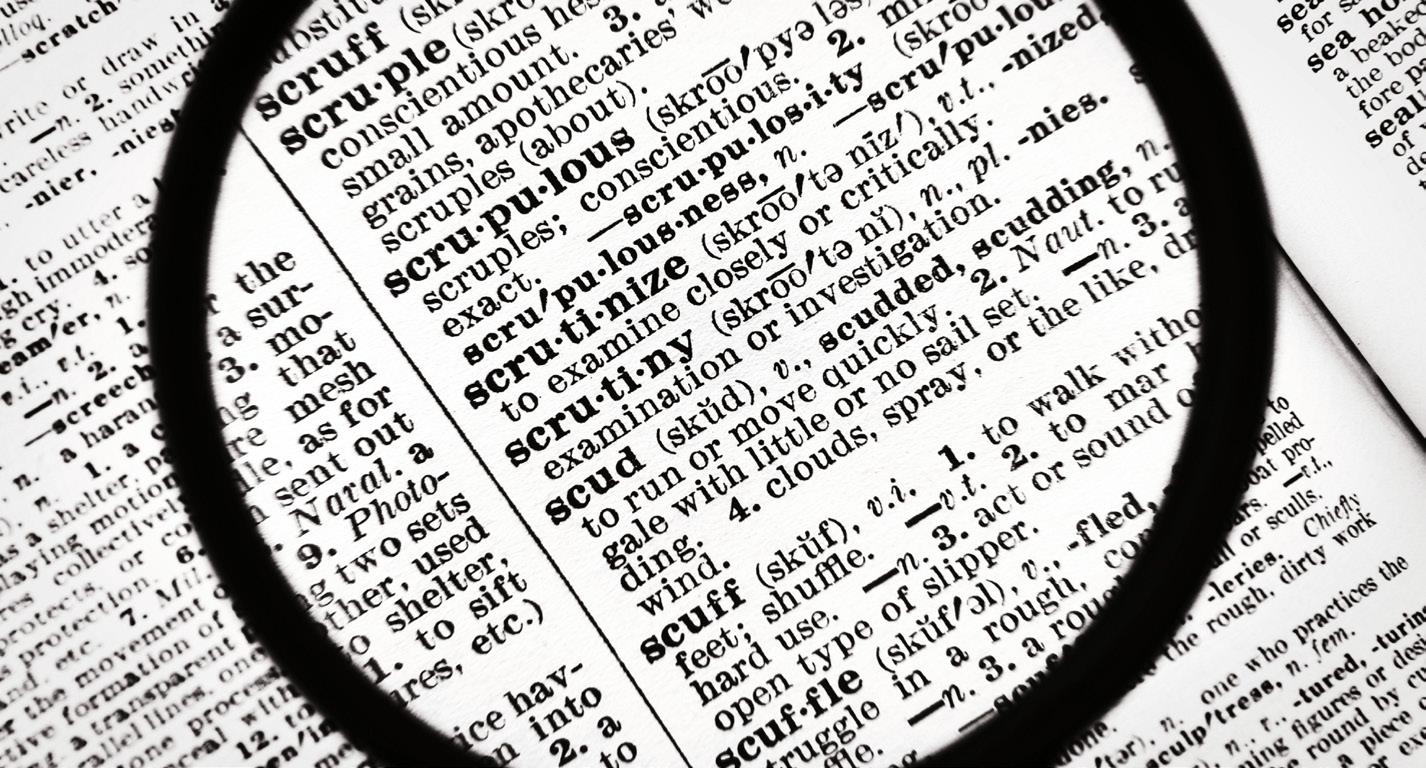
Once a foreign subsidy is detected, the COM assesses its distortive effects on the internal market based on indicators provided by FSR’s Articles 4 and 5.
For instance, a foreign subsidy is deemed most likely to distort the internal market if it directly facilitates a concentration or enables an undertaking to submit an unduly advantageous tender. However, the COM may balance the adverse effects of a foreign subsidy with positive effects on the development of the relevant subsidised economic activity and consider broader positive effects relating to relevant policy objectives.
Article 7 FSR endows the COM with a wide range of options concerning the foreign subsidy ranging from unconditional approval of the subsidy via accepting commitments from the undertaking concerned or the imposition of redressive measures to ultimately ordering
the repayment of the foreign subsidy. The EU’s executive may also prohibit the concentration or the award of the tender.
The potential role of the FSR in the port sector should not be underestimated, given the need for major infrastructure investments in many harbours. Investors with a “strategic interest” willing and able to pay above the market price were – and still are – often glorified as ‘saviours.’ They help ports realise projects that are economically not viable (enough) to attract investors with no access to state resources and where subsidies from the respective EU Member State are unavailable.
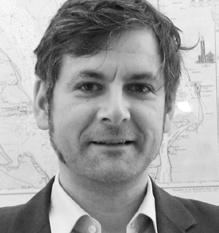
However, while on its face, the FSR sends a strong signal to states subsidising undertakings active on the internal market, the devil is in the detail: how to acquire the necessary information to prove a foreign subsidy? The practice of WTO dispute settlement proceedings vividly shows how difficult collecting relevant data in foreign countries can be. And, as of today, no guidelines or notification forms exist (the COM announced that such documents would be published in about a year).
While the requirements of the FSR will play a significant role in ports’ administrative proceedings, it remains to be seen whether this significance is mirrored in its effectiveness in preventing distortive foreign subsidies.
Kai-Dieter Classen is a Strategic Legal and Policy Advisor to the management of the Hamburg Port Authority. He represents Hamburg in several Committees of the European Sea Ports Organisation. As an Adjunct Professor at Hamburg University’s Law School, he teaches WTO-Law and European Seaports Law. Prior to joining the Hamburg Port Authority, he served, i.a., as an Official for the Hamburg State Government and as a National Expert in the EU Commission’s Legal Service.
By now, nobody could fail to realise that the decarbonisation of shipping is not a choice for the industry but a necessity. However, shipowners are faced with a bewildering array of impending regulations and must make some critical operational decisions to prepare their fleets for the future. Still, it would be a mistake to place responsibility for meeting the International Maritime Organization’s (IMO) zero-emission targets fully on the shoulders of the shipping industry, believes Kostas Gkonis, Secretary General of INTERCARGO, the global association representing the world’s dry bulk shipowners, managers, and operators.
The association is at the heart of the sector’s drive towards decarbonisation, working closely with IMO, governments, and industry bodies to develop a pathway towards the sector’s global decarbonisation ambitions. “We are fully committed to IMO’s strategy and ambition to reduce greenhouse gas emissions from ships, but global challenges require global solutions. However, it must be remembered that the commercial development of these solutions is within the direct control of other stakeholders and not our shipowners,” says Gkonis.
INTERCARGO believes that to build a realistic pathway and address the challenges posed by the transition, responsibility for decarbonisation cannot be placed solely on the ship operator at the end of the line – it is a challenge that must be dealt with holistically by the entire shipping industry. “The target of zero-emission shipping by
2050 requires a drastic and urgently needed acceleration in the commercial development of the technologies, fuels, propulsion systems and related infrastructure required to achieve this aim,” states INTERCARGO’s Secretary General.
He further explains, “All stakeholders in the maritime venture should bear the costs of the decarbonisation transition and play their role. This is not about just shipowners and operators, it concerns charterers, fuel suppliers, ports, shippers and cargo receivers. And one step back from these players are other stakeholders like financiers, insurers, shipbuilders, engine and equipment makers. Simply solely regulating the owner is not going to achieve the desired effect.”
The (plausible) target INTERCARGO continues to fully support the ambition to achieve net
zero-emission shipping by mid-century. Still, Gkonis emphasises that this goal can only be checked off by providing the shipping industry with alternative zero-carbon fuels. In his view, the answer must be for governments to take steps to accelerate research & development of zero-carbon technologies and expedite their deployment.
The way to do this is to ensure that appropriate policies are included in the revision of the IMO GHG Strategy to ensure that green fuels are secured, as well as the necessary infrastructure is in place to confirm availability and bunkering in ports around the world. Unfortunately, Gkonis believes these aspects are not sufficiently discussed and addressed despite their critical role, “The net-zero target will only be plausible if governments take the necessary action to achieve this at IMO. This is why INTERCARGO supported the
industry proposal for the establishment of an International Maritime Research and Development Board and an IMO Maritime Research Fund.”
His association also believes that a global lifecycle emissions assessment for all fuels is fundamental and that there is a need for a worldwide levy- & market-based measure to assist low- and zero-carbon fuels in becoming a competitive option for shipping. This needs to take place alongside policies on land to scale up green fuel production.
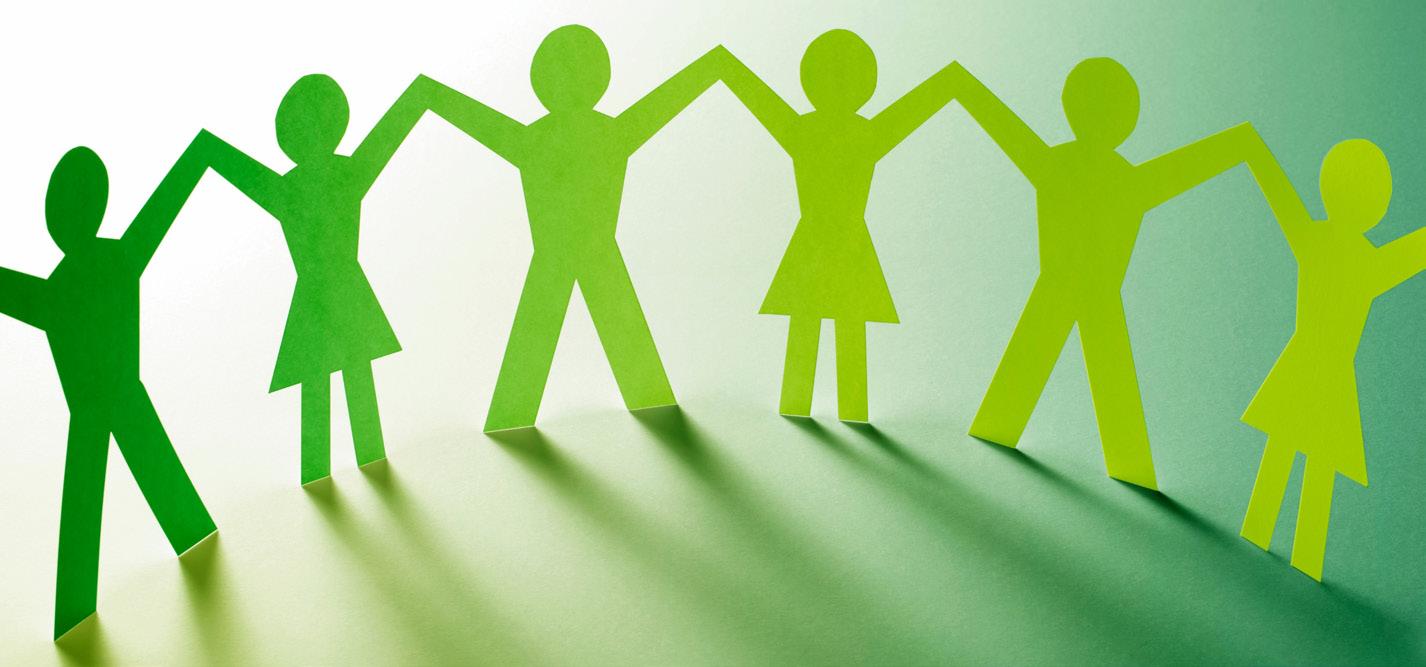
The association has been actively participating in the IMO deliberations and correspondence groups, expressing the views of its members on the measures being developed by IMO and the challenges associated with these, including both short-term solutions such as the Energy Efficiency Existing Ship Index or the Carbon Intensity Indicator (CII), and the lifecycle greenhouse gas emission (GHG-E) assessment of marine fuels. “We have established an internal working group that has been tasked with assessing the technical aspects of short- and mid-term measures,” explains Gkonis. “Shipping must be allowed to fulfil global needs for food and other key commodities while operating on a level playing field and without market distortion.”
Whilst INTERCARGO continues to assess and support the technical and operational measures adopted to reduce GHG-E, Gkonis also emphasises that safety cannot be ignored, “In addition to the very real safety issues, there are other technical and operational challenges that the industry will have to overcome.” INTERCARGO’s
position is that combining core elements of previous proposals on medium-term measures is the best way forward. It has supported the International Chamber of Shipping’s revised proposal to IMO, which suggests a balanced approach.
Specifically, the association believes that a flat rate contribution per tonne of CO2 emitted on a tank-to-wake basis – and subject to the outcome of the ongoing discussions at IMO on fuel emissions’ lifecycle assessment – should be combined with an international maritime sustainability funding and reward mechanism where ships of GT 5,000 and above will make an annual contribution per tonne of CO2 . “Under such a scheme, only ships that use ‘eligible alternative fuels’ would receive a reward for CO2 emissions prevented,” says Gkonis.
The association is of the opinion that a combination of technical and economic measures should be accompanied by appropriate policies and commitments from the IMO Member States for suppliers to secure the required alternative fuels in ports around the world in sufficient quantities.
Meanwhile, Gkonis expresses concerns over using the current CII framework as a benchmark for IMO’s medium-term measures, “At our last semi-annual meetings, our members were very clear that CII cannot be
used to achieve the desired decarbonisation goals under real-life operating conditions. They do not believe that CII will deliver equitable, transparent and non-distorting emission reductions.”
Several factors can significantly and negatively impact a vessel’s CII rating, and Gkonis explains that most of these are outside the vessel’s control. He cites adverse weather, voyage distance, anchorage, port infrastructure, and charterer orders, “Paradoxically, when considering voyage distances and port waiting times, vessels with longer travel distances can produce more emissions but have a better CII rating when compared to vessels travelling shorter distances and producing less emissions.”
INTERCARGO’s formal position is that it does not believe that CII, in the current format, would achieve the desired decarbonisation goals or targets. While generally supportive of the operational short-term measure, significant flaws need to be addressed to make CII fit for purpose.
Gkonis sums up, “Without the concrete actions we have discussed, it will be premature to revise intermediate targets for 2030 or indeed for any subsequent year beyond. At the same time, of course, it must be stressed that INTERCARGO fully supports IMO in meeting the shared, global challenge of delivering on the shipping industry’s decarbonisation agenda.”
The International Association of Dry Cargo Shipowners (INTERCARGO) unites and promotes quality dry bulk shipping, bringing together more than 240 forward-thinking companies from 30 countries, among which more than 150 owners/managers/operators controlling over 40% (in deadweight) of the global dry bulk fleet. Go to intercargo.com to see more.

The risks of working in enclosed spaces are well known across the shipping world: seafarers entering such areas can encounter oxygen-deficient/enriched, flammable or toxic atmospheres, with multiple fatalities or injuries sometimes occurring if crewmates find a casualty in an enclosed space, enter that space to effect a rescue and then also fall victim to the same hazard. As maritime regulators address the dangers posed by working in enclosed spaces on board ships, InterManager outlines the core problems and welcomes progress.
InterManager, the international trade association for the ship and crew management sectors, has been collating statistics on deaths and accidents in enclosed spaces since 1999 and reports that during this period, enclosed spaces have claimed the lives of 186 seafarers and 70 shore workers. However, InterManager’s Secretary General, Captain Kuba Szymański, fears these figures could be higher still and believes there is under-reporting by shipping authorities.
Capt Szymański explains that a complete overhaul is needed across many aspects of the shipping industry to reduce the risks associated with enclosed spaces aboard ships. In particular, he notes the confusion caused by varying regulations and procedures, “Different regulations define enclosed spaces in differing terms, referring to ‘confined,’ ‘enclosed’ and ‘dangerous spaces,’ while the International Maritime Organization refers to ‘potentially dangerous’ spaces.”
Capt Szymański, an experienced seafarer himself, says this adds to the pressure on seafarers – who are so often blamed for their own injuries or deaths by investigations which don’t delve deeper to understand why a mistake was made.
In recent years, InterManager has conducted a vital campaign to raise awareness of the problems associated with enclosed spaces. A statistical survey completed in 2021 identified bulk carriers as the most at-risk shipping segment, accounting for some 47% of fatalities, followed by tankers 24%, with ‘procedures’ identified as the most significant cause in nearly 30% of all accidents. The association identifies some specific safety issues that need addressing as follows.
The so-called ‘Australian Ladders’ installed on bulk carriers: while not required
to be totally enclosed, in many cases, they are. The ‘trunk’ is open at the top and bottom, and when the cargo hold is full, it will trap any hazardous atmosphere. It may then remain trapped as the bulk cargo is emptied until the bottom access is opened. Using these access ways when the ship is unloading has resulted in many deaths.
Next, Foc’sle stores in some general cargo ships have a door, or other penetration, connecting to the Number 1 Hold. If the door is left open or door seals are damaged, a hazardous atmosphere may migrate from the hold, and a number of deaths have resulted from this.
Third, bulk carrier stool spaces can often be damaged, resulting in a hazardous atmosphere in these adjacent (to cargo) areas.
Capt Szymański also identifies ‘time pressure’ as a prominent underlying cause of enclosed space accidents. In a paper cowritten by Martin Shaw, MD of Marine Operations and Assurance Management Solutions Ltd, he writes, “In recent years, time pressure has become an issue of everincreasing importance as the demand for ‘efficiency’ increases. In some ‘liner’ trades, such as container shipping and car carriers where global production is involved, efficient shipping has facilitated reduced stockholding costs by ‘just in time’ delivery of components. This increases time pressure on the ship to deliver these components on time. The COVID epidemic and recent Suez Canal closure shows the risks inherent in a long supply chain and the dependence on shipping to ‘deliver’ on time.”
He furthers, “In the bulk trades, there is also a desire to reduce stock-holding costs and limit overall storage. The difference with bulk ships is that they, generally, operate in ‘tramp’ trades which may lack dedicated and standardised ports and ships, meaning ‘high tempo’ operations are more of a risk.”
Capt Szymański also notes, “Port operations are a major source of time pressure. Ports and terminals want the quickest turnaround for ships using their facilities because this maximises throughput and profitability. The interactions with port services, stevedores and services the owner requires can make this complex, and often ports will encourage ships to berth or sail in marginal conditions without notice.”
“Time pressure is a real issue in modern operations, as it has been for many years. There is no sign that this is getting less and indeed an indication that it is getting worse. It makes us literally and figuratively ‘cut corners,’ sometimes with deadly results for seafarers,” he says regretfully.
However, there seems to be a light on the horizon. Regulators are at last moving to try and stem anomalies in current rules that have contributed to this worrying number of fatal accidents involving seafarers and port workers. Following years of lobbying by InterManager and other maritime organisations, the International Maritime Organization (IMO) has now committed to reviewing guidance governing safe working in enclosed spaces on board ships.
Heralding the move as a significant step forward in crew safety, InterManager says it will work with the IMO, flag states, and other maritime partners to ensure lessons are learned from the many fatalities in enclosed spaces and make sure new legislation is workable and effective.
At the 106th meeting of IMO’s Maritime Safety Committee (MSC) in 2022, InterManager submitted a comment paper, co-sponsored by many industry partners, in response to China’s proposal to revise IMO Resolution A.1050(27), which sets out
the recommendations for entering enclosed spaces aboard ships. InterManager’s paper highlighted additional information which it believed should be considered while also providing high-level information relating to enclosed space incidents.
Capt Szymański observes, “This is an opportunity for the shipping industry, led by the IMO, to comprehensively assess the dangers posed by the range of enclosed space and oxygen-depleted areas on board ships and to make meaningful recommendations which will remove or reduce risk, backed up by robust procedures that should aim to ensure no seafarer or shore worker dies while carrying out their jobs.”
In its submission, InterManager and its co-sponsors recommend that the IMO Resolution A.1050(27) be considered by suitably competent sub-committees, which should also consider emergency drills for enclosed spaces, the carriage of gas detection equipment on board ships, and MSC.1/Circ.1401 dealing with vessels inerted with nitrogen, plus the associated risks and hazards. It advises re-examining previous submissions to address issues already raised, such as cargo hold gas monitoring and an appreciation of various hazardous cargoes (oxygen-depleting, fumigated, emitting toxic gas).
The submission states, “The scope of the revision needs to be broad and comprehensive in order to take into account both the human element and ship design factors that have contributed to previous enclosed space incidents. This would undoubtedly mitigate against, and hopefully prevent, such incidents occurring in the future.”
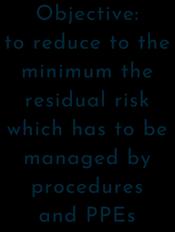
InterManager’s submission highlights a need to consider the design of access as a means of reducing the number of such incidents, pointing



out the risks posed by areas such as hold access ladders, specifically the enclosed trunk ladder (occasionally referred to as the previously-mentioned ‘Australian Ladder’).
InterManager points out that previous submissions on enclosed space risks have discussed “the repetitive systemic nature of the enclosed space incidents,” and this is a matter that InterManager has campaigned about, urging the shipping industry to delve deeper into accident investigations to look at the ‘why’ as well as the ‘how.’
The submission draws attention to industry-led investigations into enclosed space accidents, commenting, “These reviews have resulted in the emergence of several distinct themes focussing on; design and construction, gas evolution, movement and entrapment within the ship structure, and the human element prevalent in many enclosed space incidents, such as the rush to rescue a single casualty resulting in the death of many, the disregard of procedures, and local adaptation of unsafe practices. Likewise, it has been identified that, in many cases, ship and shore personnel are subject to time pressure which may result in them rushing or missing checks to meet artificial deadlines, which often results in entry into spaces for which they are not fully prepared. These aspects have resulted in countless casualties where a known breach of procedure (just a ‘quick look inside!’) in an enclosed space has often ended in further loss of life.”
The submission also states, “In order to reduce, indeed halt, such needless loss of life within the complexities and risks of the maritime world, the review of A.1050(27) needs to be comprehensive, in-depth and as wide-ranging as possible in order to encapsulate the breadth of such studies. A new resolution on the recommendations for entry into enclosed spaces would go a long way towards avoiding the unnecessary deaths of seafarers and shore-workers.”

IMO MSC 106th agreed that the MSC 107th meeting, scheduled for June 2023, will draw up a plan for revising IMO resolution A 1050/27 concerning Enclosed Space Entry Procedures. Responsibility for the output will be spear-headed by the Sub-Committee on Carriage of Cargoes and Containers (CCC), which next meets in September 2023, in association with five other IMO Sub-Committees, as and when requested by CCC, with a target completion year of 2024.
Capt Szymański concludes, “I sincerely hope that we are finally making real progress towards achieving tangible safety improvements for enclosed space working. Of course, in an ideal world, we would revise our ship designs to remove these spaces altogether –but for now, we must do all we can to ensure that seafarers, stevedores, and other maritime workers do not die while carrying out their duties on board our ships.”
Since the late 1980s, ship management has been an important industry in its own right. It was this which drove the need for an association to represent ship managers and to provide a forum for the global ship management industry to ensure best practice procedures and sustainability. Representing over 5,000 vessels and over 250,000 seafarers, InterManager speaks for ship and crew managers, as well as represents associated organisations globally. Visit intermanager.org to learn more.

The world’s supply chains – often praised for their resilience and ability to minimise costs through just-intime delivery, manufacturing and processing, as well as allowing companies across various parts of the economy to integrate their production streams from optimal locations worldwide – have come under ever closer scrutiny since the outbreak of the COVID-19 pandemic. The perishables trade is no exception, especially given the enormous distances often covered by the products we often take for granted as being readily available, with freshness guaranteed. Behind these products lies an incredibly complex web of actors and processes, which must operate flawlessly to ensure consumers’ access and processors get what they need.
Yet, the hangover from the pandemic and the associated challenges seen throughout the cold chain are just one piece of the puzzle. In addition to the developments experienced within the containerised and conventional reefer markets outlined below, other factors are at play. These most notably include the ever-increasing pace of change in the maritime regulatory environment related to alternative fuels as well as emission reduction targets and their enforcement.
Moreover, geopolitical tensions, the highlight of which being the Russian aggression in Ukraine, but also the agreement and entering into force of preferential trade agreements, the role of sanctions and longer-term, structural shifts that may be occurring in the global economy play an important role in shaping the way our food reaches the table and from which locations.
The following article presents selected key takeaways from the recently released Dynamar 2022 Reefer Analysis, which comprises three parts covering global perishable trade, conventional reefers, and the container shipping sector.
From a cargo perspective, overall perishables trade volumes across the major commodity groups, namely dairy, fishery products, fruit, meat and vegetables, rose to a new high of 173.9mt in 2021, showing strong growth of 3.6% year-on-year from 2020s 167.9mt.
Volumes grew across all the commodity groups, with meat and vegetables performing well, rising from 32.2mt to 34.2mt and 39.3mt to 42.18mt, respectively. In regional terms, there was significant variation, with exports of perishables falling in the Far East and Central America while growing strongly in Europe and Africa.
Although a lot of our food is sourced from the southern hemisphere (South and Central America, Africa, and Australasia), most trade in the north is generated by North America (including Mexico), Europe (excluding intra-EU trade) and the Far East. Together these were responsible for around 97.3mt in 2021 (vs 93.9mt in 2020). Overall, the proportion of refrigerated trade generated by these three regions has remained
relatively steady at about 55-60% of total exports in perishables in recent years, and this trend is expected to continue.
However, much of their trade takes place over land or short distances, contrary to the southern hemisphere’s exports, where reefer exports almost entirely take place via sea. For southern hemisphere countries, perishable exports are much more important relative to the countries of the north as they make up a much larger share of their total trade income. Since 2012, growth has varied per region, ranging from +1% in North America to +5% in Europe.
Looking forward, Dynamar expects that overall perishable trade volumes will decrease slightly from 173.87mt in 2021 to 171.03mt in 2022 before rebounding again to 173.55mt this year. The overall 1% growth rate in 2022-2023 has been driven chiefly by the fruit and fishery products trade, more than recovering the lost ground from 2022. A resumption in more typical growth rates across the various commodities followed in our publication is expected when looking further forward to 2023.
Source for all tabs. A nd Fig. 1: Dynamar 2022 Reefer Analysis
While reefer volumes, freight rates, and overall demand have shown more resilience than other commodity groups, there are definite signs of a slowing down activity. Moreover, there are early signs indicating a slowdown in the inflationary pressures in some major markets and a series of government announcements of fiscal policies aimed at reducing the burden on ordinary households have been made and are expected to take effect and increase in pace in the coming months. The aggregated impact of such measures is yet to be seen; that said, the effects are expected to be felt through 2023 and into 2024. Finally, the slowdown in consumer spending has alleviated some of the supply chain disruption seen over the past two years, with port congestion and available space on vessels already easing.
Region-wise, it is expected that the Far East will be the only one registering strong growth in 2022, with volumes rising to 30.95mt, up from the 2021 figure of 28.23mt. Most other regions will note a slight decline following several years of steady, consistent increase. The most substantial reduction is forecasted for Europe, with perishable exports predicted to drop by 6% (although there are significant variations between countries within the region). This year-wise, almost every region is expected to see its exports rebound from 2022, except for the Middle East.
Accounting for around 129mt in 2021, the seaborne trade of perishable products is expected to face challenges in the coming months. Still, the longer-term trend
is assumed to remain in place on the cargo side, as discussed briefly above. On the shipping side, for 2023, shipyards are expected to deliver 330 vessels with a massive 2.3m TEUs capacity; for 2024, 390 ships with space for 3.0m TEUs are in the pipeline. Slippage or cancellation of orders is likely to reduce the actual deliveries. Still, at 20% of the current fleet, the influx of new tonnage is set to severely disrupt the container shipping market. On the other hand, changes to the conventional reefer fleet will be minimal, with a low number of deliveries expected and scrapping likely to remain high.
By the very nature of the trade, namely the requirements for the cargo to be received with minimal delay and in optimal condition, carriers have often had to rely on fast, direct services sailing point-to-point at speeds more than industry averages. Developments in cold chain technology have somewhat mitigated these requirements. Whereas the more traditional conventional reefer operators continue to play a role in the movement of these goods, their market share is estimated to have gone down to
some 12-13% vs some 50% at the start of the century. Whilst conventional operators had a very good demand and freight rates year, with only 25 ships scrapped in 2021, carrying capacity was reduced substantially.
Effective 1 July 2022, 528 conventional reefer ships larger than 100k ft 3 were in service, with a combined capacity of 172.8m ft 3. These vessels have an approximate total container capacity of 49,370 TEUs. This
number is based on maximum box intake, regardless of weight and the actual availability of sufficient reefer plugs. Converted into volume, they would offer a maximum potential extra carrying capacity of
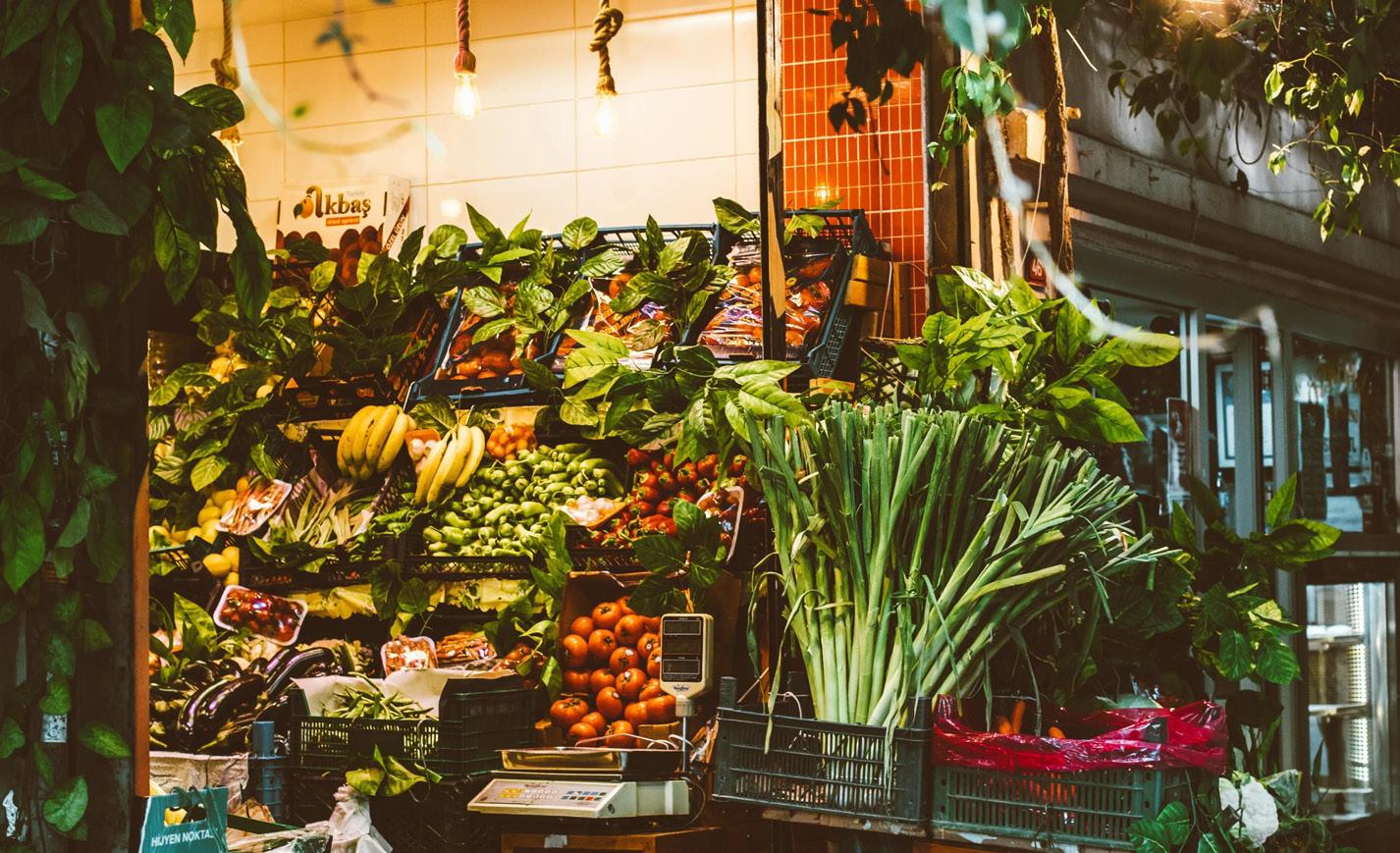
58.4m ft 3. However, sometimes there are not enough reefer plugs, and a substantial part will be used for empty boxes or (nonrefrigerated) general cargo. Small ships under 400k ft 3 (generally used for carrying fish or meat) account for 356 units and 78.7m ft 3 million, representing a share of 67% by number or 46% by capacity.
Vessels of over 400k ft 3 are primarily deployed for carrying fruits and vegetables. Most capacity is in the 500k-600k ft 3 range, totalling 39.2m ft 3. The largest ones, owned by Baltic Reefers/Cool Carriers and chartered by Great White Fleet, have a maximum intake of 880k ft 3/564 TEUs (the first of which entered service in 2018).
On the container side, the ten leading carriers deploy 3,376 ships in total, with an aggregated 21.7m TEUs capacity and 2.19m reefer plugs. From those, 807 vessels (4.99m TEUs/670k plugs) are deployed in relevant (north-south) trades. As ship size is growing faster than trade volumes, it is increasingly difficult for carriers to operate standalone

1 Sub-totals do not add up to grand total as individual loops may cover more than one trade lane
loops. Therefore, nowadays, there is extensive cooperation between the lines. For example, CMA CGM and Cosco Shipping cooperate on 19 loops (four more than in 2021); Cosco Shipping and PIL on seven loops; with 13 instances of cooperation, Hapag-Lloyd and ONE are also close partners, whilst CMA CGM and Maersk work together on ten slings (up one from 2021).
In addition to the changes in the composition of the reefer shipping market, there are also a few external factors that will play a significant role in determining market direction, with just three from a long list explored briefly below: the introduction of the Carbon Intensity Indicator (CII) as agreed by the International Maritime Organization, the inclusion of shipping into the European Union’s Emissions Trading System (EU ETS), and geopolitics.
On 1 January 2023, the CII, an operational efficiency indicator that measures a vessel’s carbon intensity over time, went into force. A peculiar aspect of this measure is that it is largely based on how the ship is being used rather than its technical
capabilities. Obviously, older fuel-hungry ships, such as conventional reefers, will be affected more than modern vessels; similarly, small ships with a higher specific emission will be at a disadvantage against larger vessels that use less fuel per tonne. At the same time, two technically identical sister ships can also have different CII ratings.
A ship would obtain the best rating when sailing around in ballast at slow speed all year. As such, CII will certainly fuel disputes between charter parties, as the ‘wrong use’ could effectively make a vessel economically worthless. Under the CII regulation, conventional reefer ships will be even more affected, with their competitive advantage of providing faster transit times with their direct sailings than container ship operators with their liner services and hub-and-spoke format likely to be lost. Already, demolition is at a relatively high level, and arguably, it will rise even further.
The introduction of the EU ETS will be phased in over several years, and there will be differences in the emissions covered by the system depending on origin-destination ports. This way or another, there is a significant chance that the move will considerably impact the market. Beyond the concerns raised across the shipping market
in response to including the sector in the scheme, the particularities of the perishable cargo market, including the dominance of the north-south trades, the use of older, fuel-hungry but fast vessels in the conventional sector and the energy requirements and related emissions of reefer containers will mean that the cost of compliance for the sector will likely be complex.
With costs and challenges looking increasingly likely to rise for the sector on account of these measures and the pace of technological change relating to the adoption of lower carbon and carbon-neutral fuels increasing, the perishable logistics sector could see further and accelerated change. While the container sector has already seen an order influx of newbuilds across the spectrum of fuels from methanol to liquefied natural gas, conventional reefer vessels remain an ageing, perhaps even dying breed with owners seemingly unwilling to bring forward a next generation of carbon-neutral specialised vessels. While a niche part of the perishable market remains the domain of the specialised sector, it is highly uncertain whether the tools to service this slice of the market will be around in the coming years as structural changes occur globally.
Finally, given the strict regulatory environment for perishable cargoes, the variety in origin-destination partnerships for the commodities involved and the protected nature of the agricultural sector in many economies, geopolitical tensions and their implications are always close to impacting the situation. In recent months, the market has seen the effects of the Russian aggression in Ukraine through elevated food price inflation across the board, which is likely to have a knock-on effect on perishable trade volumes worldwide.
Meanwhile, more localised challenges and disputes can have far-reaching consequences, as was the case for South African citrus fruits following changes to the EU
phytosanitary regulations in response to pest concerns. The move left hundreds of containers carrying South African oranges and grapefruits in limbo. At the other end of the spectrum is the continued proliferation of preferential trade agreements, such as the recent agreement between the EU and New Zealand, covering a significant portion of the dairy and meat export markets.
The two outlined developments give an indication of just some of the forces at play in the reefer market, and this article touched on just a small number of the factors affecting this complex global trade: one which continues to see record levels of investment throughout the cold chain and is likely to see many more challenges but also significant opportunities in the coming years.

Dynamar B.V., based in the Dutch Alkmaar, was established in 1981 in response to a growing demand for business and marketing reports in the maritime sector. Over the years, we have expanded considerably and established a network of worldwide offices, agents, and correspondents. The company’s offering includes, among others, business information reports, consultancy, marine investigation, and a host of publications. Go to dynamar.com to discover more.

Our recent survey of shipowners from the container, tanker, bulk, cruise, and ferry sectors demonstrated that they see a global carbon tax as a way of levelling the playing field for adopting new bunker fuels. Still, there’s another leveller they also see as critical: practical, fair collaboration between owners themselves and with clean technology (cleantech) providers was the strongest theme in our discussions.
Without this, shipowners see problems with technology providers, yards, financiers and research & development (R&D) projects holding back their decarbonisation goals. They can’t be expected to simply drop their competitive aims or sort the challenges out ad hoc. A different approach to collaboration is needed.
Lost in the (data) gap
Many shipping lines with smaller fleets lack the luxury of an in-house R&D team. They are reliant on grant-funded projects more than larger owners. At the same time, some indicated that they found the grant-funded environment fragmented and skewed towards early developmental research and studies rather than getting new solutions on board vessels.
Most of the shipowners we spoke to believed that reaching environmental targets requires a combination of investment in retrofitting and newbuilds. Even the most forward-thinking ones, with the youngest fleets, have a big focus on retrofits. Yet, they remain cautious. When looking at newbuilds, participants commented that there is often a lack of alignment between the shipyard building the vessel and the concept design that the owner has bought into. Many of the new ideas incorporated in the
original design can be lost in its translation to the final build. There is a need for better alignment along the supply chain, which means better integration of yards into the work being done to develop new solutions.
Several interviewees identified a crunch of good quality and relevant operating data as a key barrier to the uptake of cleantech. There is also a perceived shortage of independent corroboration for the claims made by some technology vendors, with shipowners pointing to disappointing adoptions. None of the participants accused technology providers of suggesting deliberately misleading results, yet, they also reflected that the data in a brochure inevitably relate to another ship with a unique operating profile.
Those operating tramp trade vessels found themselves at a disadvantage when assessing cleantech opportunities.
In addition to the obvious challenges of adopting technologies such as wind assistance, they also reflected on the difficulties posed by technologies which rely on shore-side infrastructure.
Environmental performance is an increasing focus in all financing discussions and securing the funding to undertake cleantech projects was another key challenge identified by the interviewed shipowners. Accessing funding is a resource-hungry process. Many reflected that their funders are
asking them for more environmental performance-linked data, even on more traditional vessel funding renewals and refinancing. As with cleantech selection, bridging the data gap is an increasing challenge.
The most distinctive theme in our discussions with shipowners was the need to find a better and more innovative way of collaborating. Collaboration can be forced by government grants, which require a consortium bid, but this often makes participation difficult for smaller companies that don’t have the internal resource or external network to build and manage bid consortia. The time taken in administrating these processes can also significantly add to the timeline for delivering the target outcome. In some cases, the objective of the shipowner needs to be compromised to meet the terms of the funding.
Bringing owners and technology providers together is one part of the collaboration challenge, but protecting sensitive commercial data and maintaining competitive advantage were cited as the biggest challenges. Industry-wide, there is a need for more proactive, independent conveners to facilitate project collaboration, likewise, where necessary, act as a ‘black box’ to protect commercially sensitive data. Flag states,
international chambers, industry coalitions, and independent consultants can fulfil this role. National and international organisations already disseminate information and lobby on behalf of their members. Still, they could also become more proactive conveners for projects, which could particularly benefit their smaller members. Driving change and opening more opportunities for smaller owners can also form part of the advantage that flag states seek to offer.
Independent advisors can also help shipowners manage the requirements of financiers and other stakeholders. They can provide independent analysis of the benefits of cleantech, individually or combined with others or new fuels. Operationally, they can evaluate the shortand long-term viability of proposed cleantech strategies, monitor international and regional developments relating to regulations and new fuels, and help manage the timing of newbuild and retrofit projects to minimise operational disruption.
There are great examples of collaboration in action today. Some large owners and charterers are opening their doors to new technology, such as Rio Tinto’s Pioneer Project. The company is one of the world’s largest dry bulk shippers: its marine team orchestrates a fleet of more than 230 chartered vessels at any given time, operating alongside own-owned 17 ships, to transport over
300mt/year. Rio Tinto has invited emerging tech owners to participate in a project with up to $20m of funding for the retrofit of solutions to two of the company’s Newcastlemaxes that will be made available to retrofit as a ‘floating lab’ in 2023/24. They have indicated an intention to share the results of these trials and remove some barriers to developing early-stage technologies.
Those with the biggest concerns about the risks associated with collaboration saw initiatives such as green corridors providing a powerful environment for collaboration along supply chains. Ferry routes are another fine example of this. Historically, the differentiators for ferry providers (other than price) have been the customer experience. A point-to-point green corridor covering some of the busiest ferry routes could allow vessel owners to pool their collective intellectual and financial resources in arriving at a single fuel/propulsion and overall vessel class. This would open a clear pathway to providing the necessary shoreside infrastructure and leave operators to compete on the same basis as they have done for years. A green corridor project
is an excellent convening environment, particularly across national borders. If it is led by an independent third party or one or more of the participant ports, it offers the opportunity to overcome many of the barriers to collaboration.
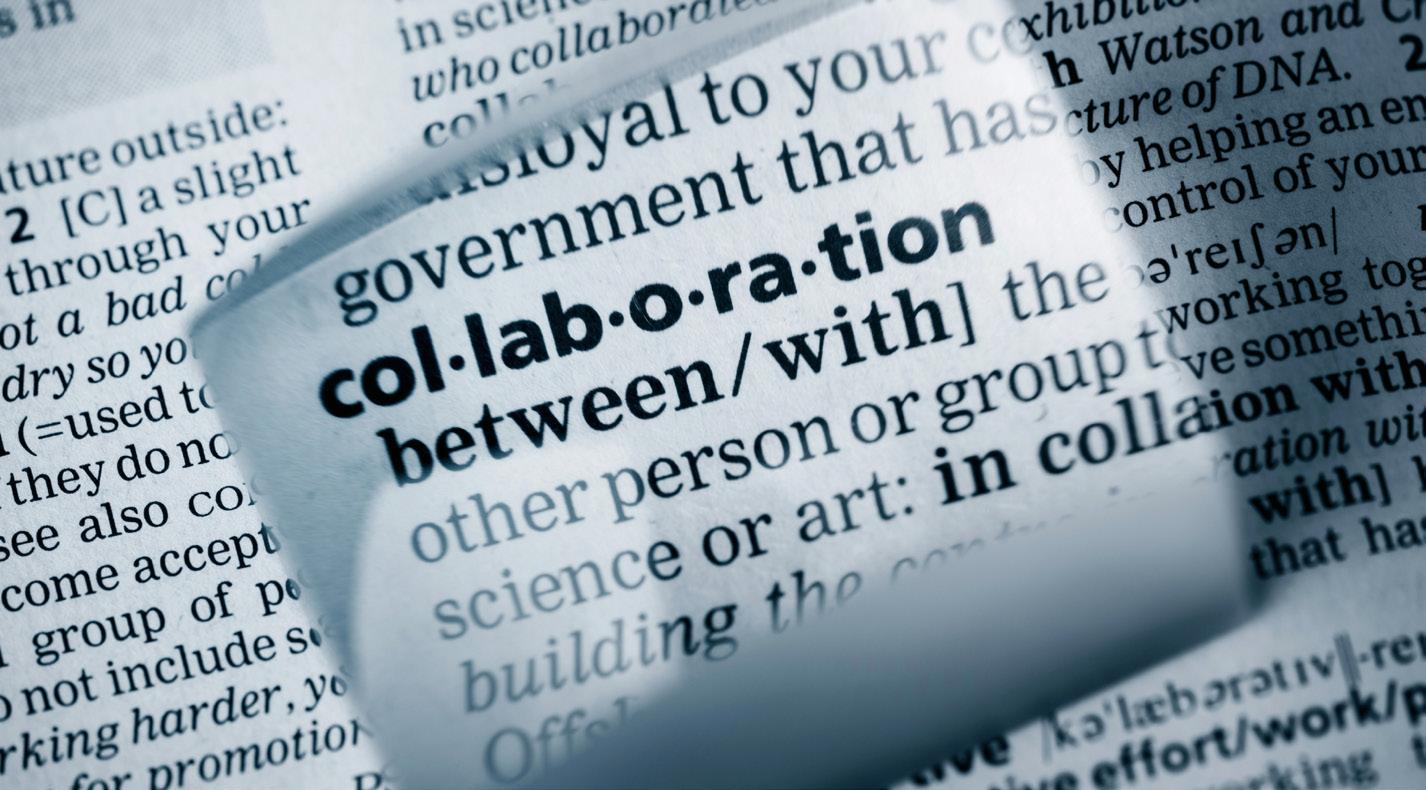
Every senior industry player interviewed confirmed that there is a willingness to collaborate on projects that will accelerate the uptake of new technology. They understand that it is critical to achieving the rapid, fundamental change that is increasingly expected from charterers, financiers, consumers, and internal stakeholders, all wanting to deliver on their own goals and promises.
Failure to decarbonise, therefore, poses an existential threat to a shipping company, and the current lack of effective collaboration is making their efforts more difficult than they need to be. It is time to break down the barriers. To that end, Houlder has produced a free white paper that includes more details on this theme and many others relevant to the decarbonisation transition.
Houlder has been a wholly independent provider of design, engineering services and equipment for over 30 years. The company has built on its marine and oil & gas pedigree to proactively engage with emerging markets such as offshore renewable energy and LNG distribution. The company’s project managers, naval architects, marine engineers, and consultants support clients through the entire procurement cycle, from conceptual ideas to through-life operations. Check houlderltd.com to discover more.
European Flagship Action for Cold Ironing in Ports (EALING) is a 36-month-long project, co-funded through the Connecting Europe Facility (CEF), tasked with leading all the necessary technical, environmental, socio-economic, and financial studies to accelerate the preparation works towards setting up onshore power facilities in at least 16 EU ports spread across different European seas. The initiative’s goal is also to work on an EU-harmonised and interoperable electrification framework.
The EALING consortium, wanting to contribute to moving the needle on the deployment of shoreside electricity (SSE) solutions in EU seaports, has intensively worked with
shipping and port stakeholders to identify the main obstacles they face when implementing SSE as well as to propose recommendations for a harmonised framework.
To that end, the project partners have carried out a PESTLE analysis: studying how the various political, economic, sociological, technological, legal, and environmental factors slow the uptake of SSE infrastructure in Europe.
In December 2019, the European Commission (COM) presented the European Green Deal. In its communication, the EU’s executive stressed, among other things, the need to accelerate the shift to sustainable and smart mobility, as transport accounts for a quarter of the EU’s greenhouse gas (GHG) emissions (and growing), with maritime responsible for 3-4%.
Since then, COM has been working on several strategies and regulations
to reach the goal of climate neutrality by 2050. Regarding the EU strategies and rules related to SSE – such as the 2030 Climate Target Plan, Sustainable and Smart Mobility Strategy, the Fit for 55 Package, and the Efficient & Green Mobility Package – EALING’s research leads to the following political & legal recommendations. First, simplify and harmonise the administrative burden at
From a technical perspective, SSE projects aim to provide a controlled interface between the power supply (from the utility grid or distributed power/microgeneration) to ships at berth.
the national, regional and local levels (resulting from applying the regulations) to build and operate SSE infrastructures. Second, increase the intensity of public funding (e.g., revenues raised via the EU Emission Trading System, EU ETS, could be used to fund SSE installations). Third, include tax exemption for electricity provided to vessels at berth in the revised Energy Taxation Directive.
Regarding technical recommendations, the views of different stakeholders
– like the shipping and port sectors, the European Maritime Safety Agency (which published two parts of its Shore-Side Electricity. Guidance to Port Authorities in June 2022), SSE technology solution providers, and energy suppliers – have been considered when putting forth the following recommendations. First, there is a need for standardisation or guidelines
(technical and regulatory harmonisation) regarding the position of the SSE connection on board each vessel type. Second, providing appropriate training for people handling SSE connectors. Third, from a technical perspective for tendering processes, an intervention is recommended that mandating joint ventures in the tender processes may not be
The first SSE systems in Europe for the merchant marine sector date back to 1985, with the first low-voltage system installed in Stockholm. The first high-voltage systems were deployed in 2000. Since the start of the new millennium, the rapid growth of shore power technology deployment in ports across Europe has been experienced (though the coronavirus pandemic made a dent in the overall upward trajectory in 2020 – as it did for all other maritime sectors, especially those focused on passenger traffic). Vessel type-wise, and focusing on passenger
The main national regulations related to environmental impact and noise pollution issues are based on the European Parliament and the Council’s directives. Specifically, the eight EALING-participating EU Member States (Bulgaria, Greece, Ireland, Italy, Portugal, Romania, Slovenia, and Spain) have already integrated into their national legislation the EU Directive 2001/42/EC (on the assessment of the effects of certain plans and programmes on the environment) as well as the EU Directive 2011/92/EU (on the assessment of the effects of certain public and private projects on the environment).
Emission reduction is the main incentive for the implementation of SSE, as air pollution represents a significant environmental & health risk. SSE eliminates harmful elements and the noise generated by auxiliary engines, which is particularly appreciated by the communities living close to harbours. In addition, SSE eliminates the vibrations caused by the operation of auxiliary engines, thus improving the comfort of the crew and passengers on board.
As such, cooperation between port, shipping, and city stakeholders is crucial
and container ships only, most of the current SSE facilities deployed in Europe (until 2022) are for passenger vessels, with 70% of the facilities catering to ferries and ro-ros. That said, total power capacity-wise, cruise ships account for 70%, although ‘only’ one-fifth of the installations were installed explicitly for these power-hungry ‘floating hotels.’
After an extensive literature analysis and considering the outcomes of the EALING stakeholder workshops, several recommendations have been proposed on the economic
Concerning the environmental aspects of port facilities for electricity production offering SSE to vessels calling at their ports, the EU Directive 2015/2193 (on the limitation of emissions pollutants into the air coming from combustion plants for obtaining environmental titles) must also be taken into consideration. Furthermore, energy efficiency can be achieved by SSE at European ports derived from renewable energy sources and is included (indirectly) in the EU Directive 2012/27/EU (on actions for improving energy efficiency and reduction of GHG emissions, including the use of renewables).
to, first, address citizens’ concerns related to the quality of life near ports; second, raise awareness among all actors of the importance of working together for the common benefit of improving the public health; and third, receive the necessary public financial support, not only to develop the SSE facilities but also to invest in the external grid to ensure that no lack of capacity impacts the everyday life of citizens.
In short, here are the interventions in the social scope to contribute to deploying SSE installations in EU ports. First, incentivise
a good approach. Fourth, for the technical assessment of power demand, it is emphasised that load forecasting models and demand assessment studies are required to reduce uncertainty. Lastly, it is also recommended to broaden the scope of the utility connections in port IEC 80005 standard to include shore-side battery charging and shore power banking.
scope. First, close cooperation between shipping lines and ports should be encouraged before any investment in SSE facilities is done. Second, carrying out a cost-benefit analysis is highly advisable before implementing any SSE infrastructure. Third, creating additional funding mechanisms (e.g., a maritime fund under the EU ETS) to cover a bigger part of the needed investments. Fourth, existing instruments (CEF, recovery funds) are insufficient and should be extended or supplemented with other facilities.
A summary of recommendations focused on the environmental scope proposed by the EALING consortium is the following. First, promote the creation of an eco-certificate addressed to shipping lines, focused on the use of electricity at berth; ports could use this index to reward ships with better environmental performance. Second, encourage the registration of ships in the Clean Shipping Index (CSI); any vessel equipped with the required SSE technology achieving a high CSI score could receive rebates in the participating European ports.
at the COM level interaction and collaboration between all the stakeholders; this could be facilitated by creating at the port level a specific working group involving all operational stakeholders to ensure the proper coordination and management of SSE facilities. In addition, another recommendation could be the development of operational manuals for port operators (especially on safety aspects). Last but not least, working closely with universities, research institutes, and vocational training centres to cover the training profiles needed for SSE operations is highly recommended.
EALING Action number 2019-EU-TM-0234-S is a 36-month-long Connecting Europe Facility project aiming at proposing a common EU harmonised and interoperable framework for the transition to electrification for at least 16 EU maritime ports in different seas. Click ealingproject.eu to discover more.


Jameson, Partner, Laurids Schack, Consultant, Camille Egloff, Managing Director & Senior Partner, Ulrik Sanders, Managing Director & Senior Partner, Mikkel Krogsgaard, Managing Director & Partner, Wade Barnes, Managing Director & Partner, Sanjaya Mohottala, Managing Director & Partner, Anders Madsen, Managing Director & Partner, and Dustin Burke, Managing Director & Senior Partner, Boston Consulting Group (BCG)
Shipping is a high-carbon-emitting industry whose green transition is critical to limiting global warming in line with the Paris Agreement (less than 1.5°C/2.7°F by 2050). Shipping companies are already prioritizing decarbonization initiatives in their current agendas and future budgets, driven both by a wish to do their part in the global effort and by intensifying pressure from stakeholders.
Of course, as in virtually all industries, a principal hurdle is where the funding for decarbonization will come from. BCG research shows that the vast majority of shipping customers are on board to pay a premium for carbon-neutral shipping, a willingness to pay (WtP) that is growing fast. Yet the amount of the premium they will accept is insufficient to move the needle toward achieving net zero by 2050. A key question therefore remains: how can shipping companies improve their
customers’ WtP, make decarbonization happen, and do it in a way that is timely, costeffective, aligned with customer expectations, and sustainable?
As we addressed in a previous BCG report , the core drivers of decarbonization in shipping are threefold: customer and stakeholder demand, regulation, and financing – each posing its own set of challenges. In addition, three transition levers will need to be pulled to reach the target goals: operational efficiency, technical
efficiency, and the application of future fuels. All three of these levers are attracting increasing attention and investment.
In search of answers and insights into shipping customers’ thinking, BCG surveyed 125 companies across industries and geographies that ship their cargo, first in 2021, and again in 2022. Their responses offer a look into their top priorities and make it clear that achieving net zero by 2050 presents not only challenges to shippers but opportunities as well.
BCG’s recent 2022 survey showed that 82% of shipping customers are willing to pay a premium for zero-carbon shipping – an 11-percentage-point increase over 2021 (Fig. 1). In addition, the WtP premium rose by more than 30% to about 3% in 2022, which would correspond to between $10 billion and $20 billion in extra revenue for the shipping sector. A partial conversion of hesitant customers also seems to be taking place, with the low WtP segment (WtP 2%) shrinking from roughly 40% in 2021 to about 30% in 2022. Looking ahead, the trajectory of the WtP premium is positive, expected to surpass well over 3%, as roughly 65% of surveyed customers in 2022 stated a willingness to pay an even higher premium in the future. However, a WtP premium of 3% per year is not sufficient if cargo owners are to fund decarbonization alone, which would require them to pay a 10% to 15% premium per year until 2050.
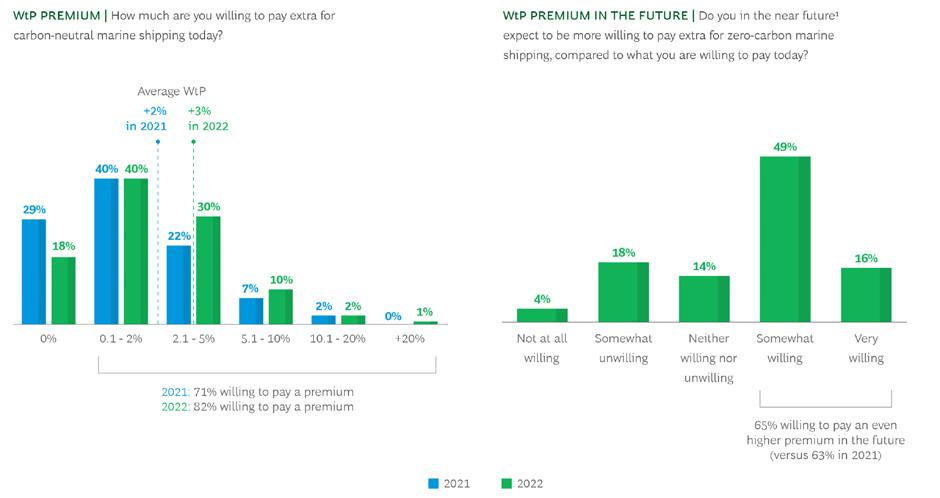
In addition to increased WtP year on year, more shipping customers are responding that they would be more loyal to a zero-carbon shipper (Fig. 2). Overall
loyalty is higher (71% in 2022 versus 67% in 2021), with a significant shift in the low WtP segment – where only 11% of respondents were not inclined to be more loyal in 2022, compared with 20% in 2021. This higher level of commitment poses a clear opportunity for shipping companies and
their customers to forge closer partnerships to share both the costs and benefits of a decarbonized value chain.
While regulation remains the most common driver of WtP premiums, demand in the shipping customers’ value chain – thus including demand from consumers

– is playing an increasing role, rising from 29% in 2021 to 34% in 2022 (Fig. 3) Such growth included an increase of more than 9 percentage points in the high WtP segment and more than 5 percentage points in the low WtP segment. This dynamic mirrors a general consumer trend, as 57% of consumers are willing to change their purchasing habits to help reduce negative environmental impact and 33% are already choosing brands that have publicly embraced environmental or social causes, according to a report by the Mærsk Mc-Kinney
Møller Center for Zero Carbon Shipping
The data implies strong potential for the shipping industry to realize higher carbonneutral premiums.
A further driver of WtP is the notion that shipping customers stand to gain competitive advantage by using carbon-neutral shipping. In our 2022 survey, 63% of respondents believed in this principle, compared with 59% in 2021 (Fig. 4). In parallel, the idea that zero-carbon shipping cannot deliver a competitive advantage was believed by 21% of respondents in 2021, but only 12% in 2022. Further, a growing proportion of survey participants believe that competitive advantage driven by carbon neutrality can deliver financial benefits. Such responses indicate that decarbonization is being increasingly seen as a competitive asset, not just a compliance obligation. They also suggest that many shipping customers expect to be commercially hurt if they don’t act.


Looking ahead, the future increase in WtP is expected to be catalyzed by regulation, which will not only remain a fundamental driver but should also grow in
1 Pool of respondents was limited to those having indicated greater WtP in the future

Given that a WtP premium of 10% to 15% annually is required to fund decarbonization by 2050, it’s clear that hoping for the market to solve the funding gap ‘organically’ by itself is not a winning approach to achieving the goals of the Paris Agreement. The current WtP growth trajectory of 30% per year will not reach the 10% threshold for years to come. It’s also evident that consumer behavior holds an increasingly vital key for closing the gap.
Taking a broader perspective, overall sustainability awareness among consumers is roughly 80%, with about 70% willing to pay a small premium (5%) for sustainable consumer products, according to the Mærsk Mc-Kinney Møller Center. Fortunately, fully decarbonizing the value chain for many consumer products costs less 5% of the products’ price. For example,

importance. Regulatory steps taken over the past year include, among others, the European Union adding shipping emissions to its Emissions Trading System, as well as
its launching of FuelEU Maritime. Further, the US proposed its Clean Shipping Act in July 2022, and Japan has publicly expressed support for a carbon tax.
in a recent study coauthored by BCG and the World Economic Forum , we found the cost to be less than 2% ($1) for a $50 pair of jeans, less than 1% ($4) for a $400 electronic device, and less than 4% ($1) for a $25 shopping basket. Consequently, there is real potential to utilize consumer demand to close the gap between today’s 3% WtP premium for zero-carbon shipping and the required 10% to 15%.
Solutions to accelerate this process are already in progress. Policymakers and regulators hold a good deal of influence in facilitating change and need to move forward in instituting carbon taxes to help fund the green transition. Beyond a carbon tax, policymakers can also provide fiscal advantages for companies that adopt green solutions and support green investment and innovation. Further, they
can strengthen environmental and climatechange legislation; for instance, by expanding reporting requirements.
Unlike regulators, other players in the shipping ecosystem must act through voluntary initiatives such as communication
Shipping companies, their customers, and financial institutions can be more forthcoming in communicating to their customers that it can be financially beneficial –as well as helpful to creating competitive advantage – to adopt green value chains. This principle is evidenced, for example, by a demonstrated lower cost of capital for firms with higher environmental, social, and governance ratings. Such players can also enter strategic partnerships to drive concrete decarbonization action. For example, banks can offer favorable interest rates to shipping companies that invest in green solutions. Further, large shipping customers can sell a green value chain to their consumers, and then partner with shipping companies by committing volumes to green shipping. Such partnerships can bolster green transition by
and cultural levers to realize the potential influence that consumers hold. All in all, a cooperative, combined effort will be required from regulators, shipping companies, and shipping customers as well as from financial institutions.
facilitating the sharing of investments that are too large for any individual player to bear alone. Moreover, they can make the green agenda a stronger priority among companies and set an example to inspire change.
Some companies have chosen to act as frontrunners for green solutions in order to foster transition among peers and customers – not just responding to demand but increasing (green) supply to create demand and generate new infrastructure in the value chain. Nonetheless, being a frontrunner is not a requirement for taking positive decarbonization steps and starting one’s own journey.

Examples among shipping companies include Maersk, CMA, and COSCO, which have each committed to making significant investments in vessels capable of running on green methanol. And giants such as IKEA,
Within communication and cultural initiatives, we see three overall levers for achieving carbon neutrality. These include pushing for a green-positive culture, improving the perception of green offerings, and boosting overall transparency (Fig. 5).
Amazon, and other large shipping buyers have collectively committed to zero-emission shipping by 2040.
Shipping companies can also engage in the public debate to help shape the views of their customers and of policymakers –and in so doing create a seat at the table for their organizations. Further, these customers can leverage the increasing awareness and interest in sustainability issues among consumers to make decarbonized products more attractive, both through day-to-day marketing and longer-term campaigning. Increased consumer WtP for goods is expected to be highly effective for some segments, as the effect of raising prices slightly for some products (such as apparel, electronics, and consumer goods) can help finance decarbonization.
Both shipping companies and their customers should communicate the benefits – beyond reduced emissions of choosing green alternatives. Indeed, a BCG study showed clearly that consumers value other social and environmental topics above carbon emissions in multiple industries. Moreover, shipping companies need to understand and act on responsiveness to green products, working closely with their
Shipping companies need to confirm the impact of choosing green services compared with traditional services. This can be partly achieved, for example, through fully transparent carbon accounting and billing practices such as specifying carbon
customers to identify what matters most to them, and determining how a premium can or cannot be obtained. A one-size-fits all approach does not work.
Clearly, the key social and environmental topics of consumers vary significantly by industry. For example, recycling and reduced waste are top-of-mind within the food, drinks, and personal-products sectors, while fair-labor practices and
emissions on invoices and receipts. Players should also work toward creating standardized classifications for decarbonized shipping, possibly in collaboration with policymakers. Such an initiative could include fuel usage – including production emissions
Ultimately, decarbonization and WtP in the shipping industry is moving in the right direction. Nonetheless, the gap between current behaviors and target behaviors is still
significant. To narrow and eventually close the gap, policymakers, shipping companies, shipping customers, and financial institutions must fully recognize the urgent need for action in
materials hold the most attention within fashion. Positive branding can show how little it takes of the consumer to make a sustainable choice, evidenced by another recent BCG study showing that consumers who do not buy sustainable products perceive the premium of green products as higher than it actually is – uncovering the potential value of reversing these misconceptions.
and measurement methods, such as well-towake (the sum of upstream and downstream emissions) or tank-to-wake (downstream emissions) – as well as ship classifications according to the International Maritime Organization’s Carbon Intensity Indicator.
managing and reversing climate change, taking all the necessary and cooperative steps. The stakes could not be higher – and the moment for forceful and sustainable action is now.
Boston Consulting Group is a global consulting firm that partners with leaders in business and society to tackle their most important challenges and capture their greatest opportunities. Our success depends on a spirit of deep collaboration and a global community of diverse individuals determined to make the world and each other better every day. Go to bcg.com to discover more.
Shipping’s value chain can expect continued pressure on targets and commitments until it clearly aligns with an Intergovernmental Panel on Climate Change (IPCC)-derived definition of the steps needed to avoid temperatures rising above 1.5°C. This pressure will come both from the policy process at the International Maritime Organization (IMO) and from the landscape of voluntary initiatives and commitments that intensify scrutiny and expectations of transparency. At a sector level, 1.5-alignment means taking even greater steps than many had already factored in as sufficient – much of shipping’s transition away from fossil fuel use will need to have been achieved by the end of the 2030s. Managing the risks and opportunities that this creates starts with understanding where pressure on targets comes from and what is driving these latest developments in their specification.
Alot has been asked of the shipping sector. As recently as 2015, the IMO made clear there would never be a cap on greenhouse gas (GHG) emissions from ships. By 2018, that certainty had been shredded by the adoption of the GHG reduction targets in the Initial IMO GHG Strategy. To shipping’s credit, many stakeholders across the sector’s value chain did not start lobbying against this new objective, but reacted with enthusiasm and interest in how this could be achieved.
Setting aside the relationship between Net Zero and 1.5, emphasis on the latter is relatively new in many industries, including shipping. There are two explanations for how the temperature target shifted, first from 2°C (pre-2015) to “well below 2, pursuing efforts for 1.5” (Paris Agreement, 2015) and now, increasingly, to 1.5°C.
Politicians move as fast as electorates allow. They have found it easier to start
In the run up to the 2018 adoption of the Initial IMO GHG Strategy, governments and non-government organisations made various pitches for what was necessary and what was feasible. These played out in the classical spirit of compromise so that the numbers agreed (at least 40% carbon intensity reduction by 2030, at least 50% GHG reduction by 2050) were not derived from the climate science but from what was politically feasible at the time.
The IMO’s concessions to those member states existentially threatened by global
Multiple studies have identified the need for a fundamental shift in the fuel mix and energy supply chains. Characteristic pragmatism has been applied and a mix of positions from early adopter to fast follower have been considered and in some cases adopted.
Since then, private sector initiatives and broader government agendas have increasingly aligned around ‘deep’ decarbonisation. Ahead of the 26th Conference of the Parties to the United Nations Framework Convention on Climate Change (COP) in 2021, the
with a more distant transition, and as evidence supporting the viability of decarbonisation increases, along with evidence showing the tragic impacts of climate change, they have increased ambition. Evidence of impacts on the most vulnerable have increased, and their voices are increasingly being heard. Much international political leadership on climate, including at Paris, has come from the
temperatures exceeding 1.5 were small: the carbon intensity and GHG reductions were expressed as “at least” implying that they should set the floor rather than the ceiling of what should be achieved; the level of ambition included a verbal nod to the cumulative emissions objective: “whilst pursuing efforts towards phasing [GHG] out […] as a point on a pathway of CO2 emissions reduction consistent with the Paris Agreement temperature goals.”
The release of Initial IMO GHG Strategy (April 2018) was on the cusp of the organization
predominant language used by businesses and many governments to describe this was ‘Net Zero by 2050.’ However, the language of decarbonisation has been changing, and increasingly emphasises the need to act to avoid temperatures rising more than 1.5°C (above pre-industrial temperatures), the goal included in the Paris Agreement. Are these the same things? What does avoiding temperatures rising more than ‘1.5’ really mean? And what tools can be used to manage this situation?
most vulnerable to climate change. The 50+ club of countries at the lowest income levels and highest susceptibility to climate impacts were an effective force behind the Paris Agreement, and have continued to build profile ever since. For these countries 1.5 is a guardrail against an existential threat. Unlike in many developed economies where climate change is perceived as a cost or even an opportunity.
receiving the IPCC’s special report Global warming of 1.5 Degrees Celsius, and as such many countries deemed it inadmissible as evidence during IMO negotiations. In 2023, the IMO will no longer be able to ignore the IPCC’s special report, nor the more recent IPCC AR6 – detailing in much greater specificity the impacts of temperature rises, as well as the mitigation response needed to avoid temperatures exceeding 1.5°C. The interim period has seen a large number of governments increase their ambition (as expressed in
nationally determined contributions, NDCs), and leaders express the need to align shipping to a 1.5 pathway and reach zero GHG emissions no later than 2050.1
So far, IMO discussion on what numbers to use in the revision of its GHG strategy have – unsurprisingly – not been conclusive. This debate will likely continue until the 80th meeting of IMO’s Marine Environment Protection Committee (MEPC) in July 2023. It is impossible to see where compromise and consensus will land until that debate; notably the warmup discussions saw majorities (of member states) supporting a significant strengthening of the ambition as currently expressed.
At MEPC 77, in 2021, led by Kiribati, Marshall Islands and Solomon Islands,
14 countries including US and UK supported a resolution that committed IMO to revise its ambition from 50% reduction to achieve zero GHG emissions from international shipping no later than 2050.
The majority of countries speaking on the matter supported the objective of reaching zero or net zero GHG emissions no later than 2050 (many countries thought that this was a decision that should be finalised in 2023 and so could not support the resolution). 2
This political landscape of consensusbuilding and ratcheting-up (raising over time) of ambition is fundamentally unhelpful for a sector with long-life assets which need to be designed and built for decades
There are two reasons that a potential target of net zero by 2050 should not be seen as equivalent with a 1.5°C-aligned target.
First, net zero by 2050 expresses nothing of the pathway between now and 2050. It implies significant reductions between now and then, but the ‘shape’ of the CO2 pathway is not defined. Temperature rise is proportional to the cumulative emissions, e.g., the sum of anthropogenic emissions occurring between pre-industrial ages and the points at which they reach net zero. The IPCC investigates myriad pathways and models on behalf of the United Nations Framework Convention on Climate Change (UNFCCC), and from these the expression for 1.5-alignment used in its advice to policymakers estimated pathways of CO2 reduction3 that became more commonly referred to as “approximately halving of GHG emissions by 2030, net zero by 2050.” Only pathways that achieve that – or an equivalent amount of cumulative emissions between now and 2050 –are 1.5-aligned in the eyes of UNFCCC/IPCC.
Second, net zero, in international climate policy, is an application of the concept under which any country can reduce emissions both by reducing emissions from things that put GHG in the atmosphere (sources) and by increasing deployment of things that ‘suck’ GHG out of the atmosphere (sinks). Generating power from biomass and burying captured CO2 underground is a sink; planting more trees (afforestation) is a sink. These are options that make sense for countries and the companies they regulate, who can access land on which they can grow biomass and under which they can store CO2. Shipping as a sector does not
have sinks, only sources. Thus it is not clear how the “net” in “net zero” can be applied to international shipping. At a sectoral level it must imply the option to offset – to purchase credits of negative emissions from countries to counter ongoing positive emissions from ships.
What this means is that in practice, the year emissions go to zero is not necessarily the critical year. There may well be a long tail of emissions that take a while to reach zero on a well-to-wake basis. A more important point on the GHG reduction curve is the point by which a large majority of the GHG reductions will need to have taken place if cumulative emissions are to be 1.5-aligned.
The specifics vary depending on how early the reductions start in practice, but with time advancing and carbon budget diminishing, the only option left is a very steep reduction in the 2030-40 period – 80% GHG reduction by 2040
of operation. The challenge for the sector is therefore not to get seduced into thinking any IMO agreed ambition is permanent or definitive, but to plan for it to increase ambition over time. As long as there is compromise or misalignment with IPCC advice to policymakers, there will be a ratchet. Taking guidance from the ‘floor’ of the debate (e.g., current IMO targets) is a gamble, as long as the ‘ceiling’ of the debate is set by IPCC.
1 The UN secretary general and US President Biden have both been explicit about shipping needing to decarbonise in line with the 1.5°C temperature goal. The G7 has also expressed in their communique in 2022, the importance of shipping reaching zero GHG emissions no later than 2050.
2 Shaw A. Smith T.W.P. and Rojon I. (2021) Outcomes and implications of MEPC 77, expanded analysis.
(if substantial reductions are achieved by 2030) or 90%+ GHG reduction by 2040.
If this logic, as is likely, plays out through the political process of ratcheting ambition, and if richer economies are to take more of the burden and spare some budget for those in lower income countries, the implications for shipping companies can roughly be derived: companies operating on trade routes servicing developed economies may be expected to reach zero on a well-to-wake basis by 2040. The pathways of GHG reduction required for 1.5-alignment across all sectors and all of global shipping would not be far behind.
3 IPCC AR6 “Climate Change 2022: Mitigation of Climate Change”, para C.1.2: “[…] In pathways that limit warming to 1.5C (>50%) with no or limited overshoot global net CO2 emissions are reduced compared to modelled 2019 emissions by 48% [36-69%] in 2030 and 80% [61-109%] in 2040 […]”
Several options for decarbonising shipping have ‘negative’ upstream emissions that
cancel out at least some of the GHG emissions that occur at the point of combustion.
Growing biomass absorbs CO2 from the atmosphere, which is released when it is
used as a fuel. Several words are often used to express this – carbon neutral etc. Carbon capture and storage (CCS), whether on land or on a ship, follows a similar logic, though its ‘neutrality’ relies on verification and crediting of the subsequent sequestration of the captured GHG emissions.
The performance of all of these options can be more precisely expressed as ‘zero/ low GHG on a well-to-wake basis’ than net zero, because this also defines the system
boundary of the accountancy – everything from the point of extraction/production, through transport, distribution, storage and onboard use. This definition clearly excludes the use of offsets. It also recognises that there are many options that whilst not zero, can enable material reductions. In practice, most biofuels produced at this point in time are not zero on a well-to-wake basis because of losses and energy used in their supply chains. However, they can be fairly credited
for the reduction they achieve by applying well-to-wake accountancy/guidelines.
The development of life cycle assessment (LCA) guidelines is an ongoing task of the IMO’s MEPC – the LCA guidelines that will help clarify how different feedstocks, fuels and machinery options (including CCS used on land and on board) will be evaluated for their GHG reductions (and some default values) are due for publication at MEPC 80 in July 2023.
Much resistance to limiting shipping’s emissions ahead of the Initial IMO GHG Strategy was derived from statements about how crucial shipping is to world trade. It also pointed to the absence of solutions.
On a technical basis, the latter objection has all but been removed – the primary technology questions are how to minimise the cost of eliminating GHG emissions, and how to maximise safety during the transition.
Whilst the criticality of shipping to economic development and modern day standards of living is not disputed, this logic is not easily applied to every segment of IMOregulated shipping (is cruise shipping, or even container shipping of high value goods to high-income economies, crucial in the same way as grain shipments?).
On the other hand, avoiding dangerous climate change is a zero-sum game – if shipping has a bigger share of the pie (the remaining GHG emissions before we exceed 1.5), then other sectors or countries need to take a smaller share of the pie. A sectoral beauty contest to determine which sectors provide most ‘benefit to society’ is difficult to constructively resolve. How does shipping rate in comparison to heating and cooling? Chemicals? Concrete and glass? Agriculture?
In such a debate shipping also faces a political disadvantage: could politicians realistically be expected to come to the defence of an international sector that pays negligible rates of tax, and ask more of their domestic (tax-paying) emitters? At least in the UK, as shown in Fig. 2, shipping is
A natural response to an evolving political expectations and requirements from the IMO is to shelter in ambiguity – to adopt language and commitments that convey high levels of ambition but leave room to manoeuvre in practice. There are downsides that can arise from such a strategy.
This will prolong and possibly widen the
not considered a hard to abate sector but a sector expected to do a proportionate share of the total reduction, to achieve the whole economy net zero objective.
The IPCC’s simple answer, when using at multi-sector modelling to achieve 1.5, is that all sectors need to move urgently
gap between the IMO ‘floor’ and the IPCC ‘ceiling.’ Political positions, especially in the IMO, are influenced by language and commitment in industry. If leading industry stakeholders are ambiguous about their support for the IPCC ceiling, there is less pressure on political negotiations, and less evidence of support that progressive countries can leverage.
with deep reductions now. Given that essentially all sectors are behind in their reductions, it is hard to argue there will be future ‘spare’ budget for offsetting, or allowing any sector with potential to reach zero emissions a delay or a larger than proportionate share of the pie.
Ambiguity in commitments – even when well-intentioned – can create a slippery slope towards accusations of greenwashing, leaving companies in the worst of both worlds (bad publicity and constraints on operation).
Allegations of double standards, where companies are seen to be profiting from the upside of the transition while also hindering
it through other activities, can be even more damaging. Very tangible risks such as action
from activist shareholders and/or climate litigation have already become a part of the risk landscape and may become more common as scrutiny increases.
Achieving a 1.5-aligned transition in shipping is certainly challenging. The implied rate of change demands that early adopters have some confidence that the wider transition will materialise at a speed that does not leave them exposed. It requires risk management for investment decisions taken in good faith, but whilst technology pathways are still clarifying.
Beyond what it asks of individual organisations, the sector as a whole will need to rapidly reskill its workforce. Beyond shipping, other sectors will need to do their part to meet demand for new energy sources in shipping.
These are changes with long lead times, that require starting now, in the early 2020s, if the adoption of solutions can happen in time. As an example, shipping’s transition implies a rate of growth in fuel production based on clean hydrogen of 9% per year, starting from
2022. However, a rate of growth of almost twice that (17%) if starting from 2030. A rapid deployment of new vessels, an intense programme of retrofitting, and even some early retirements and ship scrappage are likely to be part of the journey.
These challenges invite the counterargument that a 1.5-aligned transition is not ‘realistic,’ and that regulatory certainty on costs and specific timelines is a pre-requisite for action. Such an argument may prove to be a self-fulfilling prophecy: as the timelines for technology deployment slips, the window for 1.5-alignment via technology transition closes. The result may drive a wedge between shipping and its stakeholders – financiers and customers can pivot comparatively quickly if required, and policymakers (including national governments) may take more disruptive approaches to reducing shipping’s emissions.
Rigorous foresight of what is and is not realistic in a transition is hard to obtain. The nature of transition is that it is a process involving diffusion of new ideas and rapid innovation. At this point, we can have an idea of what it could look like, but innovation regularly creates breakthroughs in technology, operations, business models and policy design that mean estimated rates of change happen faster than expected. The classical illustration of this phenomenon is the consistent underestimation of renewable energy such as solar and wind and batteries, both in terms of cost reduction and scale/performance increase. Organisations such as the International Energy Agency, throughout the early 2000s, consistently expected lower per annum growth rates than real capacity revealed when examined in retrospect
The tools to manage these risks have been in existence for some time. Clearly aligning corporate strategy to the science of IPCC and using the wealth of data and analysis in widely available IPCC reports is an obvious first step. These reports have retained a consistent message, albeit with increasing attention to the risks present above 1.5°C of warming as these have become more stark. They are written in scientific detail, but all come with ‘advice to policymaker’ executive summaries that are more accessible.
Some organisations have asked civil society to help them with assurance that a guide or strategy is 1.5-aligned. Examples of this include the Climate Bond Initiative, which has been an early adopter of requiring 1.5-alignment as a minimum threshold to achieve accreditation, whilst many other similar initiatives continued to legitimise less ambitious thresholds.
However, the wide circulation of corporate commitments that did not evidence
their alignment to the Paris Agreement’s temperature goals, especially since COP 26, has attracted attention at the highest levels of the UN. This led to the commissioning of a high-level expert group brought together to review current commitments by businesses, financial institutions, cities and regions, and produce guidance for how they could be more standardised and more specific. The report out to COP 27 from this expert group contains specific and explicit requirements that are a minimum for any pledge/commitment avoiding being labelled as greenwashing, including public disclosure of a pledge/ target generated using a robust methodology consistent with limiting warming to 1.5°C, verified by a third party (recommending SBTi, PCAF, PACTA, TPI, ISO as third parties); a sequence of 5-yearly targets (net zero 2050 is not good enough); all GHG emissions and separate targets for material non-CO2 GHG (e.g., methane); and full value chain and activities (including scope 1/2/3).
This outcome provides direct justification for demands from analysts for clarification and transparency on any company’s progress in GHG emission reductions. Importantly, the inclusion of all scopes (e.g., not just the direct emissions of a company, but those from its supply chains), means that customers of shipping will be under even more pressure to find reductions from the sector that can ensure their overall ability to authoritatively claim alignment with the Paris Agreement.
Of the third parties explicitly endorsed by the UN’s high-level expert group, one of the better known is the Science Based Target Initiative (SBTi), which publishes sector-specific guidance. Its recently published method and tools for Science Based Target Setting for the Maritime Transport Sector presents approaches that both operators and customers of shipping can use to ensure alignment with 1.5.
The Getting to Zero Coalition is a powerful alliance of more than 200 organisations and companies within the maritime, energy, infrastructure, and finance sectors supported by governments and NGOs. The Coalition is committed to getting commercially viable deep sea zero-emission vessels powered by zero-emission fuels into operation by 2030. The ultimate ambition of the Getting to Zero Coalition is to achieve shipping’s full decarbonisation by 2050. Head to globalmaritimeforum.org/getting-to-zero-coalition to discover more.
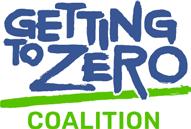
UMAS is a sector focused, commercial advisory service that draws upon the advisory and management system expertise of UMAS International Ltd combined with the world leading expertise of the UCL Shipping Team. Visit u-mas.co.uk to learn more. The presented insight brief has been prepared by UMAS on behalf of the Getting to Zero Coalition (with funding from the Mission Possible Partnership) and was first published by Global Maritime Forum

The 2020s have finally brought about a situation where the whole shipping industry, under pressure, is considering various means and forces that will be used to reduce maritime emissions in the coming decades. Our shipping company from Finland has been known for its ambitious environmental policy even before sustainability (and corporate responsibility) became trendy. Carbon-neutral goals and a vision for more sustainable shipping have been present throughout the company’s 36 years. At the end of last year, the familyowned Meriaura merged with a listed company, opening more possibilities for green transition investments.
The company’s green values go all the way back to founder Jussi Mälkiä’s young adulthood. As a young man in his 20s, Mälkiä and his friends bought the tugboat Aura in 1986 and established a company with the intention to make shipping more sustainable. Their first bio-oil experiment was carried out on this tugboat as early as 1992. The pilot was partially successful: the main engine worked well, but unfortunately, the generators did not. At that point, it was already clear that some capital was needed before more serious tests could be done.
Many years have passed since then, and Meriaura has grown to become a group of companies. In 2009, Sybimar, a company developing waste-based bio-oil, joined the pack. Bio-oil was made of fish residues in the first experiments. Early on, one of the primary objectives has been to produce secondgeneration bio-oil: one that doesn’t compete with the food industry.
The next step on the path was designing and building the open deck cargo carrier Meri in 2010-2012. As far as we know, she was the first commercial ship and freighter designed to use bio-oil, thus an important test platform for using bio-oil in shipping. Facilities for producing biooil were improved, and a production plant in Uusikaupunki opened in 2015. A biogas plant was built as part of the ecosystem, feeding energy for bio-oil production, this time made of household food residues.
The biofuel-powered ‘EcoCoaster’ sister vessels Eeva VG and Mirva VG were
constructed in 2016. Both were using bio-oil regularly until the winter of 2020 when an investment decision was made to improve the production plant’s capacity and the fuel’s quality. The development project aims to formulate a biofuel that is more uniform in quality than the previously used ones, which can be standardised for ship use. In addition to developing the production line, Meriaura also invests in the ships by installing equipment that enables the use of blended fuel. The blending machinery can be used to unify the mixing ratio of bio- and fossil fuel, allowing for the continuous use of the bio-component. Neither will the location of the refuelling point for the biofuel (Finland in the case of Meriaura’s own biofuel) limit the use anymore. This project is almost completed, and we expect biofuel consumption to grow significantly in 2023.
Based on the biofuel-powered vessels, Meriaura has launched the close-to-carbon-neutral sea transport concept EcoVoy. By using 100% waste-based biofuel, the lifecycle emissions of individual transportation are 97.7% lower than with conventional fossil fuels. EcoVoy enables cargo owners to decarbonise their value chains from a logistics point of view, creating added value for their business.
Calculations on CO 2 reductions achieved through an EcoVoy contract, in the form of a carbon footprint report, are made using nauticAi’s software to report these accurately to the customers. Meriaura
commits to utilising biofuel across its biofuel-compliant fleet until equivalent calculated carbon emissions for the specific EcoVoy contract are achieved.
The biofuel we use, VG Marine EcoFuel (MEF), is an ‘in-house product,’ produced by Meriaura’s daughter company VG-EcoFuel. The commodities of MEF are completely derived from industrial side streams and recycled materials (mostly used cooking oil, UCO) sourced in the Nordics. MEF’s well-to-wake process is independently audited and assured by a third party, and it has been granted International Sustainability and Carbon Certification (ISCC). During the abovementioned development project, a more extensive raw material base was ensured by expanding UCO’s collection area from the Turku region to other parts of Finland.
Just a few years ago, valuing low-emission transport was marginal. Lately, clients have been showing an increasing interest in EcoVoy. For the moment, biofuel is the most climate-friendly available already today option for sea transportation. With the biofuel development project mentioned earlier, Meriaura will be able to enter into new EcoVoy charter contracts.
The more you know, the farther you go (and on less bunker)
Marine fuel is the most significant source of emissions in shipping, thus of our operations too. Therefore, emissions from Meriaura ships are closely monitored and related to transport performance. In 2021, a software and monitoring system
on biofuels, carbon-neutral sea transportation, data-led shipping operations & emission reduction, one EU ETS for all, and a host of other climate-friendly initiatives
was developed for monitoring the CO2 emissions of the whole fleet. Emissions per tonne of transported cargo per nautical mile, or ‘tonne-mile’ in short, was selected as the most sensible monitoring unit. From the data collected, the essential variables for the calculation are the nautical miles travelled, while of these, the share of ballast voyages, cargo capacity utilisation, and the fuel consumed.
The fleet data set covers two years and forms a benchmark for setting future shipping operation emission reduction targets (currently by 4% annually). Along with efficient operations and minimised ballast voyages, increasing the use of bio-oil is the most effective means of achieving the set
decarbonisation goals. To boost the development even further, our company has a newbuilding program underway, with the idea of supplementing the renewable fuel selection with green ammonia in the next few years, still naturally complemented with biofuels.
At Meriaura, we think that it is crucial for shipping and all commercial vessels
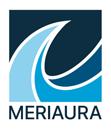
of different sizes to be included in the EU Emission Trading System (EU ETS). Otherwise, there will be loopholes and shortcuts, which is never good for reaching the target. According to Reuters, 45% of ships calling into EU ports are smaller than GT 5,000 – and, still, the block is leaving these outside its ETS. It is also crucial that all greenhouse gases, including methane, are taken into account.
It is not typical for a shipowner to lobby for their services to be included in EU ETS. Still, when your values have been green from the beginning, it is only natural to truly strive for the benefit of the environment and climate. An important factor from the climate’s point of view is that the funds collected from EU ETS will be directed to investment and innovation projects yielding real solutions for slowing climate change.
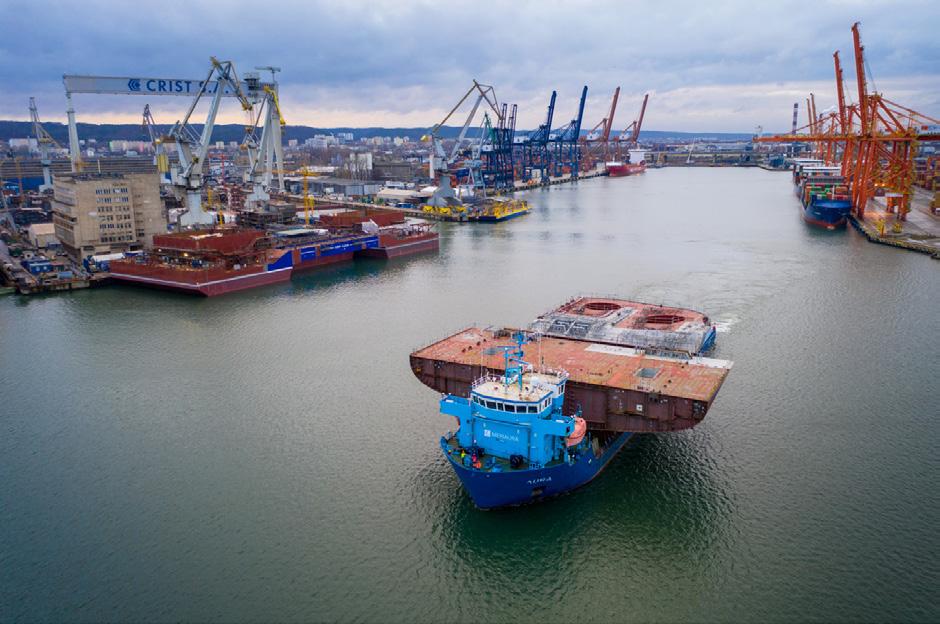
In November 2022, Meriaura and its subsidiary VG-EcoFuel, which collects and produces biofuels in the Group, merged with Savosolar Oyj, a listed company (Nasdaq Nordic) that designs and delivers large-scale solar thermal solutions to district heating producers and industry. With the listing, our resources and opportunities to promote the use of renewable energy and applications of the green transition in maritime transport increase. We want to invest in clean energy both on land and at sea.
Environmental sustainability requires a wide variety of actions, whether big or small. Meriaura’s environmental programme is audited and certified, and ISO14001 is underway. The third sustainability report in the company’s history will be published later in the spring of this year.
Besides working for the climate, we want to take action for our home sea, the sensitive and polluted Baltic. Meriaura has several years of experience delivering wastewater to reception facilities ashore, and we have highlighted the problem of the legislation allowing ships to discharge sewage into the sea.
Corporate responsibility is about volunteering – and it starts where legislation ends. Support from the clients and other interest groups is vital in working together across the field for a common goal: lowering the emissions caused by shipping.

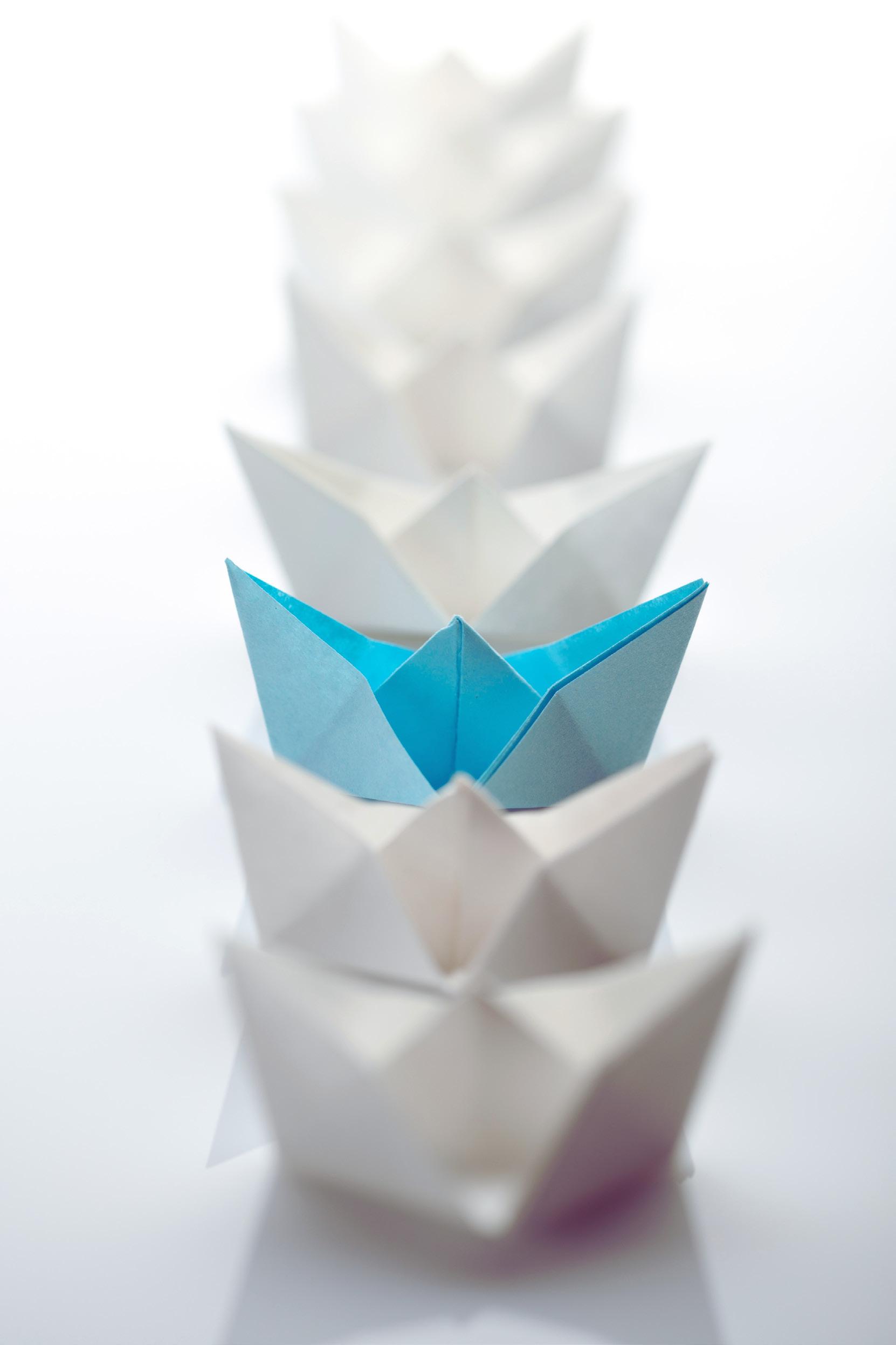

Except for the Russian war of aggression against Ukraine and its impact on transportation – on which we reported several times throughout 2022, hence this round-up will omit that area – the past year was more or less peppered with happenings taking place across two domains: shipping and all-things-green. Meanwhile, ports made certain advancements investment-wise, while a few digital twins were born.
The year 2022 brought about a mix of good and bad news for shipowners & operators in the Baltic (for the ugly check P&O Ferries’ sacking of 800 people out of the blue in the North Sea). The latter was caused by the coronavirus still reverberating around the regional ferry business, compounded last year by the galloping prices. The former, in turn, fell into the ‘bigger = better’ pattern, with the new tonnage often becoming companies’ flagships.
As such, 2021 ended and last year kicked off with the deployment of CLdN ’s duel-fuel (gas-driven) Faustine on the GothenburgZeebrugge route. The 217 by 32.2 m ro-ro, constructed by Hyundai Mipo Dockyard , offers 5,400 lane metres (lm) of cargo capacity. The South Korean shipyard will also deliver Faustine ’s sister ship. While these aren’t the biggest in CLdN’s fleet (Celine and Delphine offer 8,000 lm), that 5,400 lm is still considerably above the 2022’s 3,309 lm average for the Baltic/Scandinavian/ North Europe ro-ro market.
On 23 January 2022, Aura Seaways as the first and then on 29 April 2022 Luna Seaways entered DFDS’ Karlshamn-Klaipėda ferry service. The 230 by 32 m ro-paxes offer room for 600 passengers and 4,500 lm. Both were built in China, which led their owner to highlight a peculiar trait of ordering vessels in Far East Asia. Namely, both passed the Somali coast on their way to Europe – under arms! “We were accompanied by a special armed
guard on this section. We covered the sides of the open decks with barbed wire, all the doors were constantly locked, most of the lights were turned off and the shutters were covered with opaque material so that the ship would emit as little light as possible in the dark,” Mindaugas Nosavicius, Luna’s Captain, recalled. The company’s flagships replaced the ferries plying between the Lithuanian and Swedish seaports, said to have a CO2 footprint one-fifth lower than the older & smaller tonnage. The deployment of Aura and Luna also crowned Karlshamn and Klaipėda’s infrastructure investments, as the two seaports had to expend significant funds to accomodate what are now one of Baltic’s biggest ferries (hence world’s, too). In late September last year, Aura Seaways was used to successfully test the optimised (with newly converted ramps) berths 5 and 6 at the Port of Kiel ’s Ostuferhafen
In February 2022, Furetank announced the order placed with China Merchants Jinling Shipyard (Yangzhou) on the ninth vessel in the Vinga series, with delivery scheduled for January 2024. The 17,999 dwt 1A ice class tanker will offer cargo capacity of 20,306 m 3 across 12 epoxy-coated tanks. Apart from the possibility to run the dualfuel newbuild on liquefied natural gas (LNG) or its bio version (bioLNG\LBG), she will be equipped to operate cargo pumps with high voltage (6.6kV) shore power. “This is yet another step forward on our journey towards a fleet consisting entirely of climate
friendly vessels. Furetank wants to be an environmentally friendly and leading actor within the segment. With this newbuilding we will continue to implement all available technologies to do the best we can – now. It feels especially good to place the order in these unstable pandemic times; we have a strong belief in the future,” Lars Höglund, CEO, Furetank, commented on the order. Furetank ’s deal with China Merchants included an option for constructing more vessels. Consequently, in April and July 2022, this time Erik Thun and Thun Tankers opted for the tenth and Furetank for the eleventh Vinga (the former order came with an option for one more ship). The Vinga tankers are operated within the Gothenburg-located Gothia Tanker Alliance and eight are already sailing: four in Furetank’s livery, two in Älvtank ’s, and one piece in Thun Tankers and Desgagnés’. In March 2022, the Ferus Smit shipyard in the German Leer handed Thun Britain over to the Dutch-Swedish Thun Tankers, the second in a series of two ‘Not Always Afloat But Safely Aground’ tankers (Naabsa). The 79.9 by 15 m, 4,250 dwt, 1A ice-class vessel offers 4,800 m3 cargo capacity (across eight coated tanks suited to transport oil products and IMO type II chemicals). Like her sister ship Thun Blyth, Thun Britain has been chartered to the Geos Group, a supplier and trader of marine gas oil. The pair serves harbours with tidal restrictions (a.o., Guernsey,
Alderney, ports around the Western Scottish Isles), being able to rest on the seabed while (un)loading during low tide.
Then in May 2022, the same shipyard and shipping line struck a deal on constructing two 7,999 dwt tankers. The 1A ice-class newbuilds are scheduled for delivery in 2024’s first half and will serve coastal traffic in northern Europe. The R-class tankers will feature several eco-solutions, including battery packs. They will also be onshore power supply (OPS)-ready. “The R-class has been designed to be the most resource-efficient vessel on the market with minimal environmental impact […],” Joakim Lund, CCO, Thun Tankers, commented.
Also in February last year, Erik Thun shared that Ferus Smit was entrusted with delivering two 6,380 dwt dry bulkers, the first to be already handed over in spring 2022, while the other one year later. The 1A ice-class newbuilds will be equipped with machinery for connecting to OPS (both 50 and 60 Hz) for zero-emission at berth, plus heat recovery and LED lighting for reducing onboard energy consumption. The two will feature a frequency converter, making it possible to run the main engine on a variable RPM depending on the load while at the same time still supplying the electrical AC demand with the shaft generator. Henrik Källsson, Erik Thun Group’s Deputy Managing Director, said on the occasion, “In Erik Thun, we have always had a high focus on resource efficiency translating into modern environmental care. It is a challenge to build vessels fit for the future, but our long experience gives us a good basis for continual improvement and innovative design.”
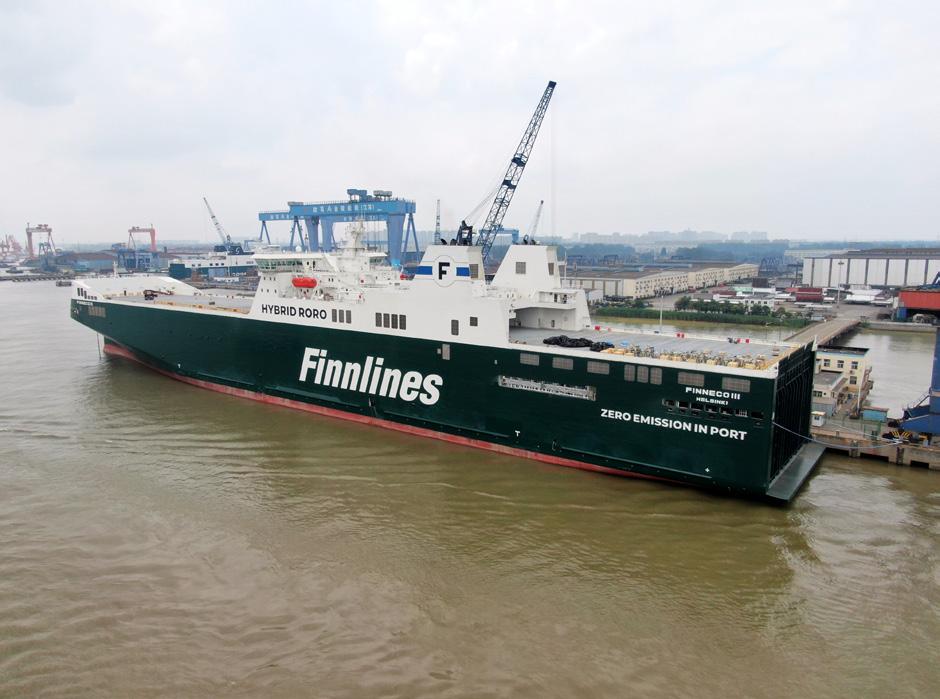
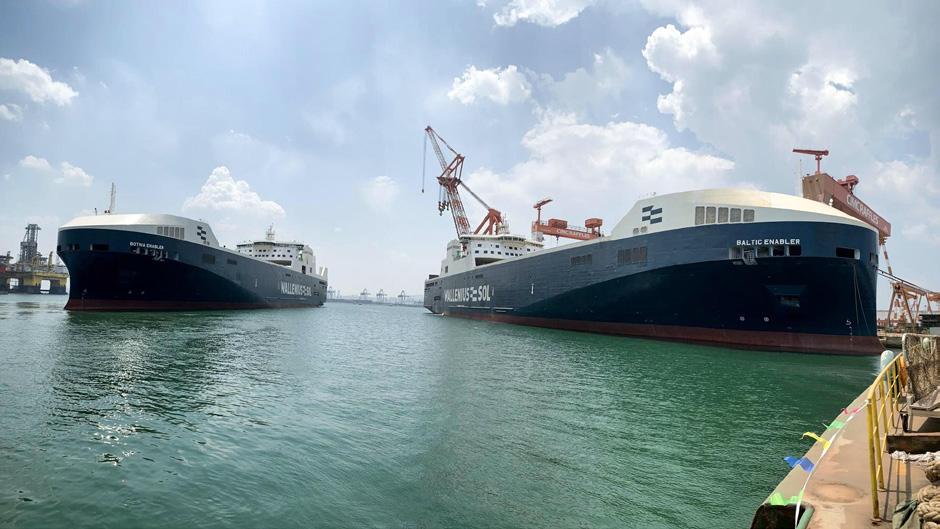
Later in the middle of spring, Ferus Smit launched Erik Thun’s Nordic Crystal in its shipyard in the German Leer, the first in a series of two new dry bulk carriers. The 99.99 by 13.35 m, 6,380 dwt, 1A iceclass vessel offers 245k cubic feet of carrying capacity spread across two holds. The Swedish shipping company took hold of Nordic Crystal in May 2022 while of her sister ship – it will do so by March 2023 (Baltic Crystal was launched at Ferus Smit’s yard in the Dutch Westerbroek on 22 December 2022). Both will serve traffic in the Baltic. Worth noting is that Nordic Crystal was the 40 th ship Erik Thun put together with Ferus Smit.
February of 2022 was indeed a month rich in ship news. After a five-week-long journey from China, Viking Line’s brand-new cruise ferry Viking Glory called to the Finnish Port of Turku, where she got outfitted to start serving the Turku-Åland IslandsStockholm route as of 1 March 2022.
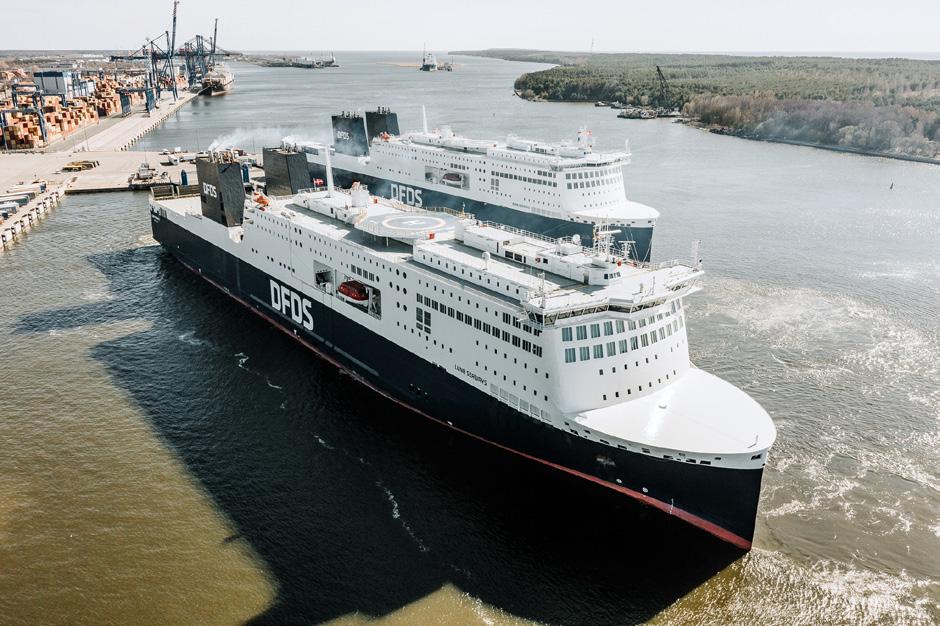
63,813 vessel of the 1A Super ice class is 222.6 m long, offering 922 cabins for 2,800 passengers and 1,500 lm for cargo. Like her partner on the route in question, Viking Grace, Viking Glory has dual-fuel engines, making it possible to run on LNG/bioLNG. The newbuild also features other solutions to lower her environmental impact, like heat & cold recovery and dynamic ventilation and lighting. Jan Hanses, Viking Line’s President and CEO, highlighted, “The Turku route is very important for Viking Line as well as for passenger and cargo service between Finland and Sweden. We are extremely proud that we once again can take a vessel that represents the very latest in new advances to Turku –one that both improves the level of service on the route and reduces the environmental impact. There is great interest in Glory, and sales have gotten off to a really good start.” Erik Söderholm, the Port of Turku’s Managing Director, added, “We are really excited about Viking Glory ’s arrival. In our experience, a new vessel makes the entire route more attractive and increases passenger volumes. Before the COVID pandemic, we had more than three million passengers annually and now, post-pandemic, we see that there is great pent-up demand for travel […].” He also underlined, “We serve passengers from all across Finland since people can take the train all the way to the ferry terminal – that is a rarity even in global terms. There is also great potential in international tourism. Passengers from the Far East have been delighted with the day sailings, and being able to see our fantastic archipelago has been a great experience for them.” Though 2022 brought Viking Line a new flagship, it was also a year when the company – and the Baltic Sea together with it –bid farewell to two seasoned ferries. First, in August, Corsica Ferries purchased Amorella for a total sale price of €19.1m. The ferry, lately serving the Helsinki-MariehamnStockholm route alongside her sister ship Gabriella, was handed over to the new owners later in October. Jan Hanses said about the sale, “Amorella , which has operated for Viking Line since 1988, is one of the loyal servants in the company’s fleet. She has been a mainstay that has maintained regular traffic on the company’s core line between Turku, Åland and Stockholm. The staff’s efforts and commitment over the years have been crucial to the ship’s traffic. This does not mean that we are abandoning the Helsinki-Stockholm route, but that we will continue the traffic with one ship during the winter and evaluate strategic alternatives for the continuation of the route.” Viking Line also said that it intends to provide Amorella’s crew with
employment on board its other ferries. Before 2022’s end, news broke out that Viking Line’s Rosella will leave the Baltic. The Greek Aegean Sealines Maritime bought the ferry for €11.25m, planning to employ the 1980-built-in-Turku ship in the Aegean Sea. Rosella was lately serving the Kapellskär-Mariehamn service of Viking Line, with her last crossing on 8 January 2023. Though in good condition, Rosella couldn’t further keep up with Viking Line’s policy on minimising its environmental impact. Faced with high bunker prices and the incoming emission trading, the company decided to dispose of older tonnage. Meanwhile, Viking Line denied that reflagging Viking XPRS (from the Helsinki-Tallinn link) to the Finnish flag had to do anything with putting her on the Kapellskär-Mariehamn route. As such, the service’s future remains unknown.
Also during the autumn of last year, Viking Line purchased (with its own funds) 17.1% of shares, for nearly €10.3m, of another Finnish company located in Mariehamn on the Åland Islands: Eckerö. Commenting to Ålands Sjöfart, Jan Hanses did not reveal whether the two companies will merge. He underlined that the share buy was done to keep Eckerö’s stock on Åland. The Eckerö Group comprises a few shipping lines that operate in the Baltic, including the Helsinki-Tallinn, VuosaariMuuga, and Eckerö-Grissleham ro-pax services. The Group’s Eckerö Shipping disposes of a fleet of three ro-ros. Eckerö also holds the Birka Cruises brand, the operations of which were terminated in 2020 due to the coronavirus pandemic (the company’s Birka Stockholm has been laid up since that time and is up for sale).
Back to February 2022 and the announcement of Polsteam ordering new ships. The Polish shipowner entrusted Dalian Shipbuilding Industry Company (DSIC) with the construction of four bulkers for traffic to and from the Great Lakes. The 37k dwt ships, 199.99 m long and 23.7 m wide, will be delivered by DSIC’s yard in Shanghai. Among others, Polsteam’s newest ‘salties’ will be equipped with selective catalytic reduction reactors for reducing NOX emissions. The newbuilds will also comply with phase III requirements of the Energy Efficiency Design Index.
The very same month also saw the first in a series of machinery-order-news for the longed-for ferries of Unity Line and Polferries . First, the shipbuilding yard Remontowa ordered Wärtsilä ’s 31DF dual-fuel engines for the three ro-paxes, plus the producer’s LNGPac fuel storage, supply and control system. Second, in April,
Remontowa said it will receive from ABB a complete power, automation, and propulsion package. The order includes batteries, the Azipod electric propulsion (two 7.5MW units/vessel), and the equipment to draw power from the shore. Third, in May, Cargotec’s MacGregor will design, manufacture, transport, and assist in the installation of the bow and stern equipment together with internal ramps and doors. Each of the 195 m long, dual-fuel (run on gas, preferably bio) hybrid ferries will offer room for 400 passengers and 4,100 lm for trucks & trailers. The Polish shipyard will deliver the newbuilds one apiece in 20252027, which will connect Świnoujście with Ystad and Trelleborg.
In the meantime, another vessel joined the Baltic fleet – and ahead of schedule in addition! Terntank ’s TERN FORS is the second in a series of two 15,000 dwt big chemical & oil products tanker. The dual-fuel (gas-run) vessel, constructed by China Merchants Jinling Shipard (Yangzhou) Dingheng, offers 16,500 m3 cargo capacity across 14 epoxycoated tanks. The Finnish North European Oil Trade commercially operates TERN FORS in the Baltic Sea. The tanker, designed by Terntank in co-op with Kongsberg Maritime CM, features a suite of the latter’s digital solutions. Among others, these make it possible to optimise the vessel’s voyage by constantly adjusting the speed to meet the agreed time of arrival, sending a virtual notice of readiness moving directly into a port instead of dropping anchor and waiting to berth. “The delivery of TERN ISLAND and TERN FORS marks our ongoing journey to evolve and learn, in respect of continuously developing sustainable shipping across all range of our operations. The innovative ship design [ ] unites technical and digital solutions that optimise voyages, achieves a drastic decrease in emissions and most significantly assists our crew on board in daily operations,” Claes Möller, CEO, Tärntank Ship Management , commented. In the early winter days of last year, China Merchants Jinling Shipyard was commissioned by Terntank to build two 15k dwt chemical/product/biofuel tankers, with an option for two more. Designed by Kongsberg, the tankers (offering 14 segregations) will be delivered in the spring of 2025. The newbuilds will initially sail on marine gas oil or biofuel but will also be methanol-ready. The design also foresees the installation of wind assistance. Terntank’s new tankers will feature battery systems and OPS connectors. In March 2022, TT-Line’s first Green Ship set sail for the Baltic. Nils Holgersson , the first in a series of two new ferries for
the German Baltic shipping line, left the Chinese Jiangsu Jinling Shipyard heading for Travemünde. The GT 56,138, 230 by 31 m, gas-driven ro-pax – offering room for 600 passengers and 4,600 lm for trucks & trailers – arrived in Germany after about a month. Nils Holgersson’s sister ship, Peter Pan, became part of TT-Line’s fleet just before November’s end (interestingly, what is now it seems customary for Baltic-destined newbuilds, Peter Pan served as a freighter on her way to Europe). The duo also features a number of eco-friendly solutions: air conditioning that minimises energy consumption, engine heat recovery, LED lighting, an optimised hull, shaft seals with additional air chambers for preventing water contamination from lubricating oil, using only environmentally friendly cooling water additives and cleaning agents, and avoiding as much as possible plastic products. The dinning offers include local Swedish products, prebooking of meals (also to avoid food waste) and reusable crockery, while the onboard shop has sustainable products in store. Remarkably, the car deck is equipped with charging stations (32) for electric vehicles. In April 2022, Stena Line announced that the two E-Flexer ferries planned to enter the Norvik-Ventspils service will be put on the Gdynia-Karlskrona one instead. Then, in mid-August, Stena Estelle arrived in Poland, docking in Gdańsk at Remontowa’s yard for final adjustments before her first departure from Gdynia on 4 September 2022. Alike TT-Line’s ship, on her way to Europe Stena Estelle took a one-off ro-ro load (construction vehicles) from the United Arab Emirates (Port of Jebel Ali) for unloading in the Netherlands (Vlissingen). In November, we wrote about the other E-Flexer, Stena Ebba , set to replace Stena Vision on the Gdynia-Karlskrona ferry service (with the latter joining Stena Horizon across the Cherbourg-Rosslare crossing in the summer of 2023). On the month’s 22nd, Stena Ebba reached via Karlskrona Remontowa’s shipyard in Gdańsk, where she received the finishing touches before joining her sister ship Stena Estelle as well as Stena Spirit on the Gdynia-Karlskrona route on 2 January 2023. On her way from Far East Asia, Stena Ebba too carried a shipment (electric vehicles for unloading in the UK). Both new E-Flexers, built by China Merchants Jinling Shipyard (Weihai), are the biggest ferries in Stena Line’s fleet: 240 m long and 28 m wide, GT 48k, each offering room for 1,200 passengers and 3,600 lm for cargo. Stena Nordica (405 pax, 1,950 lm), which used to ply as Gdynia-Karlskrona’s fourth vessel, will serve as a backup ferry. “This all-new

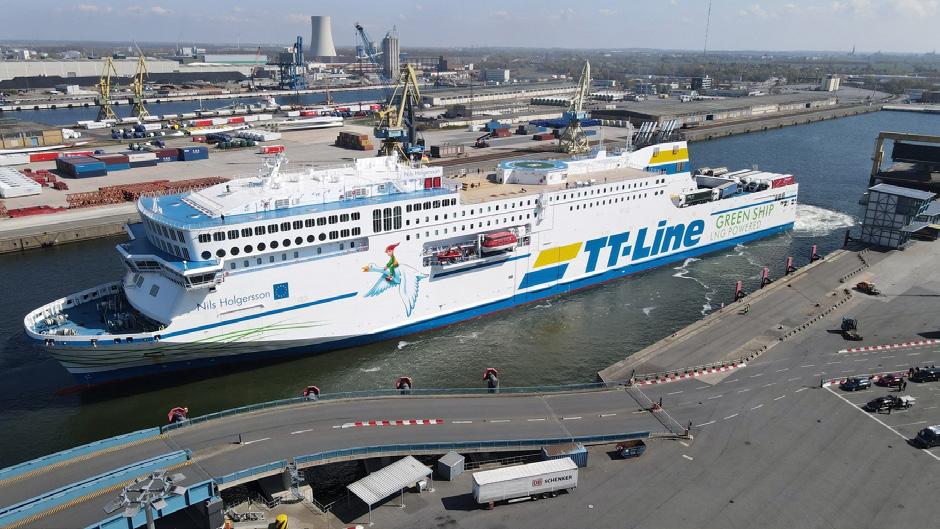

vessel [Stena Estelle] is the most modern in our fleet and unmatched in capacity, efficiency design and service setup. With new ferries such as Stena Estelle and its twin vessel Stena Ebba […] we are opening up new opportunities not only for the development of our company and the GdyniaKarlskrona route, but also for the growth of our customers’ businesses in this part of Europe,” Marek Kiersnowski, Stena Line’s Trade Director Baltic Sea South, commented upon the arrival of the first E-Flexer.
In April 2022, Finnlines laid the keel for Finnsirius, while in August – the keel-laying ceremony for her sister ship Finncanopus took place at China Merchants Jinling Shipyard in Weihai. Each of the 235 m long 1A Super ice-class ferries will offer room for 1,100 passengers (across 323 cabins) and provide 5,200 lm for wheeled freight. The two will serve Finnlines’ traffic between Kapellskär and Naantali via the Åland Islands. “Although we are moving on to a higher service level, the main focus has been on sustainability. Green values have been considered throughout the vessel, from energy generation to lighting management. Onshore power supply and a high-capacity battery pack are examples of how we eliminate local emissions. With the aid of the latest technologies and sustainable innovations, these large vessels are not expected to consume more fuel than the previous generation,” Emanuele Grimaldi, CEO of Finnlines, highlighted in the spring of 2022. Apart from cold ironing and batteries, the newbuilds will feature scrubbers, air lubrication, waste heat recovery, and ballast water treatment systems. They will also make use of the automooring technology. The Finnish shipping line announced on 30 December 2022 that Finncanopus was launched (Finnsirius was in August). The two are scheduled to start operating in the Baltic during this autumn.
Next for Finnlines, on 6 June 2022, China Merchants Jinling Shipyard (Jiangsu) handed over Finneco III: the last out of three ro-ros, with 5,800 lm, the most capacious in the company’s freight fleet. The 238 by 34 m 1A Super ice-class vessels serve the company’s Biscay Line, connecting the ports of Paldiski, Kotka, Helsinki, Antwerp, Tilbury, Zeebrugge, and Bilbao. The first newbuild, Finneco I, was delivered on 28 April 2022, while Finneco II – on 30 May 2022. All three ro-ros feature emission reduction solutions, such as air lubrication, battery packs, solar panels, waste heat recovery, and scrubbers. They also have a ballast water treatment system installed. Together with two Superstar class ferries, the new freighters form Finnlines’ €500m newbuilding programme. “Through our
ambitious investment, we can bring to our customers, not only the economies of scale and increased frequency, but a green and well scheduled infrastructure in the Baltic Sea, the North Sea and the Bay of Biscay. The Finneco trio will give added value to Finnlines and its customers when they start to operate on their routes,” Grimaldi commented. Another good-bad news grabbed headlines in April and December 2022. First, Hansa Destinations’ Nynäshamn-Visby-Rostock service’s capacity was doubled by introducing the ro-ro Eliana Marino (174 by 25 m, 2,500 lm). As a result, the crossing that kicked off in August 2021 and served together with Drotten (1,650 lm) began offering six weekly round-trips. Yet, before last year’s end, the subsidiary of the Gotland Company decided to abort operations across the service in question in 2023. The shipping line listed high bunker prices and difficulties securing sufficient cargo volumes as the reasons behind the termination. In addition, because of the lower freight traffic, Hansa Destinations didn’t receive the so-called eco bonus in its entirety – SEK26m instead of 74.2m (the Swedish Transport Administration announced the aid in 2018 for companies that reduce road congestion, contribute to air depollution, and lower greenhouse gas emissions, GHG-E). Eliana Marino ended her gig for Hansa Destinations on 18 December 2022 in Rostock, while Drotten followed suit on 4 January 2023 in Nynäshamn. According to Håkan Johansson, Gotland Company’s CEO, the service’s reinstallation in 2024 will be evaluated. In May 2022, we also said goodbye to Sea Wind, sold by Tallink Grupp. The company’s subsidiary Tallinn Swedish Line handed over the 1972-built 1,000 lm of capacity ro-ro to the new owners on 26 April 2022 in Tallinn’s Paljassaare Harbour. Tallink Grupp rearranged its schedules following the sale: the 2,087 lm ferry Regal Star was shifted from the Kapellskär-Paldiski service onto the Muuga-Vuosaari route according to Sea Wind ’s schedule. The 1,400 lm ro-pax Sailor thus remained alone on the Kapellskär-Paldiski connection, though now serving extra departures. “We are of course sad to see our grand old lady Sea Wind, who is 50 years old this year, leave our fleet, but we are pleased that she has a new life ahead of her and that she will continue sailing on other seas with the new owners. I would like to thank the crew for taking such good care of her over the many years, ensuring she has many years of sailing still ahead of her,” Paavo Nõgene, CEO of Tallink Grupp, said. Sea Wind started operating under the Estonian flag in 2015: first serving the Tallinn-Vuosaari and then
the Muuga-Vuosaari link. At the moment of writing this (3 January 2023), Sea Wind, flying the flag of Cameroon, was berthed at the Russian Black Sea Port of Tuapse, having arrived there from the Turkish Port of Karasu. It is rather hard to find it pleasing that the old-faithful Sea Wind has found new life serving Russia’s trade… During the summer of 2022, Tallink Grupp also made it public that Slaapschepen Public, on behalf of the Dutch Central Agency for the Reception of Asylum Seekers, chartered two of its ferries up till now serving traffic in the Baltic. Silja Europa, sailing between Helsinki and Tallinn, started the new assignment in the Netherlands on 20 August 2022, while Galaxy (Stockholm-Turku) joined her on 20 September 2022. Both have been taken in for seven months, with an option for an additional quarter of a year. The charter covers Tallink Grupp’s technical crew only. “The charter agreement is, from today’s perspective, necessary to stabilise the economy in the long run. The agreement concerning Galaxy means, unfortunately, that 265 of the crew in Sweden will receive dismissal notice because of lack of work, which is terribly sad news,” Ats Joorits, CEO, Tallink Silja AB, said. He added, “Following these measures Tallink Grupp will be able to stand strong on the day our traffic can return to full capacity. Currently, this is the best we can do for the company’s future.” Silja Europa and Galaxy joined Isabelle and Victoria I: the former provides accommodation for refugees in Tallinn, while the latter – in Scotland. On 13 May 2022, the Chinese CIMC Raffles shipbuilding yard handed over the brandnew con-ro vessel to Wallenius SOL , the first in a series of two. In August, Botnia Enabler was joined by Baltic Enabler across the Zeebrugge-Antwerp-Kokkola-OuluKemi-Skellefteå-Travemünde string. Each 242 by 35.2 m 1A Super ice-class vessel offers 6,442 lm for wheeled cargo; there is room for up to 960 TEUs. Both feature multi-fuel engines that can run on LNG, bioLNG, diesel, and synthetic diesel. “Because many of our customers base their entire operation on the green transition, we must match them. These vessels enable us to do so. The Enabler vessels emit 63% fewer greenhouse gases […],” underlined Ragnar Johansson, Wallenius SOL’s Managing Director.
As of 1 June 2022, the Riga-based Scandic Line offers an entirely new connection between the ports of Riga and Södertälje. The crossing is served by the 108.5 by 17.5 m Midas, offering 1,030 lm for trucks & trailers, other vehicles, and miscellaneous cargo loaded onto mafi trailers. She makes three weekly round-trips.
In mid-2022, Fennorail, a Finnish company from Mariehamn and owned by shipping and shipbuilding professionals from Finland and Estonia, entrusted Deltamarin with designing a vessel for carrying trailers, trucks, and wagons between the two countries. Eurocarrier will offer 2,500 lm, including 1,000 for train cargo (of the 1,520 mm gauge). Plans speak of connecting Estonia and Finland’s TEN-T rail networks, with Paldiski as the receiving port on the Estonian side. Eurocarrier will initially offer two daily round-trips. The newbuild could enter traffic as soon as 2025. “We strive to make the train ferry climate-friendly and profitable. The train ferry will have multi-fuel marine engines that can run on either pure LNG, a mixture of LNG and green hydrogen or marine gas oil,” Kaj Jansson, Member of the Board of Fennorail, highlighted. He furthered, “The ship’s propulsion system is arranged by two 360-degree rotating pods which increases the propulsion efficiency and ships manoeuvrability. Deltamarin is well acquainted with these technologies and their manufacturers, and combines them with their own advanced ship design knowledge. In addition, they have well proven experience in supervising the ships construction process.”
Next for Deltamarin, in September 2022, the Estonian Transport Administration commissioned the Turku-based company with developing a new concept design for a ship linking the country’s mainland and islands. The works are expected to be completed in early 2023, with the concept afterwards used for preparing a public procurement and further designing & constructing the ferry. News about another future-oriented carrier surfaced in July 2022, when Avatar Logistics and Sand & Grus AB Jehander revealed that they are planning to construct an environmentally friendly electric barge for transporting sand and gravel to a cement factory located in the Swedish capital. The newbuild will replace the 1970built Jehander 1, used by Avatar Logistics for shipping macadam, gravel, and sand. The 75 by 8.5 m vessel can take up to 1,420t across six holds and carries around 300kt/year dry bulk from Sand & Grus AB Jehander’s gravel pits in Mälaren (central Sweden). “[…] The electric barge will be technologically advanced and offer double the capacity, meaning that each shipment can replace 100 trucks. The barge’s electric propulsion will also decrease Jehander’s CO2 footprint by up to 95% relative to the trucking alternative. It will strongly contribute to a cleaner environment in Stockholm’s city centre,” Johan Lantz, CEO of Avatar Logistics, highlighted. Ferus Smit already provided the first design. Avatar Logistics said it will also
try to secure green co-financing for constructing the barge.
In August 2022, the keel laying of AtoB@C Shipping’s second hybrid vessel took place at Chowgule Shipyard, with the first’s delivery slated for Q3 2023. The Ystad-based subsidiary of the Finnish ESL Shipping has, in total, ordered seven 5,350 dwt general cargo freighters from the Indian shipbuilding yard. Each 90 by 16 m hybrid 1A-ice class coaster will offer 7,650 m3 carrying capacity. Apart from battery packs, the vessels will feature OPS connectors. Later the same month, AtoB@C Shipping exercised the option to have Chowgule deliver more hybrid vessels –12 at the moment. Additionally, ESL Shipping will, together with institutional and private investors, form the GreenCoaster shipping pool, managed by AtoB@C Shipping. All vessels in the pool will be placed as part of the shipping company’s existing and growing contract traffic. The investor company is offered complete construction and maintenance services of the vessels on a turnkey basis. The total amount of ESL Shipping’s investment will remain at the size of six vessels and approximately €70m.
In September 2022, Langh Ship ordered three 1,200 TEUs container vessels, slated for delivery in 2024, with the PaxOcean’s shipyard in Zhoushan delivering the first vessel in August. In collaboration with the Shanghai Merchant Ship Design & Research Institute, Langh Ship designed the 150 by 27 m, 8.75 m draft, 1A ice-class ships for carrying 45’ containers both in the holds and on deck. The newbuildings will be equipped with twostroke, slow-speed main engines (suitable for running on biofuel) and hybrid scrubbers (from Langh Ship’s sister company Langh Tech). The container ships will also be carbon capture-ready (for a system also developed by Langh Tech). The vessels will be prepared for shore power connection and a hybrid solution, including batteries. In addition, Langh Tech will supply the LanghBW Systems ballast water management system. “In the European market, we see a need for this type and size of container feeders. By optimising the hull lines, we managed to maximise the cargo capacity and, at the same time, minimise the energy consumption, still keeping a speed of 18 knots if needed […],” Laura Langh-Lagerlöf, Langh Ship’s Managing Director, highlighted. Meanwhile, Wuhu Shipyard is working on three 7,800 dwt multipurpose vessels for Langh Ship. In October last year, Färjerederiet’s inked its biggest investment ever. The Swedish Transport Administration’s ferry company commissioned the Holland Shipyards Group to construct four hybrid ships. The 86
by 14.2 m domestic traffic ferries, which will serve Stockholm’s archipelago, will be delivered starting from summer 2024 one piece a year. The newbuilds, usually running on electricity, will also feature backup hydrotreated vegetable oil diesel engines. The entire investment (totalling SEK1.0b) will also cover eight automooring installations, four charging stations, a simulation centre likewise one for operating the vessels remotely. The ferries will perform certain operations automatically (autonomy level 2), such as mooring and hoisting/lowering their ramps for vehicle load- and unloading. The charging will take around four minutes. The ordered ferries will help realise Färjerederiet’s Vision 45, in which the company’s fleet becomes climate-neutral by 2045. Like Viking Line and Tallink & Silja Line, the Norwegian Color Line was forced to let go of part of the company’s tonnage in 2022. The Norwegian shipping line removed the Color Viking ferry from the SandefjordStrömstad service (last sailing: 20 November 2022; Color Hybrid continues serving the crossing) and the Color Carrier ro-ro from the Kiel-Oslo one (six days earlier), putting them up for sale. The company says that high energy prices, macroeconomic uncertainty, and worsened framework conditions led to the decision. These and such specific factors as halving the tobacco quota for residents of Norway as well as reducing the allowance scheme for Norwegian seafarers in the country’s budget for 2023.
In November 2022, UECC ’s latest hybrid gas-run car carrier, Auto Achieve, berthed at the Port of Gothenburg, where she received her name and joined the weekly service that links the Swedish seaport with Zeebrugge, Drammen and Esbjerg. The 169 by 28 m ship can carry up to 3,580 vehicles across ten decks. Auto Achieve joined her sister ships Auto Advance and Auto Aspire, constructed by Jiangnan Shipyard , christened in Zeebrugge earlier in October 2022. UECC says that the trio exceeds the International Maritime Organization’s requirement for a 40% reduction in carbon intensity by 2030. Last year’s shipping news list was ticked off by Tallink & Silja Line who deployed their new flagship: MyStar was put on the Helsinki-Tallinn crossing on 13 December 2022. The 212.4 by 30.6 m ro-pax – offering room for 2,800 passengers and 3,190 lm for cargo – served nearly 32k travellers during her first week. Rauma Marine Constructions built the GT 50,629, dual-fuel (gas-driven) ship. The ferry can connect to an OPS facility. Tallink & Silja Line’s Helsinki-Tallinn route is now served by MyStar, Megastar, and Star (who joined them on 1 January 2023 after undergoing technical maintenance).
The regional 2022 eco-news revolved around a number of developments: alternative fuels, cold ironing, offshore wind energy, and green corridors. The year set off to a start with Ørsted taking stake in Liquid Wind ’s FlagshipONE. The Danish energy company purchased 45% shares of the e-methanol project developed by the Swedish power-to-fuel development firm. FlagshipONE will feature a 70MW electrolyser, making it possible to produce 50kt/ year of e-methanol (to be used as a marine fuel) based on renewable hydrogen and biogenic CO2 . Wind will power hydrogen production, while the biogenic CO2 will be captured from the combined heat & power plant Hörneborgsverket in Örnsköldsvik in Sweden, where FlagshipONE will also be located. The partners plan to commission FlagshipONE in 2025. Later, on 20 December 2022, information was circulated that Ørsted’s Board of Directors took the final investment decision by taking full ownership of FlagshipONE. Mads Nipper, Group President and CEO of Ørsted, said, “Now more than ever, the world needs bold green energy projects to fight climate change, decarbonise hard-to-electrify sectors, and secure regional energy independence. […] E-methanol is the best solution currently available to decarbonise hard-toelectrify sectors like global shipping, and with this first commercial-scale project, Ørsted will break first ground in advancing our industry-leading pipeline of e-methanol projects.” Olivia Breese , CEO of Ørsted Power-to-X, added, “[…] Our first offshore wind projects came with significant risk, but we saw a route to leveraging our capabilities to deliver that technology as a cornerstone in the green transformation. Today, Powerto-X is at a similar inflection point – and at
Ørsted, we’re once again ready to assume risk and lead the maturation of this crucial technology. However, the Power-to-X industry urgently needs supportive frameworks that enable the transition away from fossil fuels, and we call on policymakers to take action to match the climate ambitions of developers and shipping companies.”
In mid-February 2022, Furetank and Eskilstuna Biogas signed a letter of intent enabling the set up of a 5,000t/year bioLNG plant in Eskilstuna (which received SEK140m, about €13.4m, in climate investment support from the Swedish Environmental Protection Agency). Production is likely to start in Q4 2023. Gas will be extracted from manure and food waste coming from the municipalities of Eskilstuna and Strängnäs and then upgraded to bioLNG for use as fuel. Furetank will take at least three-quarters of the production over ten years, using the bioLNG to lower its fleet’s carbon footprint, including minimising the company’s exposure to the inclusion of sea shipping into the European Union Emission Trading System. “In addition to these grants and public production support for biogas, a long-term agreement with a strong partner is required to make this big investment and achieve the large-scale biogas production that we are planning. It is also very gratifying to find a partner who sees business opportunities in leading the way towards climate neutrality,” Kaj Wågdahl, Chair of Eskilstuna Biogas’ Board, underlined.
Last year’s overview included a hefty portion of wind assistance installation news, and the Finnish Norsepower had plenty of work in 2022, too. In March, the company said it will furnish by year-end CLdN’s Delphine with two 35 m tall and 5.0 m in diameter tiltable sails, said to reduce the ship’s fuel consumption & carbon emissions by 7-10%. At that moment,
it was Norsepower’s seventh Rotor Sail contract and the third for the tilting version of the Finnish company’s auxiliary wind propulsion system. After that came Scandlines’ ferry Berlin (30 m tall sail), an agreement with Pan Pacific Copper to assess retrofitting Koryu (a combination carrier operated by Nippon Marine), and a deal with Dalian Shipbuilding Industry for the delivery of single 28 m tall Rotor Sails on board two CO2 carriers commissioned by Northern Lights. Alike in shipping news, Furetank also made numerous eco-strides last year. In spring, the Swedish Export Credit Agency (EKN) gave, for the first time, its green guarantee to a shipping company. It will be used to pre-finance Furetank’s next oil products and chemicals tanker in the Vinga-series. The guarantee will cover 80% of the lender Tjörns Sparbank ’s risk. “For the world to succeed with climate transition, it is of crucial importance that companies such as Furetank can finance their ambitious climate investments […],” AnnaKarin Jatko, Director-General, EKN, commented. Anders Hermansson, Head of the Swedish Shipowners’ Association, praised the move, “It is an extremely positive decision for the shipping sector, which is a capital intensive industry where climate investments costs are high and difficult to sustain internally. It is a big step for shipping’s green transition globally, where Swedish shipowners top the environmental list. When our members invest in new technology it pushes the boundaries not only for the given vessel but for the entire sector.”
In April 2022, the Danish shipping line NORDEN started offering its customers the option to sail on biofuel made from waste cooking oil. “We believe there is a growing demand for carbon-neutral transportation from our customers – particularly those with ambitious sustainability goals. We are ready to support those customers that wish to take the leap to an environmentallyfriendly form of freight transport,” Adam Nielsen, Head of Logistics and Climate Solutions, NORDEN, said. Henrik Røjel, the company’s Head of Decarbonisation, added, “We see biofuel as a very important transition fuel on our journey to zero-carbon shipping [by 2050] as it can be used on board our current vessels to make an immediate reduction on carbon emissions.” In the same month, ESL Shipping became part of the Botnia Link H2 project. The initiative’s partners – including Uniper, ABB Sweden, the Port of Luleå, and Luleå Energi – work on producing and marketing fossil-free hydrogen to transport and industrial customers as
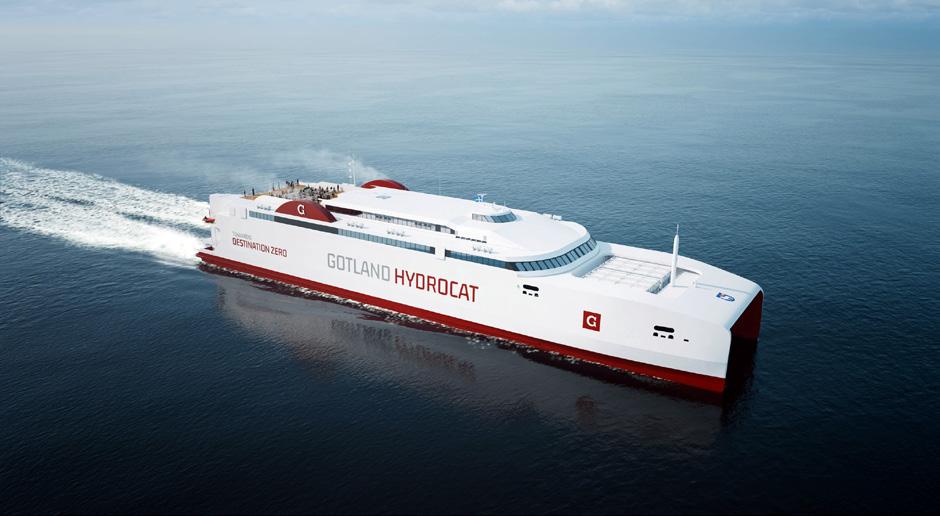
an alternative for fuel, electricity, and heat generation. Once up & running, the Botnia Link H2 hub could reduce CO2 emissions in Sweden by up to 235kt/year. “Tackling climate change is very urgent, especially given the sensitivity of our home waters in the Baltic Sea. Along with our customers and partners, we have a responsibility to do what we can to turn the tide. Industrial partnerships like Botnia Link H2 are key to achieving real change. We very much look forward to participating in developing a much-needed source of fossil-free marine fuel,” Mikki Koskinen, ESL Shipping’s Managing Director, underlined. His company carries some 5.5mt/year to and from the Port of Luleå. ESL Shipping plans to offer 100% fossil-free sea shipping solutions in the future. Also in April last year, the Swedish freight haulier AA Logistik received its first electric truck from Scania to operate it 10k km/year with an 89% lower carbon footprint than a traditional lorry. The e-truck is deployed around Finnslätten, where AA Logistik will have its brand-new 32k m 2 , photovoltaics-furnished warehouse ready in 2024. The haulier intends to electrify its entire fleet of 15 heavy-duty trucks by 2030. Finnslätten has already an ABB charging station installed by Mälarenergi that can both provide overnight and daily fast recharge to the new e-lorry.
Before April’s end, two other green developments took place in Sweden. First, the Swedish Transport Agency accepted the general methanol operating regulations for ship-to-ship bunkering prepared by the Gothenburg Port Authority (GPA), following which the seaport will work on creating a value chain for supplying the transport industry with e-methanol, a.o., to the methanol-run container ships ordered by Maersk and X-Press Feeders Christoffer Lillhage, GPA’s Senior Business Development Manager Energy, explained,

“We are also planning for large scale storage of methanol with storage operators in the port when the demand is in place. We encourage methanol producers and stakeholders in the industry to reach out and start a dialog with the Port of Gothenburg as we have set the aim to become a bunker and storage hub for methanol/e-methanol.” Plans speak of providing e-methanol in the port by 2024. Second, the Ports of Stockholm, operator of the harbour in Kapellskär, took delivery of the central OPS unit, provided by Actemium. Cold ironing will be offered where Finnlines’ ships berth, specifically the Finnsirius and Finncanopus newbuilds. After the delivery, the Ports of Stockholm began laying the power lines, installing cranes to carry them to the vessels, and testing the facility. The investment is part of the EU co-financed (30%) Upgrade of the Baltic Sea Bridge Kapellskär-LångnäsNaantali project, carried out by the ports of Stockholm and Naantali and Finnlines. The Climate Leap initiative also provided partial funding for the project’s Swedish part. Also in April, the Mærsk Mc-Kinney Møller Center for Zero Carbon Shipping partnered with the ports of Hamburg, Gdynia, Rønne, Rotterdam and Tallinn to advance the decarbonisation of the maritime industry. The partnership will demonstrate the early commercialisation of alternative fuel supply chains, provide a roadmap to scaling them up, and create a blueprint for rolling out green corridors in other locations. The parties will start with a pre-feasibility to identify the potential routes, vessel types, and fuels to establish high impact green corridors in the Baltic and the North Sea regions. The next phase will assess the shortlisted routes’ technical, regulatory, and commercial feasibility. Finally, the project partners will implement the vision and establish green corridors in Northern Europe.
“Until recently, the maritime sector was the only transport sector in the EU not subject to greenhouse gas emission reduction targets. That time has passed, and the new reality has arrived: we must all work together to reduce CO2 emissions; there is no other way out,” Valdo Kalm, the Port of Tallinn’s CEO, commented. He furthered, “To achieve maritime sector decarbonisation, zero-emission fuels and vessels must be deployed at scale over the next decade. It is undoubtedly a difficult task, but it can be aided by the formation of green corridors in which major ports provide the necessary zero-carbon fuels at the required scale for bunkering […].”
Confirming transport companies’ assertions that cargo owners are looking for green solutions, Arvid Nordquist, a Swedish coffee maker, with the help of Scanlog signed an agreement in May 2022 with the carrier Hamburg Süd to use biofuel to carry the company’s containers. The RSB- or ISCC -certified Ecofuel will be used by Arvid Nordquist to lower the CO2 emissions of its sea shipments by around threequarters (the remaining portion will be carbon offset). The company’s distribution is already 80% fossil-free. The agreement entered into force in April 2022 and covered some 260 containers from Brazil, i.e., about 30% of Arvid Nordquist’s total raw coffee beans traffic. The parties also agreed to look into how to scale up their biofuel co-op. “To make further advancements, there must be sustainable alternatives on the seaside. We have had a comprehensive dialogue with Scanlog about finding this alternative and investing in fossil-free fuel. It is the last puzzle piece for us to feel that we have fossil-free transportation across transport modes and product areas,” Tomas Skenbäck, Manager Logistics Controlling and Development, Arvid Nordquist, commented. He also underscored, “The world around us is challenging, but we make what we can to take responsibility for our part. We will hope to see more shipping lines go this way by offering the option to purchase fossil-free transportation. It will be an important factor in the future when we make the decision with which carriers we want to work with.” Mathias Wideroth, Chair of Scanlog’s Board, also said, “It means a lot that Arvid Nordquist invests in this type of project that drives forward fossil-free transport. The technology for fossil-free sea shipping exists, but biofuel is unfortunately more expensive because of the low supply. With this investment the supply increases –and hopefully also demand in the industry.” Also in May 2022, Neste and Nordic Marine Oil developed the Neste Marine 0.1
co-processed fuel, said to enable up to 80% GHG-E reduction over the lifecycle compared to fossil fuels. The new product, ISO 8217-compliant, is produced at Neste’s refinery in the Finnish Porvoo, where renewable and fossil raw materials are co-processed in the conventional refining process. The sustainability characteristics of the co-processed marine fuel are certified with International Sustainability and Carbon Certification (ISCC PLUS) with a mass balance approach. The GHG-E reduction has been calculated using a method guided by the EU Renewable Energy Directive II (EU)2018/2001. “For cargo owners and charterers, the product is an effortless and cost-efficient opportunity to reduce CO2 emissions in transportation and reach their own climate targets. The emission reduction is immediate and the solution is easy to implement as the shipowners are not forced to make any investments or changes to the vessel engines. Our strong partnership with Neste gives us the opportunity to supply tomorrow’s fuels for the maritime industry already today,” Steen Møller, CEO of Nordic Marine Oil, said. Sveta Ukkonen, Head of Marine Fuels & Services at Neste, also highlighted, “The maritime sector is combating climate change by all available means. Our new co-processed marine fuel is a competitive and feasible solution for shipping companies, and also for cargo and brand owners looking to reduce their GHG emissions across their value chain. […] The coprocessed marine fuel is a strategic step for us to reduce the dependency on fossil resources by replacing crude oil based raw materials partly with renewable raw materials.”
Still present in May, the Nantes-based Lhyfe and the local Swedish energy company Trelleborgs Energi teamed up to perform a pre-study on the set-up of a 5.0MW green hydrogen production plant in Trelleborg. The inquiry will cover the questions of energy supply, production capacity, technology selection and location, and the utilisation of hydrogen production by-products: waste heat and oxygen. The potential plant, possibly up & running in 2024, will feed mobility and industries’ needs for zero-emission energy. “We want to create sustainable energy solutions locally and renewable green hydrogen is part of that plan. Hydrogen is a clever, multipurpose energy carrier and can play a part in solving the climate challenge. We believe in making a real difference, in ‘walk the talk,’ and our renewable hydrogen initiative is one way of doing that,” Magnus Sahlin, CEO of Trelleborgs Energi, commented. More in the north but still in Sweden, the Ports of Stockholm and CMB.TECH formed a hydrogen co-op in July 2022. The
two partnered to start offering hydrogen in Norvik – for port operations as well as the needs of shipping and haulage. To that end, a hydrogen-fuelling station will be erected adjacent to the harbour, following which port vehicles will be converted to run on green hydrogen. Norvik’s first hydrogen-fuelled terminal truck is planned to start operating in 2023. “Hydrogen will play a crucial role in converting to fossil fuel-free transport, both on land and at sea. […] This is entirely aligned with the ambitious environmental goals of the Ports of Stockholm for operations to be fossil fuel-free by 2030,” Anna König Jerlmyr, Mayor of Stockholm, highlighted. Also in early summer of 2022, the Port of Rønne announced it will make available ten more hectares for offshore wind energy (OWE) projects. The Danish port began the regulatory approval process at the same time also initiating a tender round for the development project. In effect, the southern part of the island seaport will focus on catering to the OWE industry, while passenger traffic will consolidate in the northern. The port’s reconstruction is expected to be ready in 2025. “In the next many decades, enormous amounts of offshore wind will be set up all over the world and also here in the Baltic Sea. As a port, we are therefore in the middle of an exciting time and with a unique opportunity to take advantage of Bornholm’s unique position to attract more business and growth to the island,” Lars Nordahl Lemvigh, the Port of Rønne’s CEO, said. He furthered, “We have already prepared our port to take on OWE-projects […], but we do not have the space to meet the increased interest that will be needed. Therefore, we are now starting a future-proofing of the port, so that within a few years we will be able to handle more and larger wind turbine projects.”
Staying at the Danish island, at the end of last year, MT Højgaard Denmark completed the development of Galløkken and the second phase of the Port of Rønne’s expansion. For the past year and a half, MT Højgaard Denmark has worked on expanding the outer pier in the industrial part of the Danish seaport by 475 meters and establishing an additional 300-meter heavy cargo quay with 50k m2 of hinterland. The two tasks –and the expansion of Galløkken – resulted in a total of approximately 100k m2 of new port areas. “With the expansion, we can continue the significant growth we are experiencing, especially in the shipping of offshore wind from Bornholm. Our ambition is to maintain our position as the most attractive port in the Baltic Sea for the installation of offshore wind, and we have strengthened this competitive position significantly with
the expansion, which is planned to accommodate all the port’s business areas,” Lars Nordahl Lemvigh commented. Dan Locht, Project Manager, MT Højgaard Denmark, added, “Bornholm is often called the sunshine island, but compared to many other places in Denmark, the weather with more often strong winds and big waves has been a bit of a challenge. Despite the challenges, we have still been able to keep our tight schedule and completed the project on time, and with great help from the local suppliers [the company has invested more than DKK75m, around €10m, in Bornholm firms].”
In the second half of July 2022, Kalmar and Helsingborg shared that the latter will become Sweden’s first port to receive an electric reachstacker. The Finnish manufacturer will supply its 587kWh of battery capacity cargo handling machine in Q4 2022. The machinery will have a wheelbase of 6.5 m, a stacking capability up to five high, and a maximum lifting capacity of 45t, 32t, and 16t in the first, second, and third row, respectively. The order also covers comprehensive training for maintenance technicians and equipment operators. The deal includes an option for additional two electric reachstackers. “We will sustainably develop the new container terminal [ready in 2028] with automation, electrification, and efficient land use. Investing in the electric reachstacker is an important step in our journey,” Bart Steijaert, the Port of Helsingborg’s CEO, said. In mid-August 2022, one step closer to LNG in Oxelösund was taken. Avenir LNG and the Port of Oxelösund signed a memorandum of understanding for the development & construction of an LNG/bioLNG terminal in the Swedish seaport. Avenir LNG intends to acquire a 100% stake in OxGas, the whollyowned dedicated project company of the Port of Oxelösund that has secured all environmental and construction permits required for setting up the up to 30k m3 terminal. The OxGas facility will comprise a single fullcontainment atmospheric tank, natural gas delivery via regasification to a local pipeline network and LNG via two truck loading bays for broader distribution beyond the port. The companies also agreed to evaluate the development of a future energy hub to transition from LNG/bioLNG to renewable energy sources. Among others, Avenir and the Port of Oxelösund will evaluate CO2 reduction schemes toward a fully-renewable net-zero energy facility. Douglas Heilborn, at that time the Port of Oxelösund’s CEO, also said, “Teaming up with Avenir LNG will allow us to proceed into the next phase with our OxGas project and we are convinced Avenir is the right partner to work with. The demand
for alternative fuels such as LNG/LBG will grow in the shipping industry within the Baltic Sea. A key component for sustainable shipping is developed infrastructure for such fuels. Having access to terminals is important as it will create opportunities for new shipping solutions.”
Also in the middle of the month, this time September 2022, the Port of Gothenburg shared that it will have another green hydrogen-filling station. The facility for tanking heavy vehicles, slated for completion by September 2023 and operated by Nilsson Energy, will sit next to the Gothenburg RoRo Terminal ’s entrance. The approximately SEK35m investment, financed wholly by the Swedish Energy Agency, will have 1,500t of capacity, enough to tank 35 trucks/day (two simultaneously). The hydrogen made available will be produced using renewables. “It is a much-requested addition to the port, one that’s also fully in line with our strategy to create conditions for accelerating the transport industry’s transition to fossil-free,” Viktor Allgurén, Head of Innovation at GPA, said. He furthered, “A hydrogen filling station contains large volumes of pressurised energy, so we are facing a risk management process and, not least, a permit process, which we must face with great humility. But we feel very reassured about progressing this project with Nilsson Energy, a company with extensive experience in this field and the most highly respected actor on the Swedish hydrogen market.” Maria Franksen, CEO of Gothenburg RoRo Terminal, also commented, “The location is ideal for truck customers, and also gives us as the terminal operator an opportunity to use hydrogen to power our work machines in the future. We
are a close neighbour of the new hydrogenfilling station, so issues of safety and risk are naturally important.”
In addition to Nilsson Energy’s new hydrogen-filling station, another station is also being planned in the port area. In 2023, Circle K and OG Clean Fuels will open a hydrogen-filling station five minutes east of Nilsson Energy’s station. Allgurén said in this regard, “The most important thing about having two stations is the peace of mind, knowing that it will be possible to have an uninterrupted opportunity to fill up with hydrogen at the port, even if one station is closed for maintenance or the like. That creates a robustness in the infrastructure that is a decisive factor for haulage companies that are considering converting parts of their vehicle fleets to run on fuel cell technology.” Fast forward to late October 2022, and Circle K opened its e-truck charging station in Gothenburg. The facility offers six public charging points for heavy-duty lorries, with each bay providing up to 360kW of power. There is room for adding more bays (even 1.0MW). Apart from the bays, the facility offers a fenced, CCTV parking lot for about 40 trucks. The station also comprises amenities (showers, toilets, and food & drinks). As highlighted above, within one year it will be possible to tank hydrogen at the station (720 kg of capacity, one bay, 15 trucks/day). “The station’s opening at exactly the right place, in terms of both timing and location. Serial production of electric heavy goods vehicles is up and running, and vehicles have been ordered by actors with a lot of traffic at the port. By the end of the year, electric heavy trucks will be a common sight in the port, and it will just keep on growing from there. So, this station comes at just the right time
– the transition is taking place here and now, and as far as the port is concerned we’re delighted to be able to work with Circle K to provide the necessary infrastructure,” Elvir Dzanic , GPA’s CEO, commented.

About one month earlier, in late September 2022, Green NortH2 Energy, Meriaura, and Wärtsilä penned a letter of intent to build a project cargo vessel that runs on ammonia produced using renewable electricity. The newbuild will be ordered and operated by Meriaura, Wärtsilä will provide the modular multi-fuel main engines, and Green NortH2 Energy will supply the fuel (the company will build an electrolysis, green hydrogen & ammonia production plant in Naantali). The parties target 2024 for delivering the ship, with 2026 planned for starting green ammonia operations. “Green ammonia has a significant role in reducing greenhouse gas emissions of shipping because the energy needs of this industry cannot be met with battery technology. Compared to hydrogen, it can be stored and moved more easily, and its logistical network already exists,” the partners said.
Also late in September last year, the Decatrip project, coordinated by PBI Research Institute , received financing for developing solutions to make the StockholmTurku ferry service zero-carbon. The project comprises Rauma Marine Constructions (RMC), Viking Line, Åbo Akademi University (ÅAU), and Kempower Business Finland granted €1,596k to RMC, ÅAU and Kempower, while the Government of Åland backed Viking Line. Specifically, RMC will develop energy-efficient solutions for operating the ships; Kempower – for charging electric vehicles aboard the vessels, while ÅAU will evaluate the societal benefits of the green corridor. Fuel for the zero-carbon transport is planned to be manufactured locally in Southwest Finland. The parties hope to turn Viking Line’s StockholmTurku service, which crosses the Åland Islands, into a carbon-neutral crossing by 2027 (the company’s flagships, the gas-run Viking Glory and Viking Grace, operate on the route). “The solutions developed in the project will enable fully carbon-neutral freight and passenger travel between Turku and Stockholm, but the project will also be scalable for other routes. This is important since all EU countries, Finland included, have signed on to build green maritime transport corridors,” Mika Laurilehto, back then RMC’s interim CEO, underlined. Dr Magnus Gustafsson, Research Director in Industrial Management at ÅAU also highlighted, “Consumers increasingly want the products and services they buy to be sustainable, and this is reflected throughout the
entire logistics chain. The project is starting from the position that the transition to zero emissions will not increase the costs significantly. This will provide passengers with a sustainable alternative, an opportunity for the industry to gain competitive advantage in sustainable transport, and a tangible example of how we can eliminate emissions in seafaring using Finnish expertise.” Though Gotland Company had to temporarily put Hansa Destinations on the shelf, it still believes that sea transportation has future. As such, the Gotland Hydrocat concept was presented last autumn. With the help of the Austal shipyard, the Swedish shipowner unveiled the second zero-emission vessel in its Horizon series. Gotland Hydrocat is a high-speed catamaran that will feature a multi-green fuel engine, with hydrogen as the preferred one. The 35 knotmax speed vessel will offer room for 1,600 passengers, plus space for 450 cars. Gotland Company intends to place an order on Gotland Hydrocat in 2025, with the catamaran entering traffic five years later. It is the same time horizon for Gotland Horizon, a ferry concept, also multi-green fuel, presented by Gotland Company, Gotland Tech Development , and Destination Gotland last year. The 28-knot ro-pax will offer room for 1,900 passengers and cargo capacity for 100 trucks & trailers. “It feels excellent that we now have two concept ships for our future fleet that will bring Gotland and the mainland even closer – at the same time reducing our emissions dramatically,” Marcus Risberg , Destination Gotland’s CEO, said. Håkan Johansson, CEO of Gotland Company, added, “The Horizon series is ‘the’ single most important initiative of ours to lower shipping’s footprint. We enjoy a long tradition of utilising leadingedge technology and constantly modernising our fleet.” Destination Gotland, which runs Gotland-mainland ferry traffic, aims to make its operations carbon-neutral by 2045. In late November 2022, Furetank announced it is piloting Equinor’s waste-based marine fuel. During a round-trip between Mongstad in Norway and Iceland’s Reykjavik, the Swedish shipping line’s dual-fuel tanker Fure Valö sailed on a 30/70 blend. The smaller portion of the mix was cooking oil, while the remaining portion – marine gas oil. Equinor’s refinery in Mongstad supplied the fuel. The blend has a certified reduction in GHG-E of at least 87.5% vs its fossil fuel equivalent. “The initial results were positive, as no adverse effects on performance or consumption were detected compared to conventional marine gas oil,” Furetank shared. The companies plan to continue testing Equinor’s
blend, with another five-to-six round-trips between Norway and Iceland to “[…] prove performance in the harsh weather-exposed trade on the North Atlantic, as well as and handling over time.”
Then came news that the Port of Riga goes solar and hydrogen. First, the Latvian seaport launched a tender for developing a part of its land into a solar park, won by the Lithuanian Saulės Grąža (“Return of the Sun”). The company will invest around €90m over the next five years to erect a solar park of at least 100MW capacity, producing a minimum of 100,000MWh/year. The Port of Riga will benefit from the investment in two ways: collect rent and receive a portion of the electricity, the latter for the use of the authority and port companies. Next, the seaport – together with numerous Latvian energy, technology and transport companies, academia, and governmental bodies – signed a memorandum of understanding to develop a hydrogen ecosystem in the country, including production, storage & transportation capacities.
Speaking of hydrogen, two other events unfolded in November 2022. First, the Hycamite-Wärtsilä hydrogen & solid carbon co-op. The two Finnish companies banded together to develop a solution for producing hydrogen from LNG on board vessels with high-grade allotropes of carbon as a by-product. The produced hydrogen will be used either by blending it with LNG bunker or in fuel cells aboard the ship. The process will also deliver solid carbon, including industrial graphite and carbon nanotubes (a potential additional revenue stream). The concept design will be ready by mid-2023, while the prototype testing unit – in H2 2024. The parties say the solution will apply in principle to all LNG-run vessels. They also underlined, “When using bioLNG, this solution enables even power generation on board ships with a negative carbon footprint.” Mathias Jansson, Director, Fuel Gas Supply Systems, Wärtsilä, also accentuated, “[…] This solution overcomes the lack of an existing hydrogen supply infrastructure. It also supports reducing the safety risks around storing and handling of liquid hydrogen and enables a gradual decrease of the vessels’ environmental impact.”
Second, the Port of Szczecin-Świnoujście, alongside other parties from across the business, technology, and R&D sectors, signed a letter of intent to develop an economy based on hydrogen in Poland’s West Pomeranian Voivodeship. Thanks to lowand zero-emission hydrogen, hard-to-abatement industries like transportation will have it easier to partake in the green transition.
The West Pomeranian Hydrogen Valley is to play its part in the 2040 Polish Energy
Policy in building a low-emission energy system while maintaining energy security. Earlier, in December 2021, the port authority exercised its pre-emptive right to acquire lands in Świnoujście, which will be used for erecting an installation terminal for offshore wind energy farms. The 20 ha big facility will offer 500 m of 12.5 m deep quay wall for handling up to 80 turbines (up to 15MW) per year. The terminal’s commissioning is expected at the beginning of 2025. One year before that, Vestas’ wind energy turbine factory will come online in Szczecin.
In September 2022, also the German Baltic Port of Wismar decided to go solar by entrusting FABER Solartechnik with the installation of a 10k m2 photovoltaics system across a previously unused open space. The 2,200kWh/year facility is to be up & running in Q1 2023. The seaport expects to consume some 35-40%, feeding the public grid with excess green energy. The investment goes hand-in-hand with Wismar’s replacement of cargo handling equipment with electric machinery (the first e-forklifts arrived in November 2022). The port will also look into wind energy.
Last but not least in the green-thread – and for Furetank in 2022 – the company received support to cold-iron its ninth Vinga newbuild. Klimatklivet, a Swedish Environmental Protection Agency-NextGenerationEU initiative, will fund half of the machinery needed for the shipping line’s tanker to ‘plug into’ OPS. The vessel will draw green power from the shore in the Port of Gothenburg thanks to the investment (Klimatklivet will also back setting up Gothenburg’s OPS in the port’s Energy Harbour). According to Furetank’s calculations, done using Fure Ven in 2021, OPS-connecting a tanker can save 600t/year of CO2 emissions. The company adds that in-port tanker emissions can account for as much as 20% of the ship’s footprint. “This grant is a very positive response to our environmental efforts, it confirms that we are doing the right thing. We have chosen to install a very powerful 6.6kV high voltage shore power capability which even supports the cargo pumps during unloading. They consume a lot of energy which can now be provided through the electrical grid instead of ship generators. This eliminates all harmful emissions while in port close to densely populated areas,” Jonatan Höglund, Newbuilding Inspector at Furetank, highlighted. He also noted, “It is a classic ‘chicken-and-egg’ dilemma where we now choose to progress before the infrastructure is in place. We hope and believe that our move can contribute to the expansion of shore power connections gaining momentum in Sweden and beyond.”
The previous section ended and this one starts with cold ironing. In February 2022, the Swedish Port of Gävle received support from the country’s Environmental Protection Agency to supply onshore power at its Sligkajen from the summer of 2022. The initiative is carried out together with Boliden , whose ships berth at the quay to take in ores from the Garpenberg mine. “We have with keen interest followed the international development for the segments we have in Gävle, which are container, bulk, project loads and tankers. Boliden has a stable flow of goods via the Port of Gävle with more than 60 ship calls per year. We are proud to now be able to offer onshore power supply for these ships,” Niklas Hermansson , the Port of Gävle’s Head of Traffic and Safety, commented. Linda Astner, the port’s Head of Sustainability, added, “The changeover to a more sustainable freight transport is a challenge with long logistics chains and many players. Collaboration is required to meet the climate goals. Boliden has a commitment to sustainable transport and it feels great to be able to collaborate with them on the conversion of an entire flow.” Cold ironing at Sligkajen forms part of Gävle’s Port Cluster 2030, a programme to reduce the seaport’s carbon footprint in line with the Paris Agreement. We stay in Gävle because in the spring of 2022, the port’s Fredriksskans intermodal terminal was again put online following increased demand for rail transportation of both containers and trailers. Located close to the port’s quays and warehouses, the facility spans 50k m 2 and offers a 550 m long track. Yilport Gävle , the port freight operator, is in charge of handling the flows. The company has invested in two reachstackers to take care of the traffic. Then on 18 May 2022, the official launch of Yilport’s upgraded container terminal in Gävle was celebrated. The facility’s annual handling capacity was doubled to 600k TEUs. Lastly, in late October 2022, SCHWENK Sverige , the Swedish arm of the German SCHWENK Building Materials Group , signed a 25-year lease agreement with the Port of Gävle. Following the deal, SCHWENK Sverige will set up a 90kt/year capacity terminal on Quay 1. Construction works should start in Q1 2023, with the first cement shipment arriving by year-end.
In mid-March 2022, the Port of Gdańsk announced another modernisation project. The Polish port intended to invest
PLN533m (around €112m, including the EU’s support of €95m) to upgrade four quays in its Inner Harbour. In total, some 1,916 m of quay wall would be revamped across the Bytomskie, Wiślane, Rudowe III, and Węglowe quays to accommodate larger and deeper vessels served with modern cargo handling equipment (such as Liebherr ’s LHM 550 mobile harbour cranes). The project was to be evaluated by the European Climate Infrastructure and Environment Executive Agency, with the port authority expecting to see the green light in June 2022. Once inked, the project will have been completed by 2026. Also, back then the Port of Gdańsk was completing its previous Inner Harbour overhaul project (PLN595.5/€125.5m, cofunded by the EU’s Connecting Europe Facility), covering 5.0 km of quay wall and which also included deepening the fairway (9.35-10.6 m of ship draft). In May last year came the conclusion of an effort that had been going on for many, many years, namely deepening the Świnoujście-Szczecin Fairway. DEME and Van Oord completed dredging the 65 km long channel, which now offers 12.5 m of depth (previously 10.5 m). Approximately 24m m 3 of material was dredged (used for creating two artificial islands, one of them as a new natural habitat). Over 9,000 trees and bushes were planted as part of the project’s greenery works to create new wildlife habitats. Deepening the Świnoujście-Szczecin Fairway also proved to be DEME and Van Oord’s largest unexploded ordnance campaign: an
unexploded, five-tonne bomb was one of the “discoveries;” after a year of research and preparations, the so-called Tallboy was safely detonated in situ by the Polish Navy. As well as the deepening works and the new islands, the parties carried out shore protection works and underwater reinforcements and installed cables and navigational aids. The deeper fairway makes it possible for bigger & heavier vessels to call the Port of Szczecin . Later in June 2022, the Port of SzczecinŚwinoujście started looking for investors interested in developing a total of 44.6 ha across the under-construction Norwegian and Danish and the existing Finnish quays in Szczecin. The area, divided into four yards, will be made available to investors in 2023. The future Norwegian quay will offer 12.5 m of water depth and 300 m of berthing space. Ships 240 m long and 32.3 m wide will be able to call the new quay. A rail terminal, capable of serving 750 m long train sets, will be located next to the new infrastructure. This one is a particularly interesting news bit in the light of the authority’s ongoing campaign to set up a 2.0m TEUs/year container terminal in Świnoujście. Two bids were submitted: by the 2020-incorporated Baltic Gateway from England (and apart from the address that’s pretty much all there is known about it) and a consortium between the Belgian DEME Concessions and the Qatari QTerminals (a 51-49 JV between Mwani Qatar and Milaha , operating a multipurpose terminal in Hamad Port). In mid-July 2022, the Port of Esbjerg
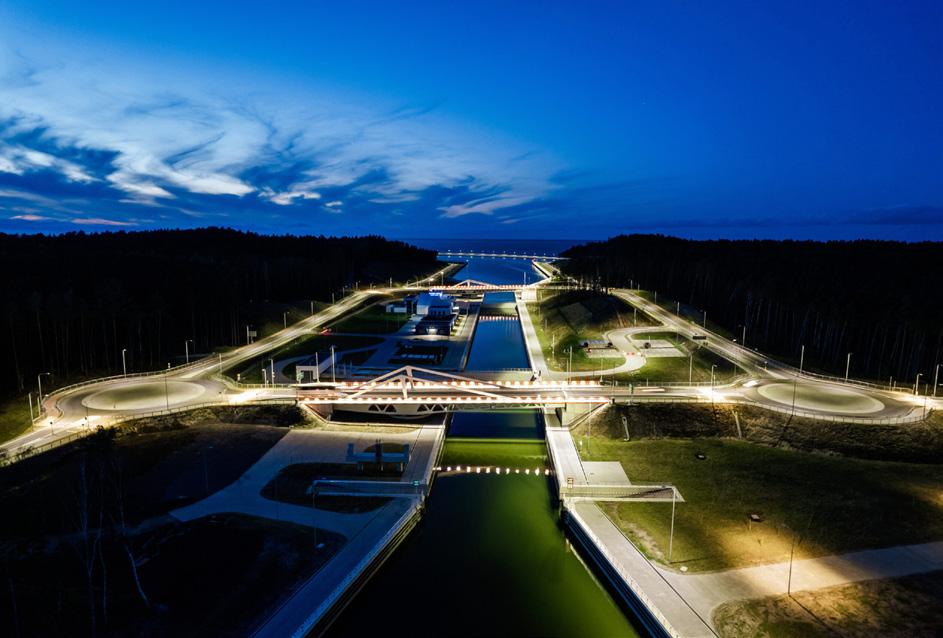
ordered another LHM 800. The largest and most powerful mobile harbour crane in Liebherr ’s portfolio will land in the Danish seaport in 2023. It will be Esbjerg’s second LHM 800 in a fleet totalling seven Liebherrs as of 2023. The newest machinery will be used for handling the evergrowing wind turbines. LHM 800 can alone lift 308t. In tandem mode, using the Sycratronic system developed in co-op with the Port of Esbjerg, up to 616t can be pulled. Importantly, tandem lifts make it easier to handle long cargoes, such as rotor blades that can measure over 90 m in length. Sycratronic is a computerised assistance system for operating two cranes by one operator. The solution monitors the operations to avoid overloads and compensate for the displacement of components being loaded. “Our competency lies in break-bulk and in having the capacity for tandem lifts above 600 tonnes, which is necessary not only in the on- and offshore wind market but also in supporting production in the hinterland,” Dennis Jul Pedersen , the Port of Esbjerg’s CEO, commented. Some four-fifths of Europe’s installed offshore wind energy capacity has been shipped out of Esbjerg. The port handles more than 0.5mt/year of wind turbine components.

Also in July 2022, the Port of Tallinn said it would invests in a new quay in Paldiski . The authority will expend up to €53m in setting up a new 310 m long quay and adjacent 10 ha big yard in Paldiski South Harbour. The new infrastructure, slated for commissioning in the summer of 2025,
is meant to serve Estonian offshore wind farms, with the first to be ready in 2028. The new quay will also be used for military mobility purposes, as the project is co-financed (€20m) by the European Commission through the EstMilMob project. The new infrastructure will also be fit to handle ro-ro ships.
Too in July last year, the Deepwater Container Terminal Gdańsk (now bearing the Baltic Hub name) revealed that the Budimex-Dredging International consortium will construct the T3 expansion, increasing the terminal’s handling capacity by 1.7m TEUs to 4.5m/year. T3 will cover 36.5 ha of yard area and a 717 m long and 17.5 m deep quay wall. The new facility’s traffic will be handled by eight ship-to-shore cranes and 28 semi-automated rail-mounted gantries. Operationally, T3 will come online at the end of 2024’s first half, while the full commissioning is planned for Q2 2025. The consortium entered the construction site in November 2022.

The PLN2.0b (about €420m) investment to dig the Vistula Spit Canal was officially commissioned on 17 September 2022, allowing Poland to access its part of the Vistula Lagoon directly. Ships 100 m long (180 m for a set of barges) and 20 m wide, with a 4.5 m draft, can pass the new infrastructure (measuring 1,300 m).
The canal’s lock is 230 m long, 25 m wide, and 6.5 m deep. There are four gates leading to it. The investment also comprises two swing bridges. There is a sheltered harbour (1,000 m of east and 500 m of
west breakwaters made of x-block plus prefabricates) for vessels arriving from the side of Gdańsk Bay. For the Port of Elbląg (125.1kt of cargo traffic and 33.6k passengers in 2021) to serve larger ships, thanks to the Vistula Spit Canal, the banks of the Elbląg River will be restored and reinforced, and another swing bridge will be constructed. The final phase will involve dredging the port’s fairway. Earlier, ships sailing to and from the Vistula Lagoon had to pass the sea territory of the Kaliningrad Oblast, obtaining crossing permits. In early autumn of last year, the Port of Gothenburg got the green light for a deeper & wider fairway. The Land and Environmental Court granted a permit to deepen and widen the fairway (from 13.5 m to 17.5 m), strengthen the quay, and dispose of dredge spoil in a designated sea location. The Court, however, rejected an application for dispensation of contaminated material at sea. The Swedish seaport will carry out quay reinforcement and deepening of the dock. The Swedish Maritime Administration will deepen the fairway and remove dredge spoil (some 13m m 3 will be dredged). If all goes as planned, with construction works kicking off by 2022-end, the Port of Gothenburg’s Skandia Harbour will be able to welcome fully laden ocean-going 430 by 65 m and 17.5 m of draught vessels by 2026 at the earliest. The Skandia Gateway project is worth around SEK2.5b (€230m), with funding split in half between the Swedish Transport Administration and the Gothenburg Municipality.
Also just before 2022’s end, the Port of Helsinki made cold ironing available at the whole of West Terminal 2 , the seaport’s newest ferry terminal. The Finnish seaport now provides OPS at the city centre harbours to all liner traffic vessels visiting Helsinki regularly and mooring for longer. The port authority underlined, “Providing onshore power more extensively
than before is one of the most important measures in the Port of Helsinki’s carbon neutrality programme [making its operations carbon-neutral by 2025]. The greatest positive environmental impact can be achieved with regular liner traffic in particular, but in the future, OPS will be provided in Helsinki to cruise ships and cargo vessels as well.” Concerning the latter, the port
will provide OPS in its Vuosaari Harbour for Finnlines’ Travemünde traffic in 2023. According to the port’s Head of Sustainable Development, Andreas Slotte , “Shore power reduces the emissions of berthed vessels by 50-80%. This figure is probably closer to 80%, but we’re making a conservative estimate, as vessels are not heated with shore power during colder weather.”
When it comes to digitalising the regional transport & logistics industry, 2022 could very well be named the year of the digital twin. Starting in late winter/early spring, the Port of Esbjerg teamed up with the Californian global infrastructure advisory firm Moffatt & Nichol specialised in port planning to develop a digital twin for Esbjerg’s future offshore wind harbour. “Port Esbjerg and the supply chain in Esbjerg have vast experience in supporting offshore wind projects, but we need to simulate the future to plan optimally today, and for this we are excited to work with Moffatt & Nichol,” Dennis Jul Pedersen , the seaport’s CEO, said.
“A digital twin allows Port Esbjerg to simulate every operation in context to future projects and optimise the infrastructure accordingly,” Joshua Singer, Offshore Wind Lead with Moffatt & Nichol, explained the project’s target. After a year-long collaboration with Upteko, in June 2022, DFDS claimed to be the world’s first to introduce a drone support system as part of commercial ships’ equipment, with Selandia Seaways as the first to feature the innovation. The drone system is connected to advanced navigation and includes a charging station, lidars, a thermographic sensor, and a high definition RGB camera. The drone can fly 120
m up, live streaming to the captain on the bridge, using a neural network to post-process the streamed video and calculating the distance between objects around the vessel. In the future, the system will also be able to act as an extra set of hands when a person is in distress or if a fire breaks out on board the ship: should a person fall overboard, the drone can fly back and locate the person using its cameras, including a thermal one. “Using drone technology to support operations on board our ships have been an area we have been investigating with great interest. We are proud of this collaboration which will push large-scale utilisation of drones to solve a number of tasks. This

will in time result in improved efficiency and, more importantly, improved safety on board our ferries,” Mads Bentzen Billesø, Head of Innovation and Partnerships at DFDS, highlighted. The Danish Maritime Fund and ShippingLab/Innovation Fund Denmark supported the development of the technology.
In July 2022, the Aarhus-headquartered feeder & short sea container line Unifeeder chose ZeroNorth ’s full suite of optimisation services. The three-year deal will see 90 of Unifeeder’s vessels using services included in ZeroNorth’s platform, plus ClearLynx ’s bunker solution. The suite includes voyage planning & optimisation (including weather routing) and recommendations on bunker and vessel operations to lower fuel consumption and emissions. “In Unifeeder, we are gaining a partner that understands the urgency of the climate emergency and our mission to make global trade green, as well as the role that digital solutions can play to reduce the environmental impact of maritime operations whilst improving earnings […],” Jesper Bo Hansen, ZeroNorth’s Chief Revenue Officer, commented. Martin Gaard Christiansen , Unifeeder’s CCO, also said, “[…] Our green agenda includes setting efficiency targets and limiting bunker consumption to reduce our overall emission levels by 50% per container by 2040; an ambitious goal that we will be able to achieve by optimising efficiency across our operations with the support of industry-leading advanced digital technologies.”
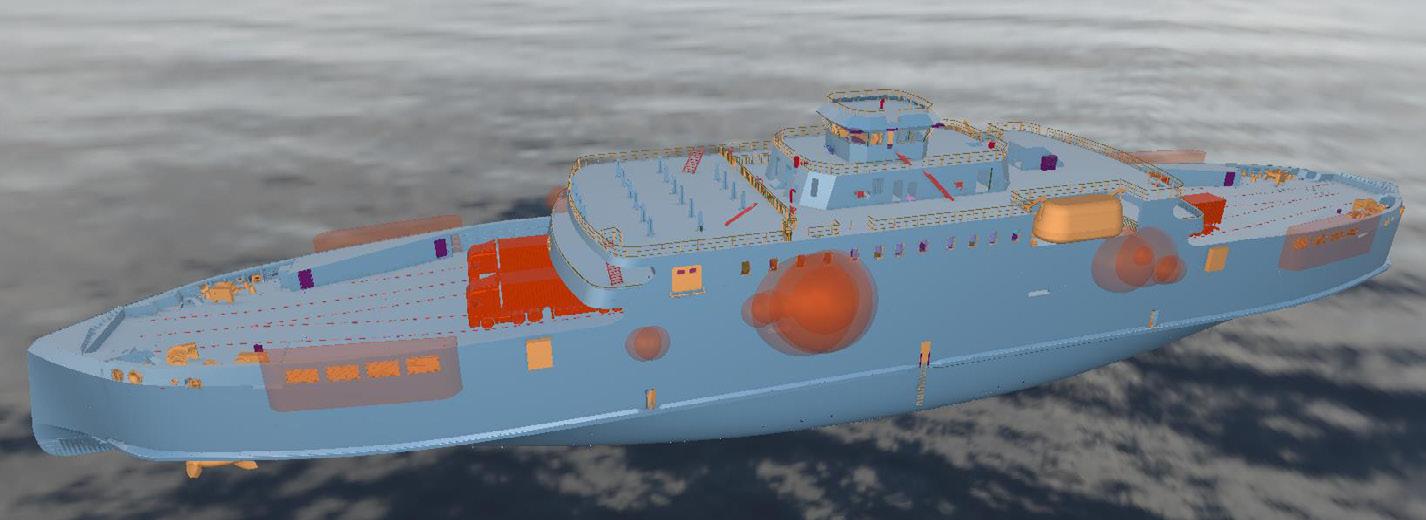
Like Esbjerg , also the Port of Gdynia will have a digital twin. To that end, the port authority commissioned last summer the consortium of HydroBIM , the BIM Association and scan3D to map the seaport’s areas digitally. The cloud platform will integrate geographical and spatial
data, allowing for creating past, present and future representations (in two and three dimensions) of the Port of Gdynia’s infrastructure. Additionally, the represented pieces, down to single objects, will have their data sets, including technical documentation. According to the port authority, having a common digital data environment will improve asset management, a.o., better maintenance. Importantly, the solution will have bankgrade cyber security.
In August of 2022, Scandlines also shared it will develop a digital twin – a climate one for its under-construction zero-emission ferry. Using the life cycle assessment (LCA) methodology, the Danish climate tech start-up ReFlow will develop a digital twin of the ro-pax. The detailed life cycle model will represent the ferry from her construction to the end of life, including installed equipment. Scandlines will use the digital climate twin to run simulations on the use of new green technology (already several maritime original equipment manufacturers have sent their LCA calculations). According to the ferry line and ReFlow, this “[…] makes it possible to cut the time and cost associated with a life cycle assessment of the products by over 80% compared to traditional manual approaches.” Rasmus Elsborg-Jensen , ReFlow’s CEO and Founder, also commented, “[…] It is our ambition to provide Scandlines with a granular understanding of the emissions associated with, not just the fuel use, but also the vessel itself, allowing for future ‘plug and play’ scenarios where new greener technologies can be assessed on the vessel before an investment.” The 147.4 by 25.4 m double-ended ferry, offering 1,200 lm and room for 140 passengers, is being built by the Turkish Cemre Shipyard . She is expected to enter
traffic between Puttgarden and Rødby in 2024. The newbuild will feature 10MWh of battery capacity, recharged in 17 minutes. Topping 2022’s digital news thread was the announcement from September that Latvia will develop a multimodal data digitisation & exchange platform. The Port of Riga is leading a project tasked with creating the integrated platform for sharing information between various private & public logistics supply chain actors. The authority also says the project will allow for the automation of port & logistics processes. “We are working on the digital transformation of port processes in order to introduce the principles of the smart port into everyday life by integrating several information systems that make the port a multimodal transport hub and allow information to move faster than actual cargo carriers,” Viesturs Zeps, Board Chairman of the Freeport of Riga, commented. He furthered, “Digitalisation of the port not only facilitates the port and the port companies’ cluster operation, promoting their role among the logistics players of the region, but also provides data for new solutions aimed for linking the city, the city transport and other solutions.” The Digital Transformation of Port Management, Improving the Processing and Analysis of Transport and Logistics Data project is part of the Digital Transformation of the EU’s Recovery and Resilience Facility. The initiative is led by the Port of Riga, with the support of the ports of Ventspils and Liepāja (the Liepāja Special Economic Zone Authority), the Maritime Administration of Latvia , Latvian Railways , the Customs Administration of the State Revenue Service , and the State Border Guard . The project’s implementation financing amounts to €3.2m. The Latvian ports will carry out the maintenance and future development of the platform.
In late 2022, the Baltic Ports Organization’s (BPO) Board gathered for a stationary session in Rostock to discuss, among others, the challenges and plans for 2023, as well as liquefied natural gas (LNG) terminals and other energy projects in the region’s seaports.
The meeting was dedicated to exchanging views about the regional ports’ situation, especially in terms of the impact of recent geopolitical and economic events. The Russian war of aggression in Ukraine and its influence were the main topics under debate. LNG terminals and other energy projects in the Baltic Sea region
were also crucial in the session. The BPO 2023 activity plan was approved by the Board, with the focus put on several key events: the Baltic Ports Conference 2023 in Ystad, BPO for Climate 2023 held during Transport Week 2023 in Gdynia, the Ports 4.0 Conference in Riga, and the BPO Lunch Debate in the European Parliament. The Fit for 55 package will
also be an essential matter this year as it greatly influences the shape and future of the transport industry, including the port and shipping sectors.
A new BPO Board Member, Ulrika Prytz Rugfelt, the Copenhagen Malmö Port’s Chief Communications & Sustainability Officer, attended the Board meeting for the first time. Warm welcome!
Eight ports from across the Baltic – Aarhus, Gdynia, Helsinki, Klaipėda, Riga, Stockholm, Tallinn, and Ventspils – with the help of the Port of Hamburg have applied to the Connecting Europe Facility.
The Baltic Ports Organization initiated the proposed project as the first step of a more comprehensive initiative called Baltic Ports for Climate – OPS development, which aims to intensify cooperation between ports and other stakeholders to reduce greenhouse gas emissions in the region
The main idea behind the project is the further development and construction of port onshore power supply (OPS) facilities in the Baltic, expanding the already existing cold ironing network and providing electricity access to passenger vessels (ferry & cruise) likewise freighters (container).

The project concerns pre-investment actions (feasibility studies, market analysis, technical designs) on OPS in TEN-T Core Ports from seven Baltic countries. If the application gets accepted, the project will start in July 2023 and run until June 2025.
In late January 2023, the Baltic Ports Organization (BPO) and the Motus Foundation participated as partners in the Baltic Supply Chains for the Baltic Sea Region project (BSC in short) official launch meeting organised by Port of Hamburg Marketing, the initiative’s Lead Partner.
Ports are essential for global trade and prosperity, but, at the same time, they are the emission hotspots of pollutants through the freight traffic they handle and their own activities. Still, ports can be a pivotal factor in achieving European and national climate goals, also playing a critical role in future storage and onward transport of alternative fuels.
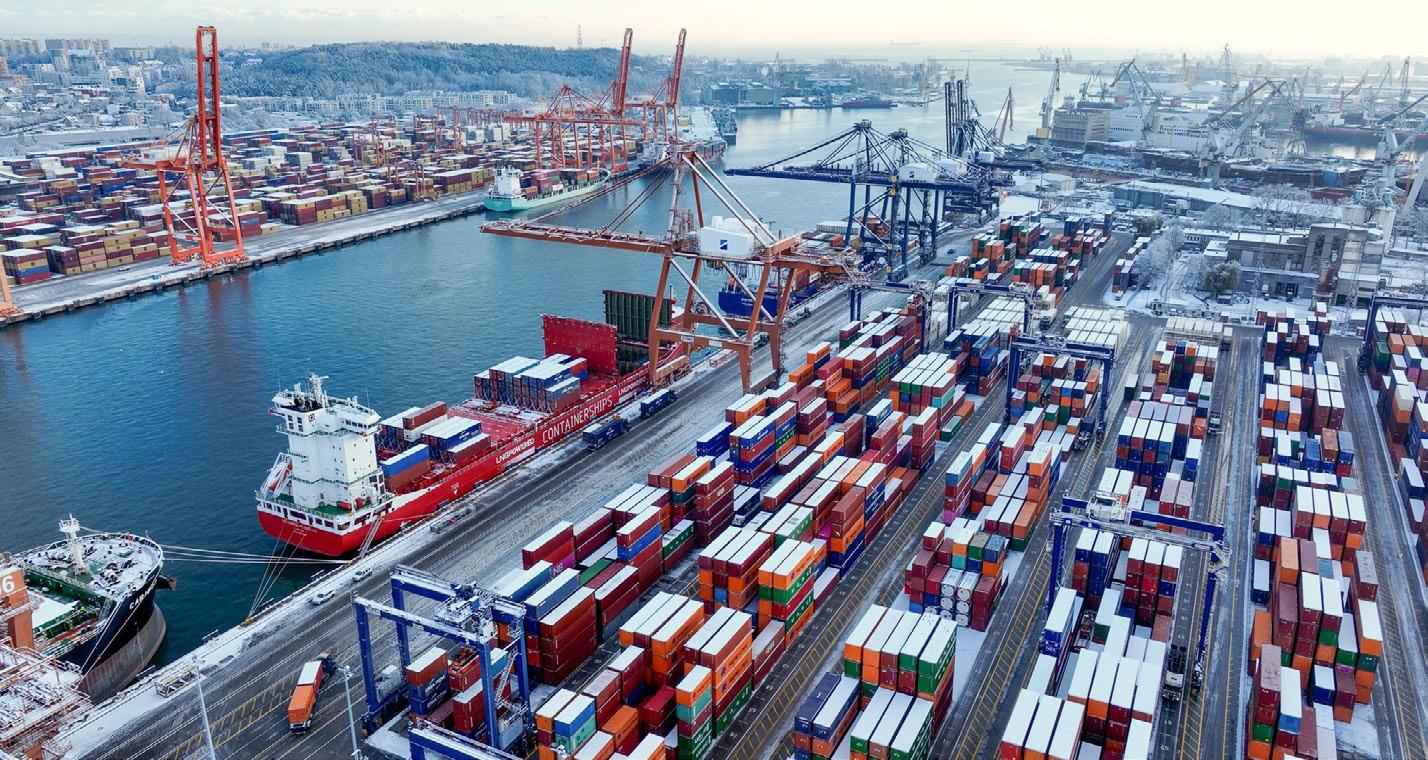
The BSC project supports port authorities and operators in implementing long-term measures to decarbonise their locations. The project follows different approaches supporting decarbonisation in ports: evaluating and piloting measures for the further electrification of handling equipment; forging strategies for providing, handling, and storing alternative fuel; and promoting more environmentally friendly hinterland
transport chains, with a focus on the development of combined transport.
At the end of January 2023, the threeyear, €4.6m-budget, 39-organisation-strong project got officially rolling with a partner meeting in Hamburg. The first working groups to implement the pilot applications and demonstrators were formed. BPO and Motus Foundation are responsible for the BSC project’s communication plan.
According to a recent technology-in-maritime report by the American Bureau of Shipping (ABS), a vision of an autonomous ship delivering goods across the globe, designed and monitored by artificial intelligence (AI) and powered by mini-nuclear reactors or hydrogen may soon be more than just a scene from a futuristic movie. Technology Trends: Exploring the Future of Maritime Innovation lays out the expected technological progress, future milestones and their potential in the maritime sector, along with a roadmap of expectations and objectives leading up to 2050 – and zero-carbon emissions.
The report organises future technologies into three major categories or trends: digitalisation, applied research, and clean energy transition. At the same time, it analyses key developments in, among
many, alternative fuels, green ecosystems, the blue economy, as well as selfdiagnostics and self-repair. Additionally, the paper includes proposals on how to deal with the adoption of new technologies in the safest and most expedient way
possible. “In leveraging technologies from other sectors while applying core commercial technologies like cybersecurity and streaming video, we can see what is possible for shipping and offshore – and work to deliver it,” says the ABS.
While maritime has heard calls for more rapid digitalisation of their oldschool systems for quite a time, the industry has recently made significant changes to its status quo. Those shifts include applying visualisation technologies, such as new tech ‘realities’ (augmented, virtual, mixed), whose potential to realistically and with detail showcase assets can be utilised in training, inspection, and maintenance. Together with multi-sensory systems, visualisation technologies can provide real-time information about vessels and offshore assets in cooperation with other advanced technologies, such as autonomous and remote-control systems.
The 2050 milestone in visualisation technologies is to adopt and master virtual immersive ship models. Therefore, around 2025, the global adoption of remote inspection systems and dashboards with 3D scanning, virtual personnel training simulators, and drone inspections should be in universal use. Next, around 2030,
visualisation tools should be improved with high-fidelity virtual simulators with AI-generated scenarios and checks with edge computing. “As visualization technology advances alongside other areas of digitalization, it could play an essential role in the implementation of autonomous and remote-control systems,” says Technology Trends. “An entire virtual crew could access a vessel remotely and manage or monitor various functions. When vessels become fully autonomous, a single person could virtually connect to a digital twin and manage the entire system.”
Next, under the umbrella of digitalisation comes AI. As AI presence is constantly growing and improving, the technology is quickly becoming part of everyday life: routinely utilised in home appliances, healthcare, or security systems. In maritime, this technology, together with the use of machine learning (ML) systems and conversation natural language processing (NLP), is transforming data analytics and decision-making to optimise it through the lifecycle of an asset. The goal by 2050 is to develop self-aware and cognitive systems. To get there, around 2025, monitoring with ML must be broadly utilised with edge computation and NLP. Next, close to 2030, the expected technological milestones include self-learning system robotics with human-level NLP, increased use of autonomous bots, adoption of selfcorrecting systems, and global application of quantum computing.
According to ABS’ report, “AI-derived autonomous systems could revolutionize the operation of vessels, especially during long transits. For example, a fleet of autonomous vessels could travel together in wakereducing formations to increase energy efficiency. Traveling in a tight formation would be possible because connected AI systems can make decisions much faster than humans, thereby reducing risk.”
Digitalisation also brought about the invention of digital twins, i.e., virtual assets. This technology allows for a digital representation (of a physical object, system, or process) that serves as a counterpart to be used for practical purposes (such as simulations and maintenance scheduling). For autonomous ships to replace crewed vessels, which is expected within the next decade, their digital twins will need real-life information on port infrastructure and its environment. The quality of data shared between the real and virtual models will be paramount. To achieve fleet-level control via digital twins by midcentury, somewhen in the mid-2020s,
real-time vessel monitoring with voyage planning and optimisation should become a norm along with day-to-day operational decision support and enhanced reliability, availability, maintainability, and safety.
In the 2030s, further development and use of self-learning digital twins should occur with data-seeking, environmental awareness, control of the physical asset, and self-replicating digital twins. “A vessel-based digital twin could eventually connect with twins across industries to integrate with cargo and port operations, transportation logistics and commercial operations to enable more efficient global commerce,” ABS experts say. They could operate as a single entity – a ‘swarm’ – predicting
and influencing each other’s behaviour to ultimately optimise the entire sector.
Digitalisation has also made autonomous technology possible, with functions permitting machines to take over the operational decision loop (monitoring, analysis, decision, and action) without human input. In maritime, autonomous technologies can improve safety on board vessels and offshore assets by taking care of high-risk operations. In the future, this technology can be used on fully independent assets (as complementary technologies advance, such as sensors and ship connectivity).
Trading with connected crewless autonomous vessels is the ultimate goal
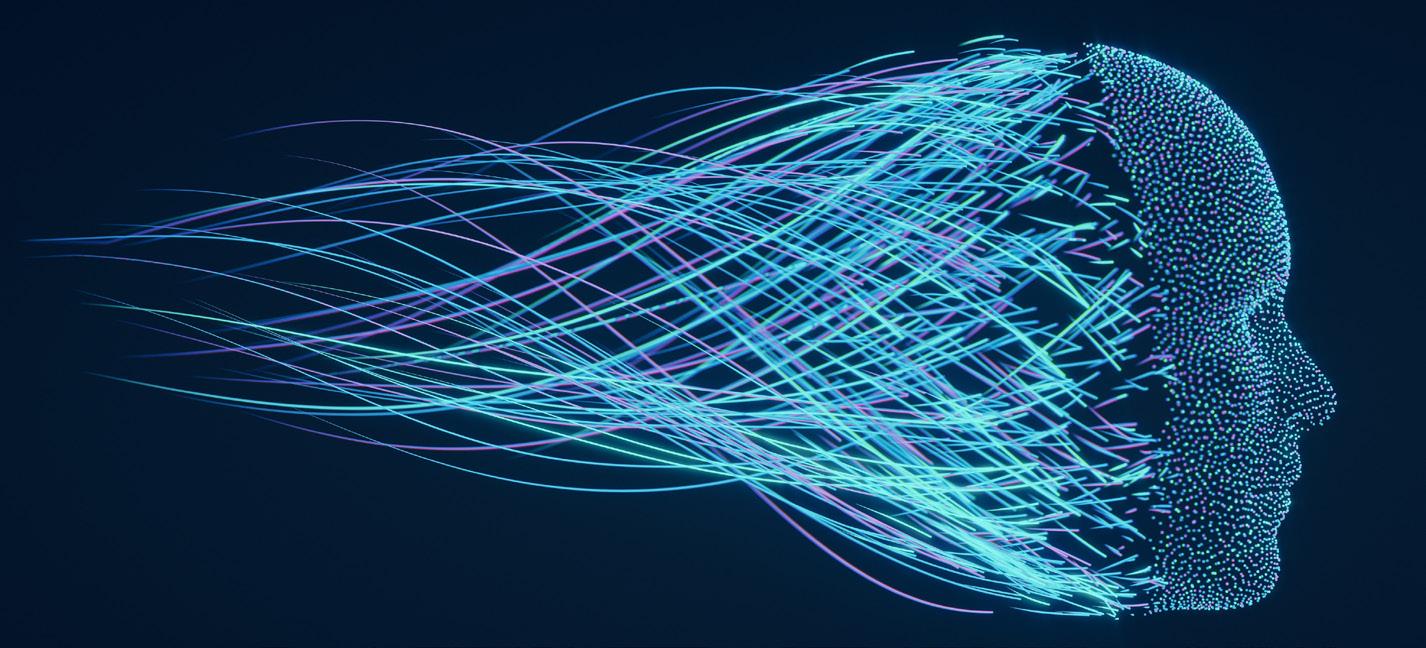
by mid-century in maritime. To that end, around 2025, the focus must be on ship connectivity infrastructure with intelligent and autonomous functions and increased support activity with low-orbit satellites. Near 2030, increased ship connectivity is expected, translating to enhanced broadband coverage, speed, and cybersecurity. Along with the advanced autonomous functions comes reduced crewing; therefore, emphasis must be placed on the diversification of seafarer knowledge, skills, and ability. “A full ecosystem of autonomous vessels, smart ports, smart yards, smart buoys and smart beacons could optimize the supply chain and reduce the risk of incidents at sea,” ABS points out.
Applied research, another essential future tech factor, describes a (usually) scientific, non-systemic way of solving specific, practical problems to help businesses,
organisations, or society. It is utilised in many complex maritime areas such as coastal exploration, shipbuilding, transport, or oceanic exploration.
Introduction and application of new materials are two areas where applied research will be fundamental: the more advanced and efficient assets become, the more they require advanced materials and efficient manufacturing. The objective for the 2040s is the application of advanced materials and processes throughout the sector. Getting there by 2025 will require implementing new material manufacturing methods, including onsite additive manufacturing (AM) for non-critical parts and applying high-magnesium steel (a wear-resistant material with excellent performance in harsh conditions). Around 2030, there should be the application of onsite AM for spare parts, adoption of lower-cost and fit-for-purpose materials as well as further development and application of self-healing materials.
Applied research is also needed in vessel performance. Here, the mid-century goal is real-time fleet performance optimisation. As such, by around 2025,
there must be performance optimisation at the component level with the help of multiphysics and multi-domain optimisation and virtual testing and commissioning. Moving on to the 2030s, performance optimisation at the vessel system level is the objective with further development and
utilisation of technologies such as fast solvers for high-fidelity models and advanced simulation-based decision-making.
Additionally, establishing a green ecosystem in the maritime, which is the 2050 milestone, will also rely on applied research. “The green ecosystem is the

infrastructure that supports and enables green transitions for manufacturers, shipyards, ports, shipowners and operators,” says the report while pointing out that consumers have become more environmentally sophisticated in recent years, paying more attention to the climate and social impact of the production process, materials, and product packaging. To move closer to a green ecosystem, by around 2025, the trend towards green ships (covering design, construction, operation, retrofitting/upgrading, decommissioning) must continue and further develop. In the 2030s, there must be an emphasis on all things green: infrastructure, stevedoring, logistics, in a word: whole transport corridors.
While the green ecosystem encompasses the maritime infrastructure, the closely related blue economy refers to the responsible exploitation, preservation, and regeneration of marine and freshwater ecosystems, utilising them sustainably for economic growth. In maritime, the 2050 blue economy objective is to become carbon-neutral. That means around 2025, the diversification in the use of ocean space must continue and develop, increasing the ports’ capacities to cater to other needs than pure cargo & passenger traffic, most notably the offshore wind (possibly sun too) energy industry.
The third and perhaps most obvious technological trend that ABS recognised as shaping the technological future in maritime is the clean energy transition. Firstly, capturing CO 2 at the source point is expected to play a leading role
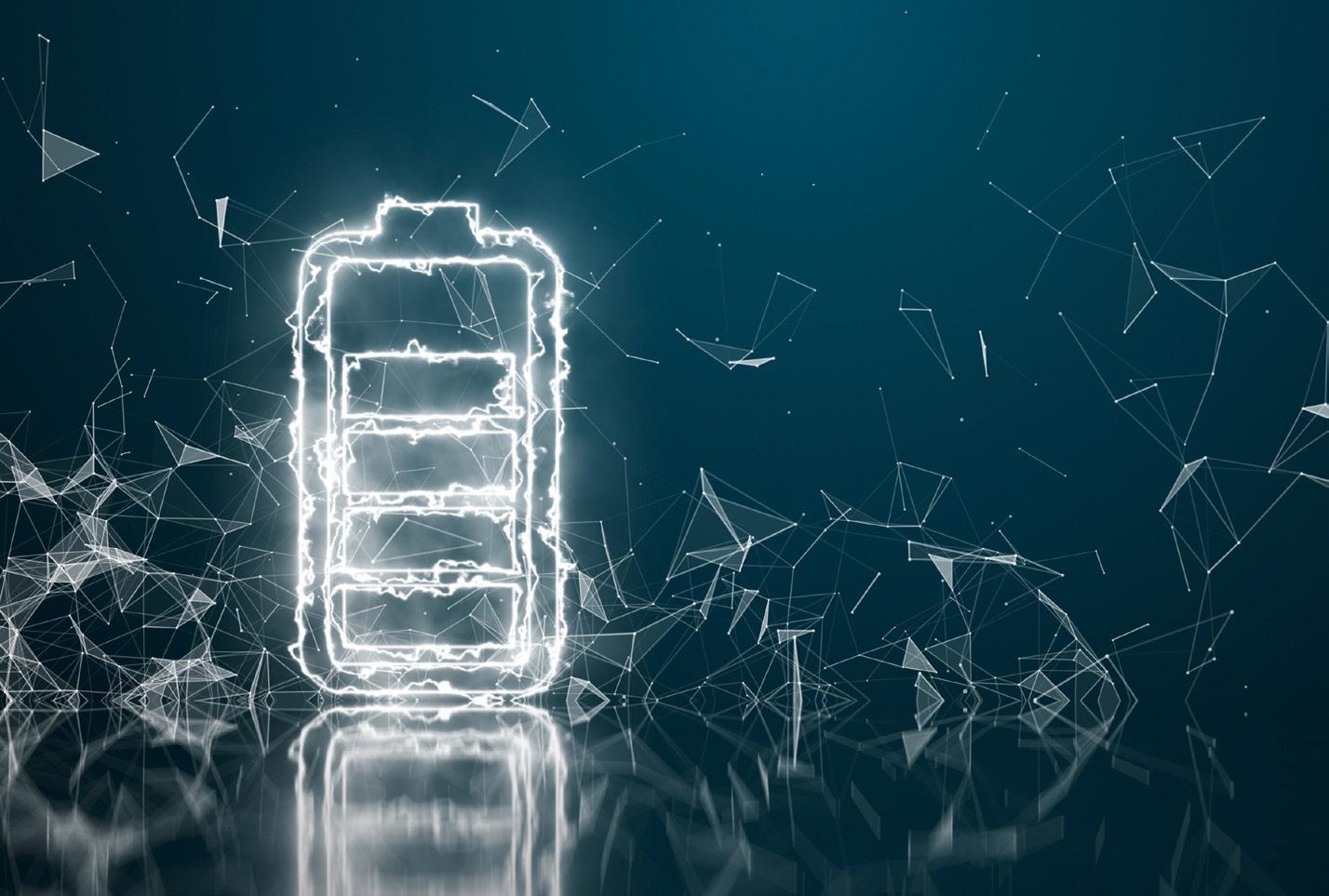
in achieving climate-related goals. It can be used, e.g., when producing alternative fuels (hydrogen, among others), to ensure their use is fully ecological. “Carbon capture has the potential to be an essential centrepiece in the global energy transition puzzle, enabling the continued use of hydrocarbons while the production of other low-emission fuels scales to meet industry needs,” reads the ABS report.
The 2050 maritime goal for carbon capture, utilisation and storage (CCUS) is to achieve a mature value chain: global adoption of the solution, escalated reach of its transport network, and expansion of the storage infrastructure. Around 2025, research and early adoption should be taking place, including commercialisation of amine-based technology, installation of onsite/onboard capture units, and direct air carbon capture. In the 2030s, regarding technology and infrastructure, there should be the utilisation of solid pellets and storage in empty oil or gas reservoirs and natural caverns. “An increase in onshore CO2 capture plants and the use of onboard CCUS systems can play
a pivotal role in setting the industry on the path to a clean and sustainable future,” say the authors of Technology Trends.
Also of the essence in the energy transition will be increased electrification, and in maritime, the goal by 2050 is to develop mature green infrastructure for it. Around 2025, the objective will be utilisation for short-haul by mastering: onsite/ onboard energy storage; port and offshore buoy charging stations; and batteries (lithium-ion and other types like ceramic). The 2030s will aim for limited deep-sea shipping with an expansion of charging infrastructure and improved onsite and onboard storage. Advanced energy storage systems (ESS) such as batteries, kinetic ESS, or supercapacitors offer operational solutions on their own as well as, much like with carbon capture, in producing green alternative fuels. It is expected that ESS will be increasingly used on board
vessels and offshore structures to achieve carbon reduction goals.
The transition will also depend on alternative energy sources that do not produce greenhouse gases (GHG). The maritime sector sets out to achieve widespread adoption of alternative power by 2050. That means that around 2025, there must be the investigation, further development, and early adoption of alternative energy sources such as hydrogen fuel cells, hybrid systems, and nuclear power. This will be followed in the 2030s by the continued adoption of hydrogen hubs and modular nuclear reactors.
Various solutions to reduce carbon emissions have been employed in recent years: to name the bio version of liquefied natural gas or blends containing fuels made of waste only. Still, it will take lowand later zero-carbon alternative fuels to achieve a reduction of GHG emissions from shipping which is consistent with
the International Maritime Organisation’s goals. As such, the 2050 objective calls for alternative fuel generation and adoption at scale. On the way there, around 2025, there should be testing and early adoption of alternative fuels such as ammonia, methanol, biofuels, and hydrogen.
Further, the 2030s will be the time to step up the use of alternative fuels and carbon capture, significantly reducing GHG emissions to arrive at dominant zero-carbon fuel generation. The report underscores that while, at the moment, hydrogen still poses challenges in terms of production, transportation and storage, it could potentially become the marine fuel of the future. “Investment in the complete hydrogen value chain, especially in producing blue and green hydrogen and relevant operational infrastructure, will be vital to scaling hydrogen as a true well-to-wake […] solution,” state ABS experts.
As our future presents ever more challenges, with seemingly every year bringing a new, unexpected, transformative event, the ongoing and increasing changes to climate do not seem to be bothered by pandemics, political
upheavals, or terrorist attacks on sovereign countries.
Therefore, even if distracted, we have no choice but to adapt and build upon existing technologies as well as fund and inspire innovation to reach goals necessary
to decarbonise global industries. And as the ABS report tells us explicitly, “Today, we stand at the precipice of not just a singular leap forward, but a watershed of emerging technologies that will revolutionize the marine and offshore industries.”
Access to affordable, reliable energy is a significant challenge for many countries and regions. For some, coal power has been a favoured solution, but with the international community now striving to reduce its reliance on carbon fuels, cleaner alternatives need to be found. As such, Bureau Veritas (BV) will combine its maritime expertise and land-side nuclear experience for the technology qualification of ThorCon’s 500MW molten salt nuclear power barge.
The tech company ThorCon’s concept is an advanced molten salt fission reactor that uses both thorium and uranium as fuel. The 500MW power plant will be integrated within the hull of a floating barge which can be towed to a shallow water site before being ballasted to rest on the seabed. The technology will then deliver energy to the power grid to meet land-based energy needs.
ThorCon plans to have its first fourthgeneration nuclear power barge operating in Indonesia (the country’s first overall) before the end of this decade. Their aim is to mass produce the barges so that their wide deployment can significantly contribute to global climate change ambitions. As a source of cheap, non-intermittent, carbon-free energy, it is expected to be particularly attractive for island and developing nations and economies currently dependent on coal. The barge will be lower in price, more compact, and have a shorter development time than traditional nuclear land-based power generation systems.
ThorCon is initially implementing its technology in Southeast Asia, where the need for low-cost dispatchable carbonfree energy is urgent. Providing a practical, clean solution to the region’s growing energy needs will be a meaningful step toward reducing greenhouse gas emissions and tackling climate change.
The molten salt nuclear reactor technology was first developed and tested in the
US around 50 years ago, but it has recently gained renewed interest as nations around the world look to reduce their carbon footprint. The International Atomic Energy Agency recently estimated that of over 80 projects involving small, modular reactors currently underway, 12 entailed molten salt fission technology. ThorCon’s project is scheduled to be the first to be operating at a commercial scale.
There are some key differences between ThorCon’s technology and traditional nuclear reactors. Unlike the former, the latter is a high-temperature reactor. This delivers a thermal efficiency of 46%, compared to about 33% for a standard light water reactor. It also cuts cooling water requirements by 40%.
In ThorCon’s solution, molten salt replaces the pressurized water used in traditional reactors to moderate the nuclear fission reaction and absorb the resulting heat. This heat is then used to generate steam to drive a turbine to produce electricity. This configuration enables much higher operating temperatures, leading to greater efficiency while also enabling completely passive safety. In other words, no electricity, valves or pumps, and no operator action will be required to shut down and cool the reactor in the event of abnormal behaviour. Due to gravity and other laws of physics, the plant will passively manage the shut-off. Moreover, using molten salt allows the reactor and its first heating transfer medium to operate at atmospheric pressure level (thus referred
to as a low-pressure reactor), which adds a safety feature compared to traditional commercial reactors.
The intention to use a modern South Korean shipyard for barge construction underscores the maritime industry’s expertise in manufacturing large & complex assets that can be transported to their final point of installation. The use of a modern shipbuilding yard is expected to result in greater efficiencies in the construction process compared to traditional land-based nuclear power plants. The barge construction should take one year, and ThorCon estimates that up to 20 such units could be produced annually per yard for a total power of 10GW.
The reactor itself will be designed and built by specialist nuclear-equipment design offices and manufacturers and engineered for encapsulation – enclosed safe compartmentalization allowing the replacement of depleted fuel – in the barge (such encapsulation means that ThorCon’s concept also falls under the small modular reactor category, in addition to the molten salt reactor one).
ThorCon selected BV to support it through the technology qualification process, both for the nuclear reactor itself and for its encapsulation and integration within the barge’s hull.
BV’s role is to support ThorCon in assessing and addressing risks to ensure the technology meets the highest safety standards. Experts from both BV’s Nuclear Certification Department and its Marine &
qualification of nuclear power barge draws on both marine and land-side expertise
Offshore Division will collaborate throughout the process. BV aims to use existing nuclear and shipbuilding codes where possible to build on existing technical knowledge and safety protocols.
A key area of work will be identifying the applicable standards, codes and class rules, potential gaps within those currently available, and developing new guidance notes and rules if needed. This will be a collaborative process between BV and ThorCon. The aim is also to work cooperatively with yards, designers, and manufacturers of the critical equipment and to potentially bring the regulators into the discussion so everybody understands the technology. Risk analysis will include carrying out a maturity ranking based on the consequences of a failure to people and the environment.
Standard classification activities will be expected on the barge’s hull and marine equipment. Still, at the interface between the reactor and these marine systems, the collaboration between BV’s marine and nuclear teams will provide
the highest added value. As an example, several layers of stainless steel will be used for the containment system. The layers will be passively cooled and remain below the steel’s tolerance levels. Welding will be a critical consideration to reduce the risk of system leaks, and the class approval process will set expectations in terms of qualifying welding procedures and the welders. Material choice will also be critical to ensure strength and corrosion resistance.
As a class society, BV is used to dealing with complex assets. After all, the shipping industry is about building self-contained autonomous units transporting, in some cases, dangerous products in bulk while resisting harsh sea conditions and providing the necessary power from different fuels (such as in dual-fuel units). This experience, coupled with the national and international regulations for nuclear power, will ensure that the qualification of components satisfies technical safety requirements, likewise, the public perception of risk.
It is anticipated that the technology qualification process will take a minimum of three years. If successful, the deployment phase would require an additional two years. The goal is to provide 500MW of electric power to the grid in 2029. The scope of the agreement between ThorCon and BV includes the potential development and deployment phases once the technology qualification is completed.
ThorCon has entered into discussion with the Indonesian province of BangkaBelitung, the State Electricity Company PLN, and the Nuclear Energy Regulatory Agency BAPETEN regarding potential sites for the demonstration and the final installation of the first 500MW power plant. ThorCon has also worked with the independent Spanish engineering consulting firm Empresarios Agrupados Internacional to assess the design with respect to the effects of earthquakes, tsunamis, floods, and extreme weather conditions.
This project could be a stepping stone to other applications, such as the generation of hydrogen offshore and even nuclear ship propulsion. It is also an example of how maritime and land-based expertise can come together to ensure safe innovation, from early concepts to their industrial application, on a technology that could bring clean energy to millions.


Bureau Veritas is a world leader in laboratory testing, inspection and certification services. Created in 1828, the Group has 80,000 employees located in more than 1,600 offices and laboratories around the globe. Bureau Veritas helps its clients improve their performance by offering services and innovative solutions in order to ensure that their assets, products, infrastructure and processes meet standards and regulations in terms of quality, health and safety, environmental protection and social responsibility. Visit group.bureauveritas.com to discover more.
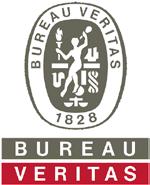
ThorCon is a private company – whose founding shareholders include ship design and nuclear engineers – that develops, licenses, and operates small molten salt modular reactor power plants built into large hulls in shipyards and floated to project locations where the plants will be hooked into the power grid. Go to thorconpower.com to learn more.

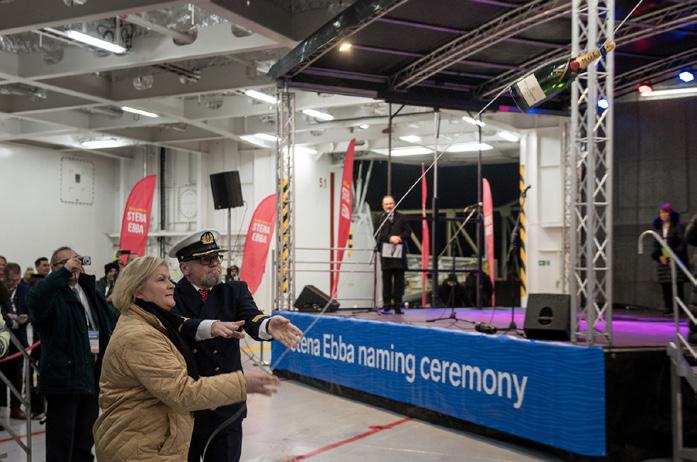
 by Przemysław Myszka and Przemysław Opłocki
by Przemysław Myszka and Przemysław Opłocki
Invited by Stena Line to partake in the christening of Stena Ebba, the sister ship of Stena Estelle serving the Gdynia-Karlskrona crossing from September 2022, we boarded the spanking new ro-pax at the Port of Gdynia’s Public Ferry Terminal on 10 January 2023. We did it much in the fashion of last year’s BTJ Trip \ Sweden, as nothing feels better than experiencing first-hand the Baltic Sea region’s transport sector than taking a cruise ferry!
That said, the voyage to Karlskrona was a bit ‘bumpy:’ the waves swung us from one side of the corridor to the other on our way to chunk down at least some breakfast before disembarking for an excursion organised by the Swedish ferry line. Ashore, it was lovely weather for ducks. Yet, as Douglas Malloch wrote in his poem Good Timber : “[…] The stronger wind, the stronger trees […] The more the storm, the more the strength […],” so we valiantly shrugged off the cold and rain, admiring the charm of Scandinavian architecture & atmosphere, among others, a Lutheran church (so distinct in its minimalism!).
We were no strangers to the coastal town, but the last time we were here, in early the autumn of 2022, we only saw the Maritime Museum from the outside. And by all means, it was the culminating point of the trip, a splendid foretaste of what could be experienced there in fullness, should one expend an entire day to go through all the exhibitions. After a dainty lunch at the museum, we headed back to the Port of Karlskrona’s ferry terminal for the ‘main course’ of the trip.
Because it continued to rain cats & dogs, the naming ceremony was unique – in that it was celebrated inside Stena Ebba on her car deck. The event gathered dozens and dozens of Stena Line members, its clients, partners, friends, and the media. Ulrica Messing, the Governor of Blekinge County (a seasoned politician who was a member of the cabinet in 1996-2006, a.o., heading the infrastructure ministry), became the godmother – and the choice couldn’t be more fitting, as it took a lady of strong character to crack open the champagne bottle in these singular circumstances.
Niclas Mårtensson, Stena Line’s CEO, commented from the podium, “The addition of our new modern Stena Ebba ferry in the South Baltic Sea is Stena Line’s response to customer demand in a dynamic economic area that continues to grow. We have operated the Gdynia-Karlskrona ferry route for more than 25 years, and with our new E-Flexer ferries, we will enable our partners to expand their business through enhanced access to European markets and supply chains.” Worth mentioning is that during this quarter of a century, some 11 million passengers, more than two million ro-ro cargo units, and almost two million private vehicles travelled between the two seaports aboard a whole host of Stena Line’s vessels.
Next was Marek Kiersnowski, the company’s Trade Director Baltic Sea South, who added, “Today, with the inauguration of Stena Ebba on the Gdynia-Karlskrona route, as well as the earlier introduction of its sister ship Stena Estelle, we are beginning a new phase in the development of our region. We are pleased to be able to offer our customers the most modern vessels in this market. The modernisation of our fleet will enable a significant capacity increase, which is important not only for our customers and us but also for the entire region and the countries we connect.”
After these speeches, Mårtensson presented Adam Kędziora, the Captain of Stena Ebba, with a symbolic steering wheel, wishing him and his all-Polish crew fair winds and following seas. The car deck part of the event was topped with a show of lasers, flamethrowers, and fireworks, accompanied by Adele’s Rolling in the Deep
Afterwards, we all headed for the gala dinner, which deserves separate applause because of the split menu that included vegan alternatives, much appreciated by our ‘plant-based’ Chief Editor (the other Przemek hailed the exceptional wine selection). Besides the food & drinks, more speeches followed suit, including by Dan Sten Olsson, the CEO of Stena AB and Stena Line’s Owner. He underlined that shipping isn’t a business for the faint-hearted and that constant
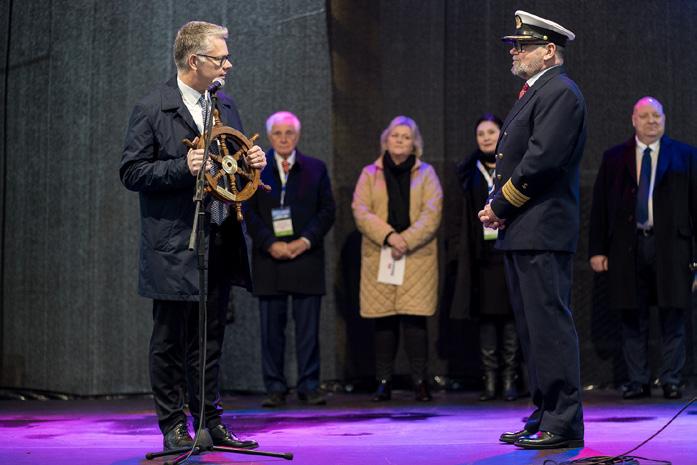
progress is required to keep moving. As such, he also highlighted that Stena Ebba is the 100 th vessel designing in which he took part. Mårtensson, Kiersnowski, and Capt. Kędziora took the stage, once again underscoring the development of the Gdynia-Karlskrona service and its importance – lately, too, for aiding Ukraine in its fight and Ukrainians in crossing the borders. Another honorary guest of Stena Line, Joanna Hofman, Ambassador Extraordinary and Plenipotentiary of the Republic of Poland to the Kingdom of Sweden, thanked the ferry company for successfully bridging the relations between the two countries.
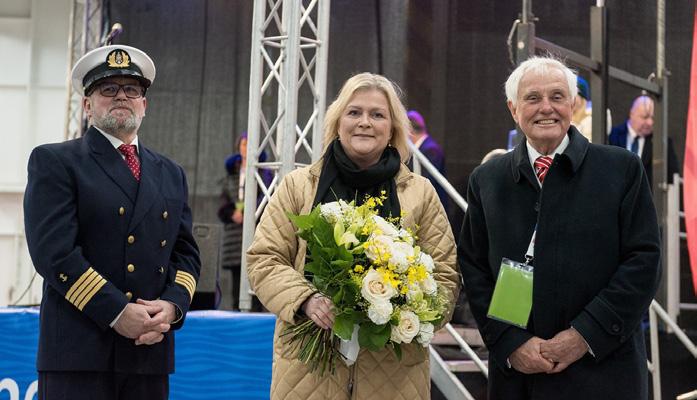

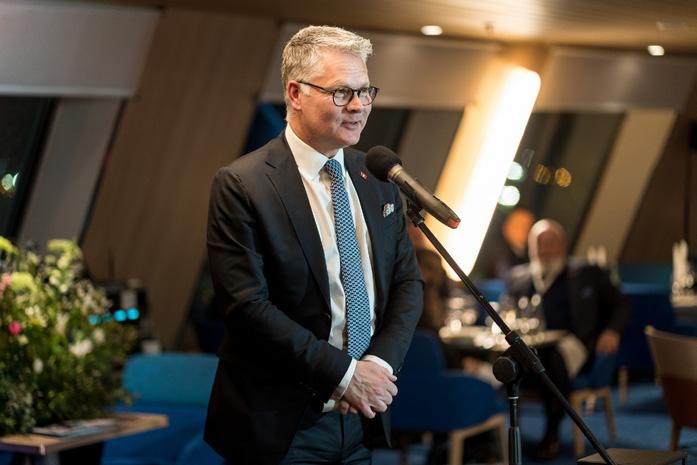


The reception and the after-party continued as Stena Ebba cruised in the Karlskrona archipelago and set her course for Poland. The next day, around half to ten in the morning, Stena Ebba berthed in Gdynia, ‘unloading’ us after this time calm sea and into finer weather. Tack Stena för resan samt evenemanget!
Stena Ebba, likewise Stena Estelle, are ferries of the latest iteration of Stena Line’s E-Flexer class, longer and more capacious than the previous design. Both GT 48k newbuilds are 240 m long and 28 m wide, offering room for 1,200 passengers (across 263 cabins) and 3,600 lane metres (lm) for wheeled cargo. Stena Ebba replaced Stena Vision on the GdyniaKarlskrona crossing, with the latter set to join Stena Horizon across the Cherbourg-Rosslare crossing in the summer of 2023. While the twins were constructed by China Merchants Jinling Shipyard (Weihai), Remontowa’s shipyard in Gdańsk gave them the finishing touches. Stena Ebba and Stena Estelle can connect to an onshore power supply, cutting their in-port emissions. Their engines are gas-ready, meaning they can be easily switched to liquefied natural gas (or its bio version) or methanol (with which Stena Line has rich experience, running Stena Germanica on it since 2015). Compared to Gdynia-Karlskrona’s third vessel, Stena Spirit (GT 39k, 2,214 lm, but more pax capacity), Ebba and Estelle can finish the crossing one hour faster, consuming around ten tonnes of bunker less per round-trip. On the land side, Stena Line, which owns the ferry terminal in Karlskrona, will upgrade it with new parking lots, gates, and gangway, with the investment scheduled for completion in 2024.
Stena Ebba, Stena Estelle, and Stena Spirit complement their differences. The newest ones offer – for want of a better word –a more ‘hygge’ experience (after all, there are hygge rooms with comfy chairs for those who value tranquillity). The interior design is subdued – elegant in that specific Scandinavian pale-ambient style – whereas the partying offer is more pronounced on board Stena Spirit (which also offers a spa). What we would definitely copy from the older ferry is the breakfast offer – noticeably richer (especially for vegans) and with coffee that fulfils the demands of such cup-of-joe-lovers like the
two of us. Other than that, it is one of the best ways to experience the Baltic Sea – aboard a snug cruise ferry.
Collectors usually gather things that please the eye, be they postal stamps, coins, crockery, or other miscellanies of masterly art & craft. That said, much of the time, these gems are kept hidden in albums or inside drawers. It seems only graphic works hanging on the walls can enthral us whenever. Enter framed enlargements of stamps sold by philatelic offices as well as photos or other graphics reproduced numerously for them to be sold in furniture or even by DIY stores. Whereas there is no accounting for tastes, there is also nothing like collecting obscure, sometimes shadowy one-offs!
Being an art collector may sound snobbish – but that’s only because of the news-buzz dazzling headlines about someone flush with cash buying a Picasso or other (half-shredded) Banksy. Believe it or not, another dimension of artful reality can be found outside Christie’s and Sotheby’s. We are talking about antique shops and flea markets with affordable (sometimes dirt cheap) works of forgotten professionals and capable amateurs, more often than not
sporting the ([un]fashionable1) realism current in art. And if you’re a collector of transport artworks, then realism is your rule of the game.
Interestingly, overland transportation never really made it into mainstream transport art. It is pretty tricky to find a painting of a locomotive or a railway station; though, some tried with gusto (just to mention Turner’s Rain, Steam and Speed – The Great Western Railway or Monet’s Arrival of the Normandy Train, Gare Saint-Lazare; yet, again, these are outside our ballpark). Hands down,
ports and ships are privileged – by the market, history, and the underwriter himself. As such, let me share my latest collectables, explaining why they bring more joy than a piece worth millions.
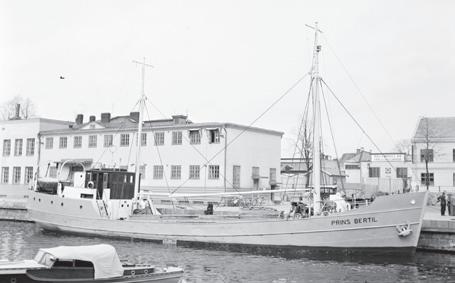
We start with two works acquired at auctions – one in Sweden and the other in Poland. First, the portrait (oil on canvas, 80 by 60 cm) by Eduard Edler (1887-1967) of the small cargo vessel Prins Bertil. The ship began as the German
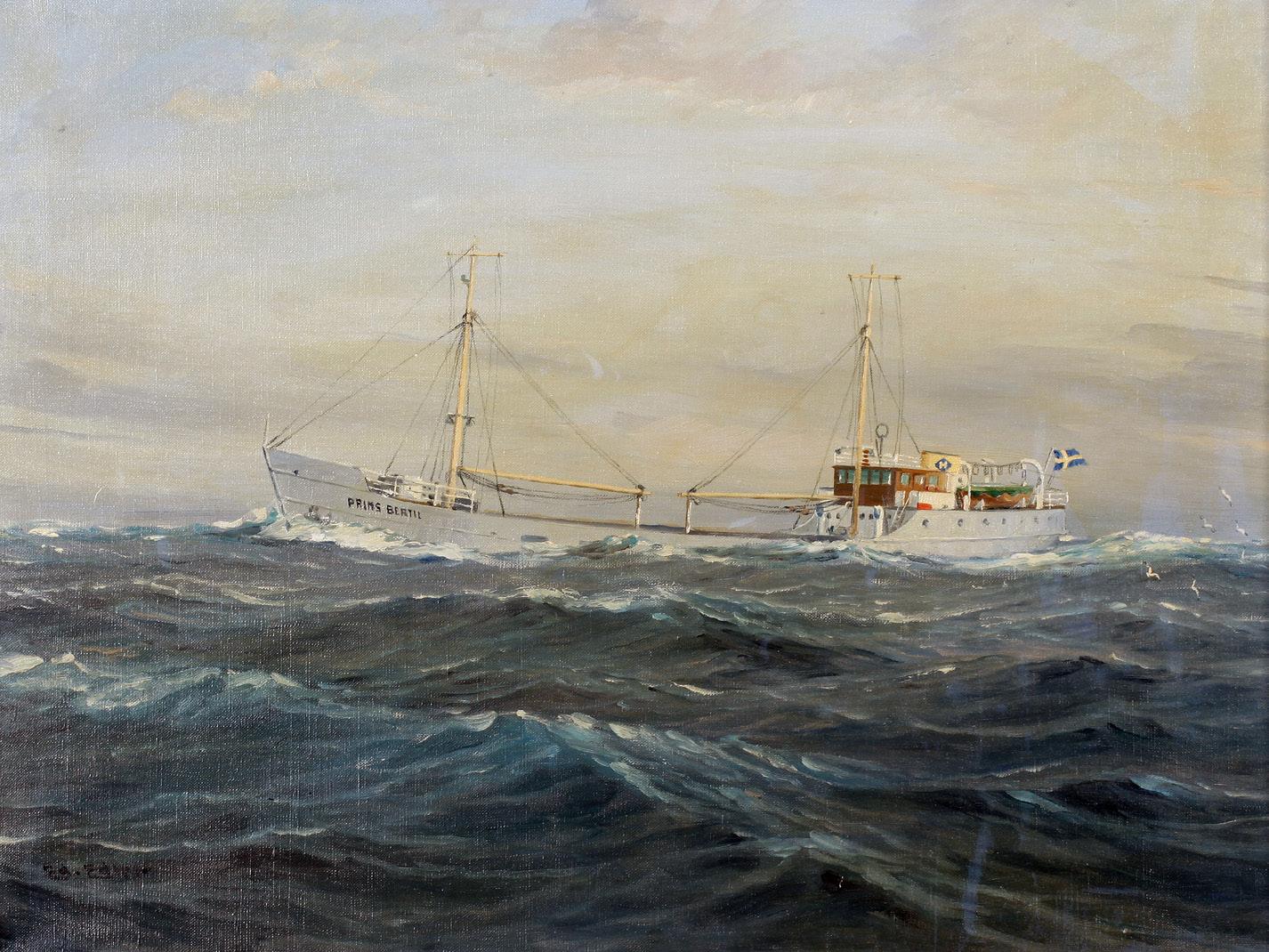
Memel (tonnage 224 grt), built in 1922 in Emden. It was bought by Arthur E. Henriksson from Gothenburg in 1954. The painting’s author, active in Hamburg and known for his ship portraits and posters for shipping companies, wasn’t immediately commissioned to immortalise the purchase. The work presents Prins Bertil after hull lengthening that took place, we think, in 1958 and which upped the grt to 286. Photos from the Sjöhistoriska Museet show that Edler enlarged the funnel and the shipowner’s mark a little. Taken together, it proves Henriksson was an ambitious and innovative owner. Fulfilling a chronicler’s duty, let’s add that Prins Bertil disappeared from the registers in 1967.
Next, we have a graphic (25 by 18 cm) employing two techniques (etching and colour aquatint) titled Collier Robur III. This artwork is doubly unique. Its author, the Polish painter and graphic artist Józef Mikołaj Pochwalski (1888-1963), active in Poznań and Cracow, probably took up the marine theme only once, pressing a single, experimental copy of Robur III (note the lack of
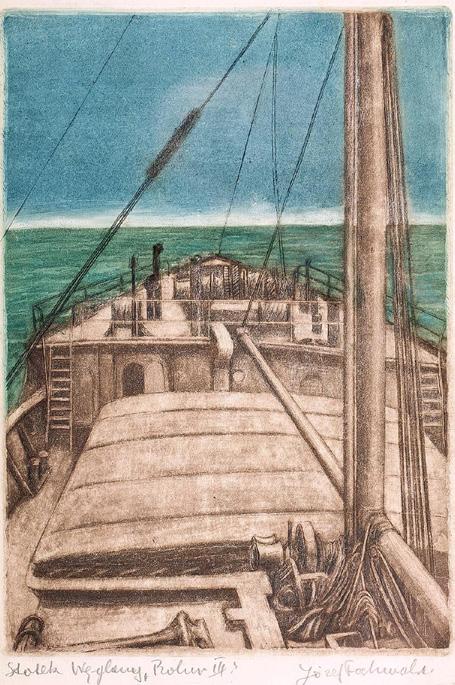
symmetry in the image of the hatch; Pochwalski possibly wasn’t happy with the result…). It is an open question whether he engraved the whole thing based on his own drawings done on board the ship or used a photo. Let’s just add that this view from the bridge seems to be the only artistic depiction of a vessel by Polskarob (an abridgement of the Polish-Scandinavia Transport Company), a Polish shipping company from Gdynia active in 1927-1940. Fine or not, it’s worthwhile to mention that the steamer Robur III (1,894 grt, 2,805 dwt) was one lucky ship! Not only did she survive the harshest winter of 1928 (postcard from Adam Daszewski’s collection) but also WWII – and with honours: Robur III was part of Atlantic convoys and the landing in Normandy! The vessel left the service in the late 1940s (as Chopin).

Flea markets in Poland can also be a source of exciting works from abroad (but don’t buy them in professional galleries because the margins can blow up several hundred per cent!).
Soren Melchior Hansen (1908-1977) painted mostly rural landscapes, homesteads and
farmed animals, less often seascapes from his native Jutland. Fishing boats from the Limfjorden beach in Nykøbing Mors (oil on board, 35 by 24 cm, 1946) is painted from a peculiar perspective: the painter looks towards the land. The viewers don’t see the water, which is, nevertheless, present (as we can almost sense the waves washing the artist’s feet). Maybe the audience of a summer fair in Gdańsk expected something else – dunno, a deluge of biblical proportions – suffice to say, the starting price of €80 was quickly dragged down to €20.
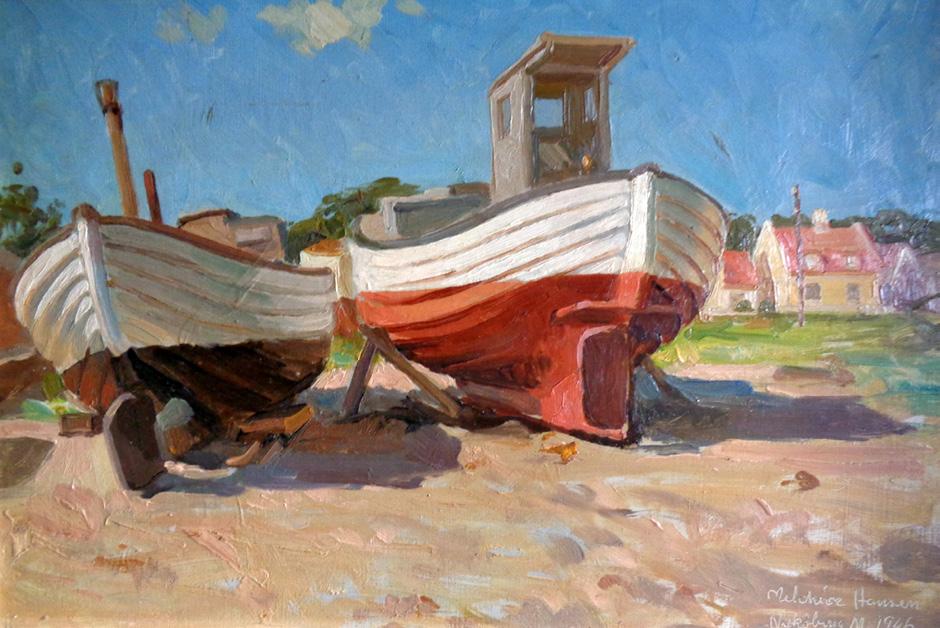
Little can be said about the last unsigned and untitled painting that depicts Värtahamnen in Stockholm with the Lidingö island in the background (oil on board, 54 by 45 cm). It is done in a style resembling Harald Ståhlberg’s port landscapes. Maybe it’s just a sketch? However, the ease with which the brush was used betrays a professional. And what about the release date? The neutrality markings on an ocean liner halted in the Baltic and carrying coal suggest that the work was created during WWII.
Imagine how much millionaires deprive themselves of all sorts of delight, not only aesthetic, by buying only fully certified works through intermediaries. After all, they can see them in albums and reproductions, unlike our dug-up treasures!
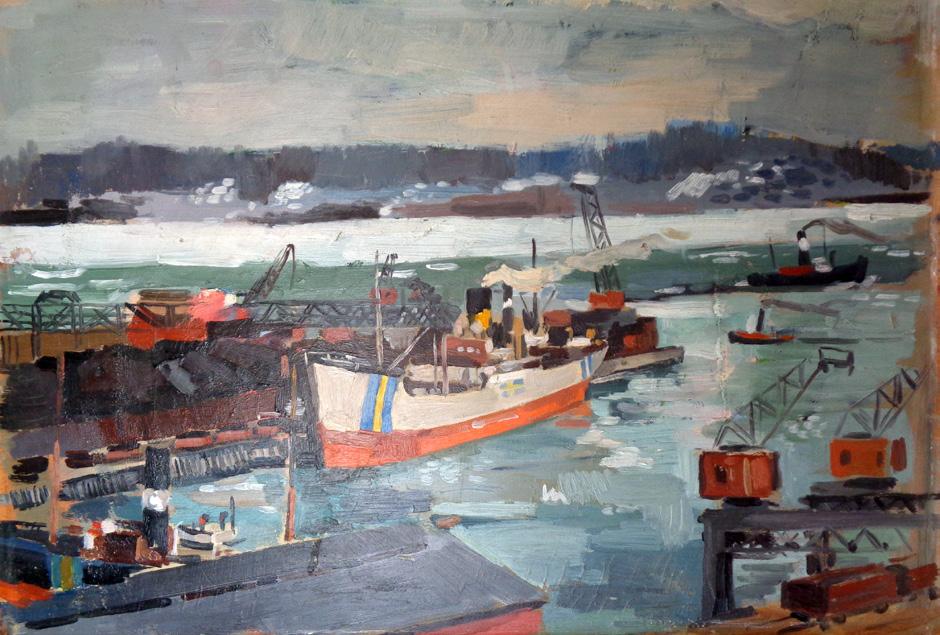
For a couple of years, the Finnish Norsepower has been successfully reintroducing (assistance) wind propulsion to shipping. Its Rotor Sail is a 21st-century version of the Flettner rotor, the 1922-patented invention of Anton Flettner. Buckau was the first ever vessel to feature cylindrical sails (15 m tall and 3.0 m in diameter), delivered by Friedrich Krupp Germaniawerft in October 1924. The retrofitted schooner made her first trip in February the following year, sailing from Gdańsk to Scotland performantly, despite adverse weather. In the early spring of 1926,
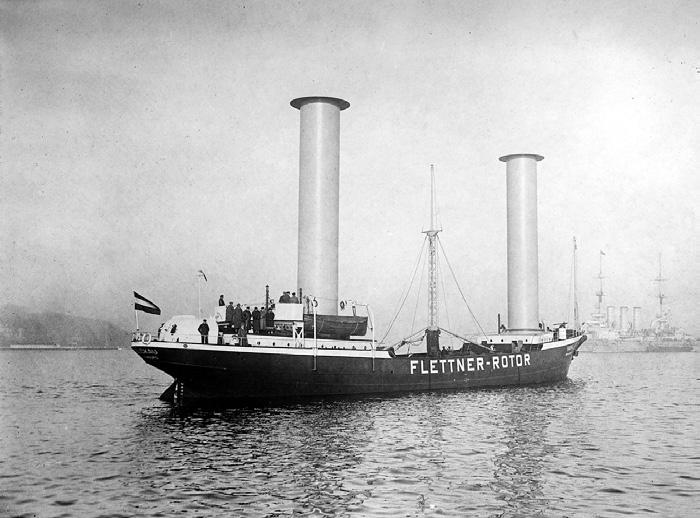
the rotor freighter (renamed Baden-Baden) crossed the Atlantic (New York via South America), using only 12t of fuel (vs 45t for a sail-less vessel). Next was Barbara (three 16.8 m tall and 4 mwide rotors), sailing in the Mediterranean in 1926-29. Flettner secured an order for six more Barbara-class rotor ships. Still, the Great Depression thwarted international trade, while cheap oil made the cylindrical sails’ fuel savings, thus ROI, not worthwhile. Barbara was sold and stripped of her sails, and we had to wait almost a century for the invention’s return (but with a vengeance!).
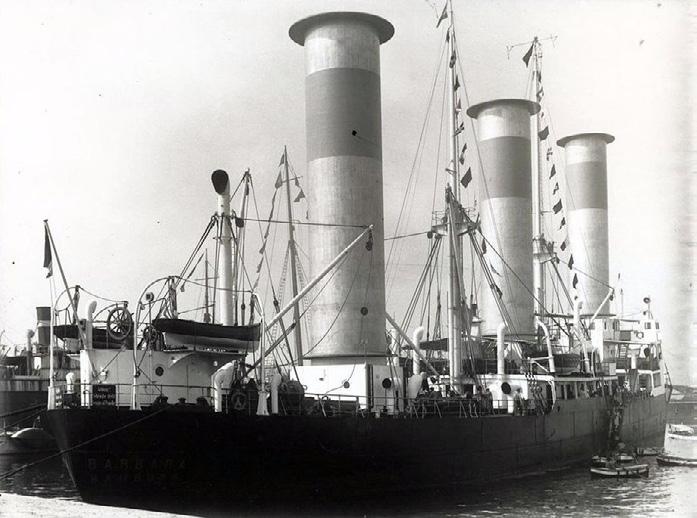
The monumentally brutal Oslo City Hall is famous thanks to, among others, its indoor murals and outdoor sculptures. Whereas guides depict and describe a healthy chunk of them, some smaller artworks remain in the shadows: their authors are anonymous and understanding the meaning of these cultural heritageheavy assets requires putting one’s imagination to work. For instance, look at the impressive ceramics showing a seaman’s family, where, we guess, the ship model symbolises the absent father. This piece of art from the early 1950s makes you think about seafarers leaving, at that time, their families not for weeks or even months – but for years (24-month contracts weren’t unseen back then). We salute the brave: men, likewise women and their children!

Sweden’s sole 20 th -century foreign military expedition and the only exodus of Swedish people occurred 105 years ago. On 15 February 1918, the country’s forces landed on the Åland Islands to protect the local Swedish majority from the violence of the Finnish Civil War and Russian soldiers’ misconduct. Shortly three other parties joined: the White Finns, the Red Finns, and the German Army as the last. The situation was complicated, but major fighting was avoided
– the Russians and both Finnish factions left Åland. Although the Swedish Army performed its police duties well, some Ålanders sought refuge in Sweden. The postcard edited in Hargshamn (posted on 2 March 1918) depicts passengers from Eckerö standing on ice (though not yet on Swedish soil). The image’s ships are the icebreaker Isbrytaren II (later Sankt Erik, preserved in Stockholm) and the passenger steamers Heimdall, Vineta, and J. L. Runeberg
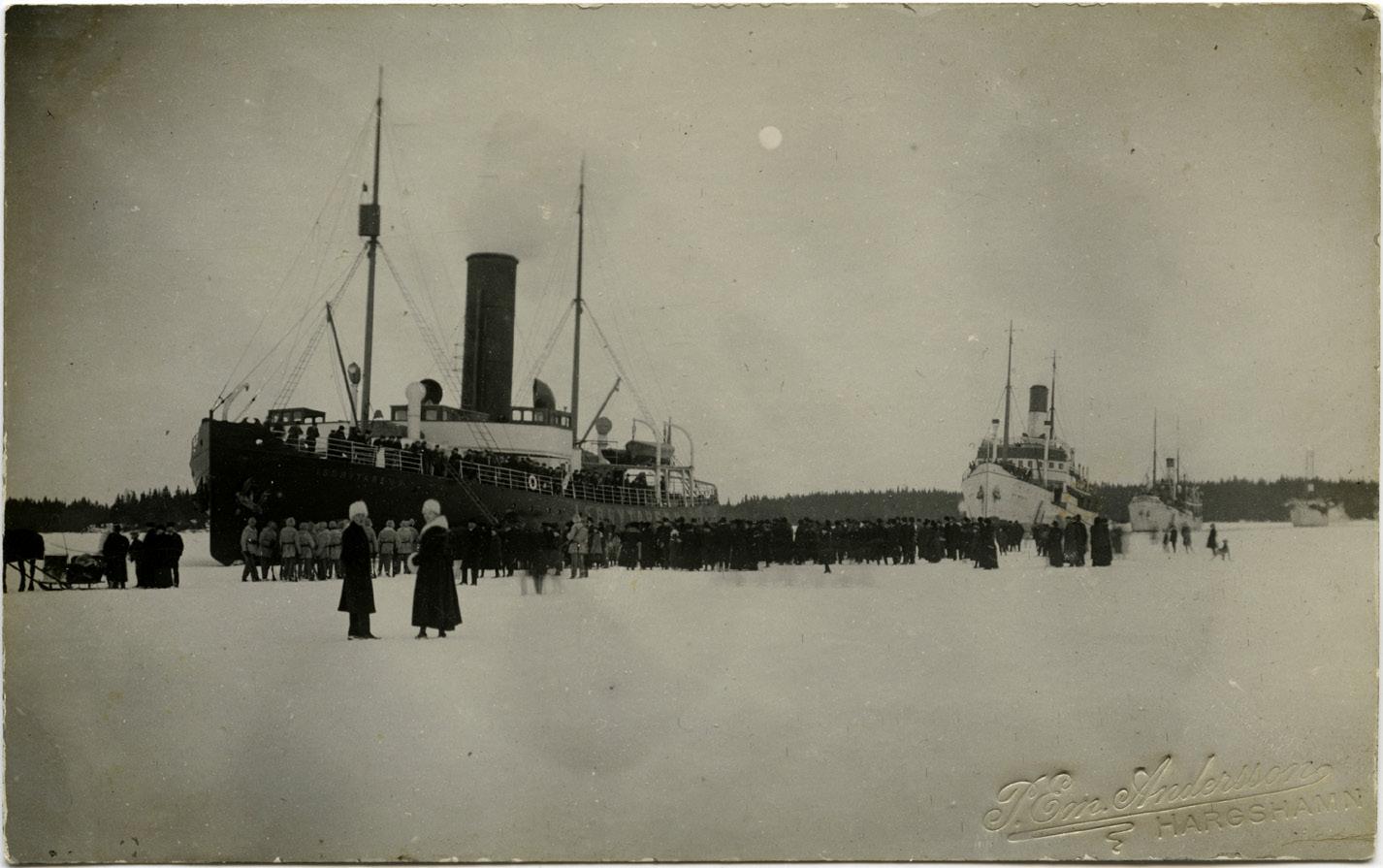
The
shows a De
beach. It reminds us of a forgotten summer hook from the 1930s: a floatplane waiting for a customer willing to go on a short flight over the Helsinki archipelago. For those having shorter purses, it was fun to spectate the noise of an aircraft engine and the waves caused by the floats (at least, that’s what we suppose…). This particular aeroplane was made in Finland under a British licence. Delivered in 1929 for the Finnish Air Force (as the eighth in a series of 21), it was quickly decommissioned and sold to a private owner. Eventually, it landed in… Australia! Equipped with a wheeled undercarriage and registered as VH-SSC, under the (un)changed name Pilvetar, it kept flying until the 1970s. Air enthusiasts say that the airframe still exists! That would hardly be a surprise – Finns can make sturdy things.
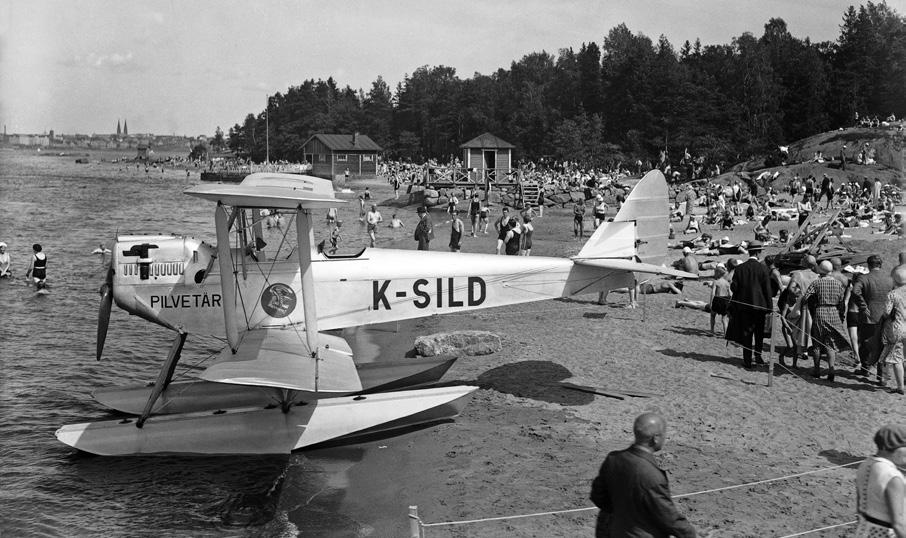
MAGDALENA BOSSON
The Ports of Stockholm’s CEO
The Board of Directors of the port authority running the harbours in Stockholm, Kapellskär, Nynäshamn, and Norvik has entrusted Magdalena Bosson with their future development. She comes from the position of Stockholm City Manager, having earlier worked as Transport Department Director at the Stockholm City Council, CEO at Familjebostäder, Deputy County Governor of the County Administrative Board of Stockholm, and the Municipality of Huddinge’s Deputy Director.
VINCENT CLERC
A.P. Møller – Mærsk’s CEO


A Bachelor in Political Science and Government from Business School Lausanne and an EMBA holder in Business and Administration from Columbia Business School, Vincent Clerc crowned his 17-year-rich Maersk career with a promotion to its new Chief Exec. He was most recently the company’s CEO of Ocean Logistics, previously serving as EVP and CCO, Chief Trade and Marketing Officer, VP Head of Trade (Pacific, then Asia-Europe services) and VP Head of Marketing of Maersk North America.
Baltic Exchange’s Chairman
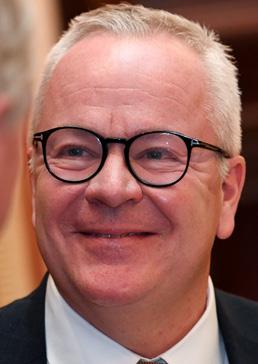
The Lithuanian transport company has set up its Polish office, entrusting Ellina Lolis with heading the new chapter. A graduate of, among others, the Warsaw School of Economics (in project management and HR), she comes directly from JF Hillebrand Global Beverage Logistics, where Lolis was recently Country Manager/Board VP at the company’s Polish branch. She is also the Founder of Lolis Consulting, specialising in cross-cultural business training.

The elected hereditary cross-bench member of the House of Lords, the former Lord Mayor of London, ex-Clarksons shipbroker, Managing Director of Gas at Clarksons, and Royal Navy’s Honorary Captain RNR, Lord Jeffrey Mountevans will chair Baltic Exchange, of which he has been an Honorary Life Member since 2016. Lord Mountevans also chaired, in 2015, the Maritime Growth Study, an inquiry into UK maritime competitiveness for the UK Department for Transport.
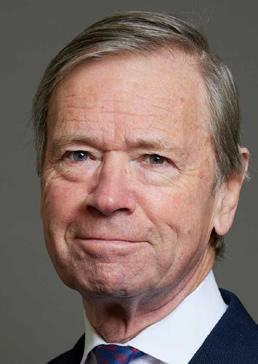
THOMAS NORDBERG
The Swedish Club’s Managing Director
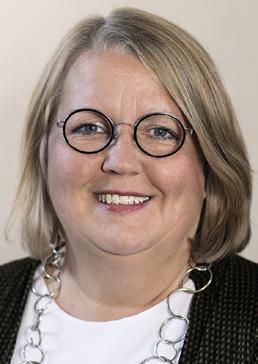
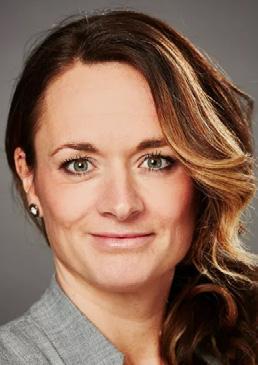
The Gothenburg-based international marine insurer welcomed Thomas Nordberg as its new MD on New Year’s Day (with him spending the last four months behind the scenes with the Club before hitting the ground running). A Master of Laws LLM and graduate of Oslo University’s Scandinavian Institute of Maritime Law, Nordberg has a solid pedigree in the marine insurance industry, having spent, as he says, a 30-year educational journey just to prepare for the role.
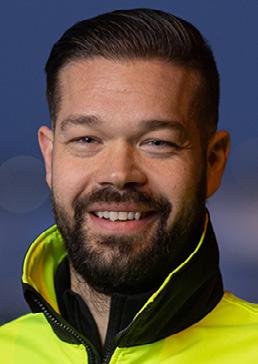
MALIN SCHÄFER
The Port of Helsingborg’s COO
A Master in Marketing from Lund University, Schäfer boarded the port’s team from Dole Nordic, where she was Head of Logistics Northern Europe. During her rich career, she worked, a.o., for Nowaste Logistics as Deputy Managing Director, Consafe Logistics as Sales & Marketing Manager Business Area Mobility, Greenfood Group’s Ewerman as Logistics Manager, and KNAPP – first as Marketing Manager and then Managing Director.
ESA PARONEN
The Port of HaminaKotka’s Technical Manager
An engineer with a degree in Building Construction Technology from Xamk – SouthEastern Finland University of Applied Sciences, Paronen moved from Sitowise, where he worked as Project Manager and Supervisor on infrastructure construction projects undertaken by, a.o., his new employer. Before, Paronen worked for Destia, first as Foreman and then as Site Manager.
MARCUS WINCENT
Kvarken Ports’ Traffic & Work Manager in Umeå
Following the development and increase in cargo traffic across its Swedish (Umeå) and Finnish (Vaasa) seaports, the joint port authority decided to strengthen the former’s team with Marcus Wincent, who will ensure that the port’s future capacity meets the growing demand, sea- & hinterland-wise. Wincent previously worked for SCA Logistics, where he worked around issues like planning and traffic & work control, also port-related.
